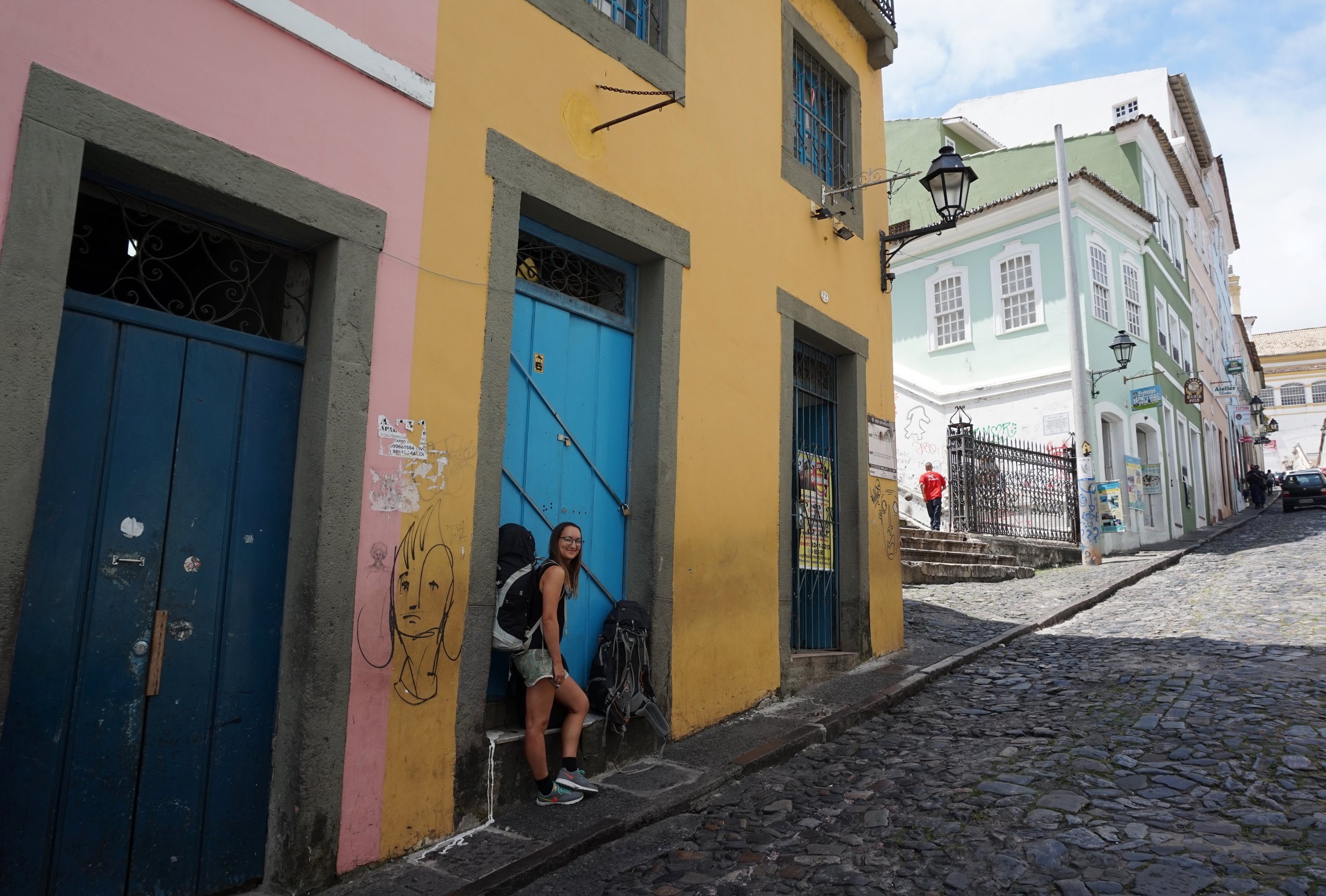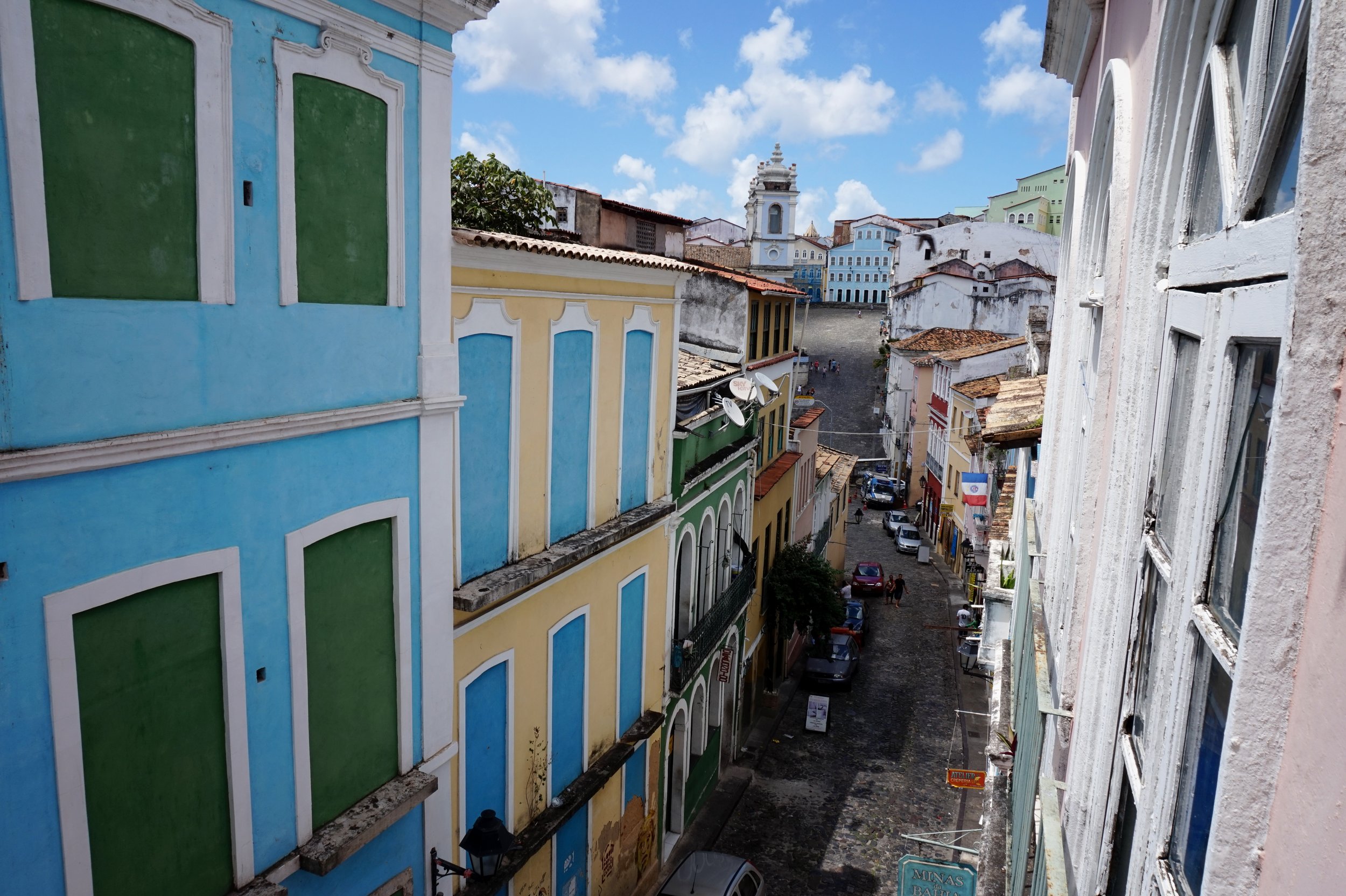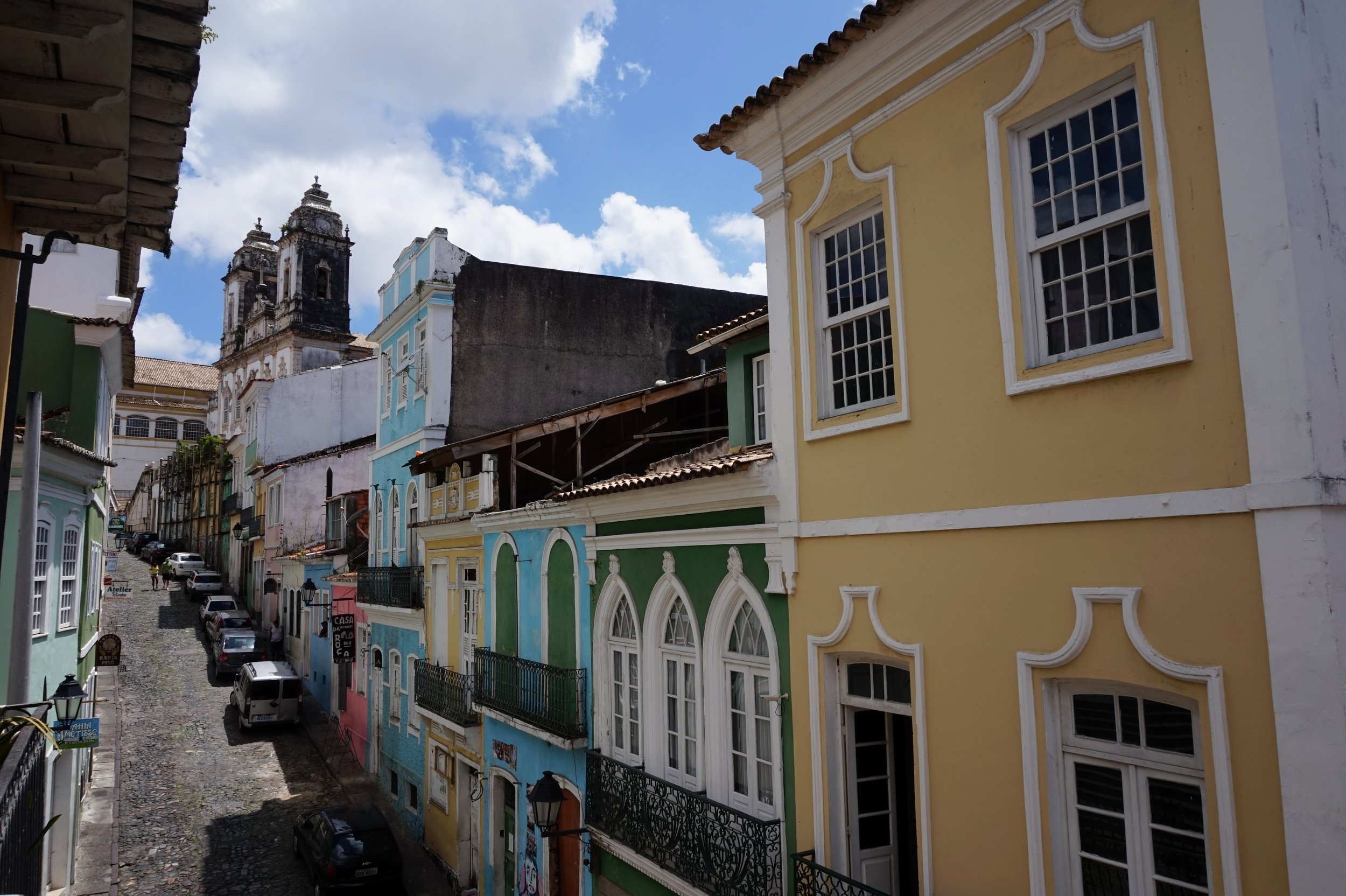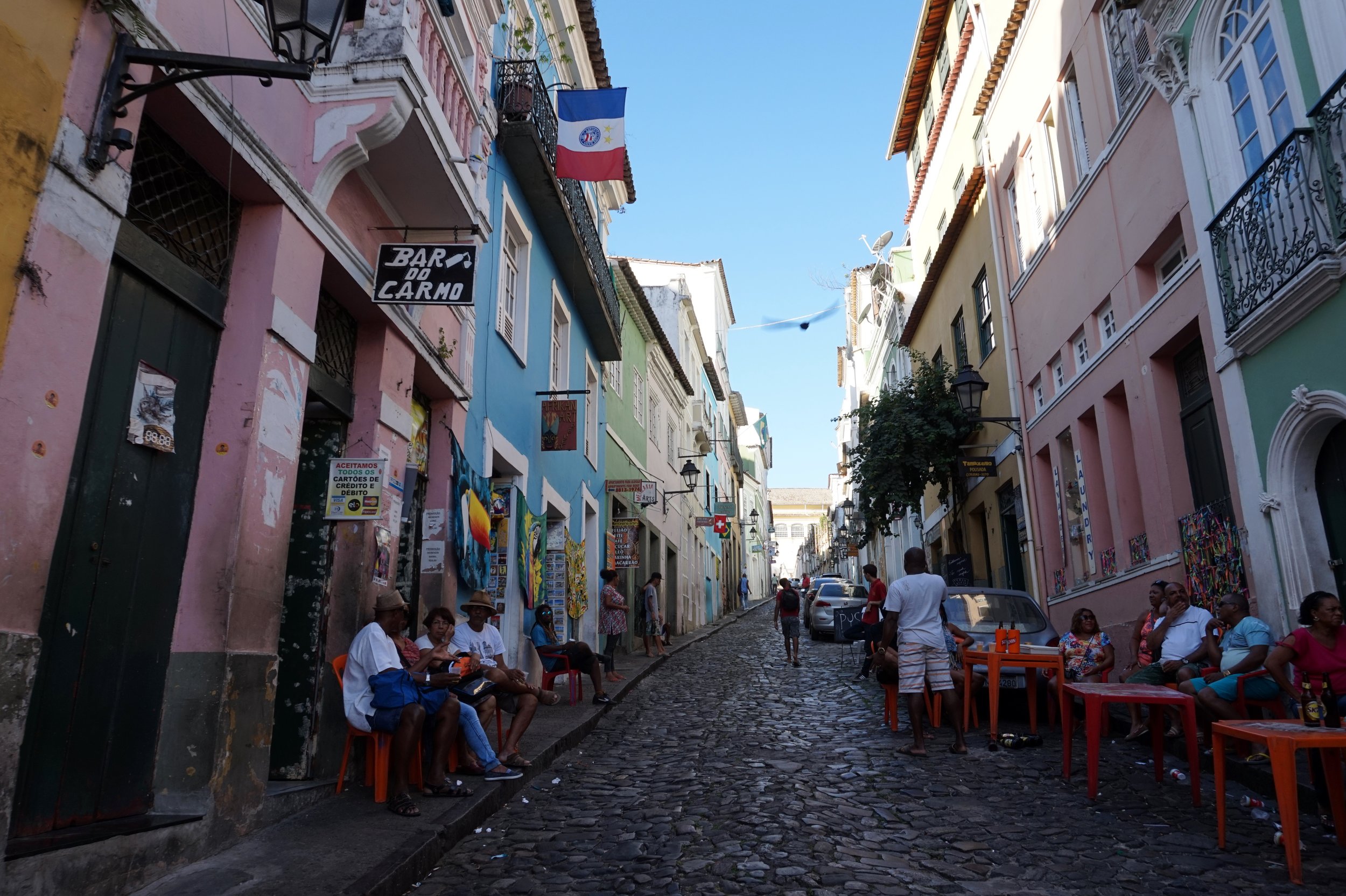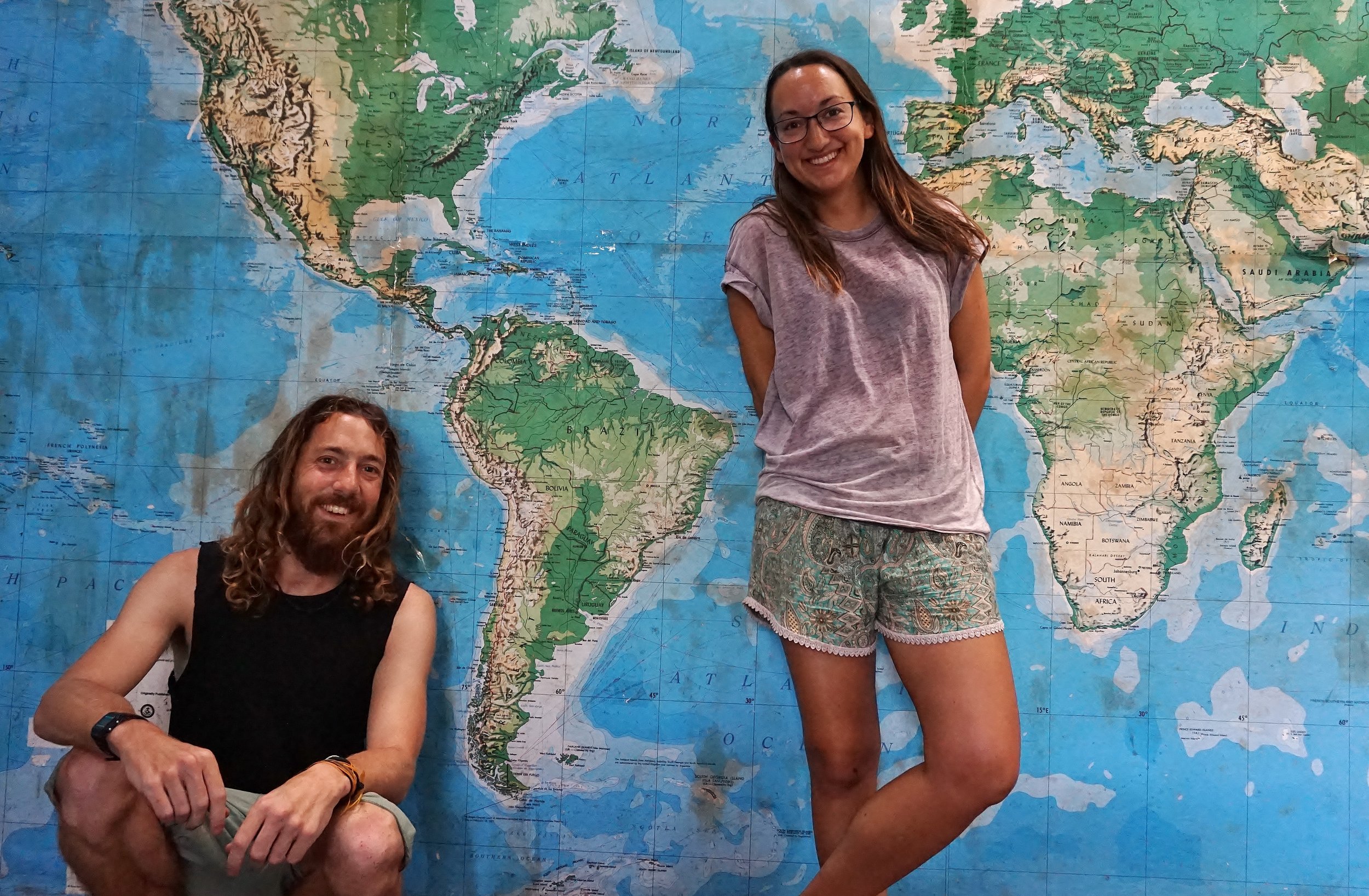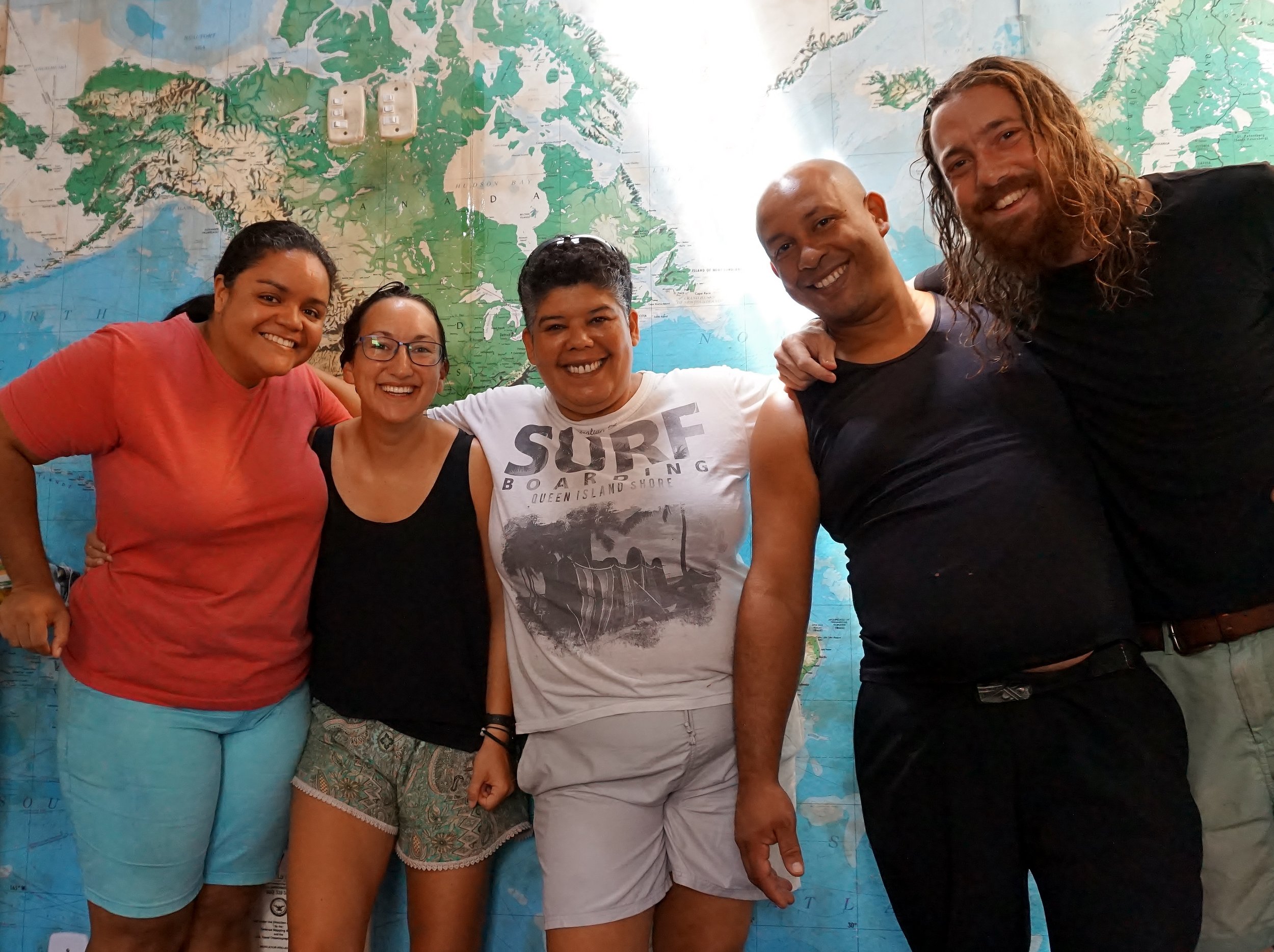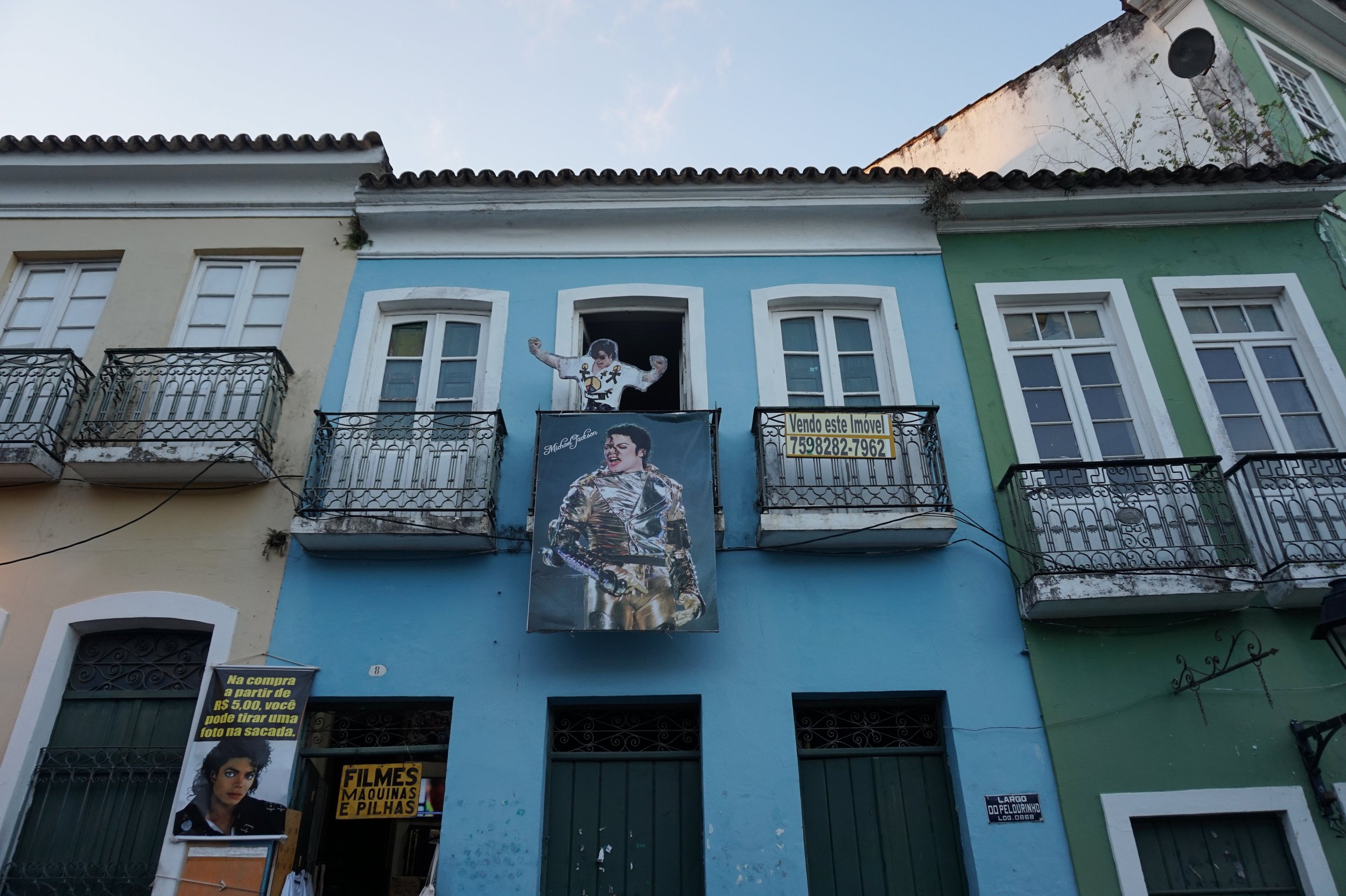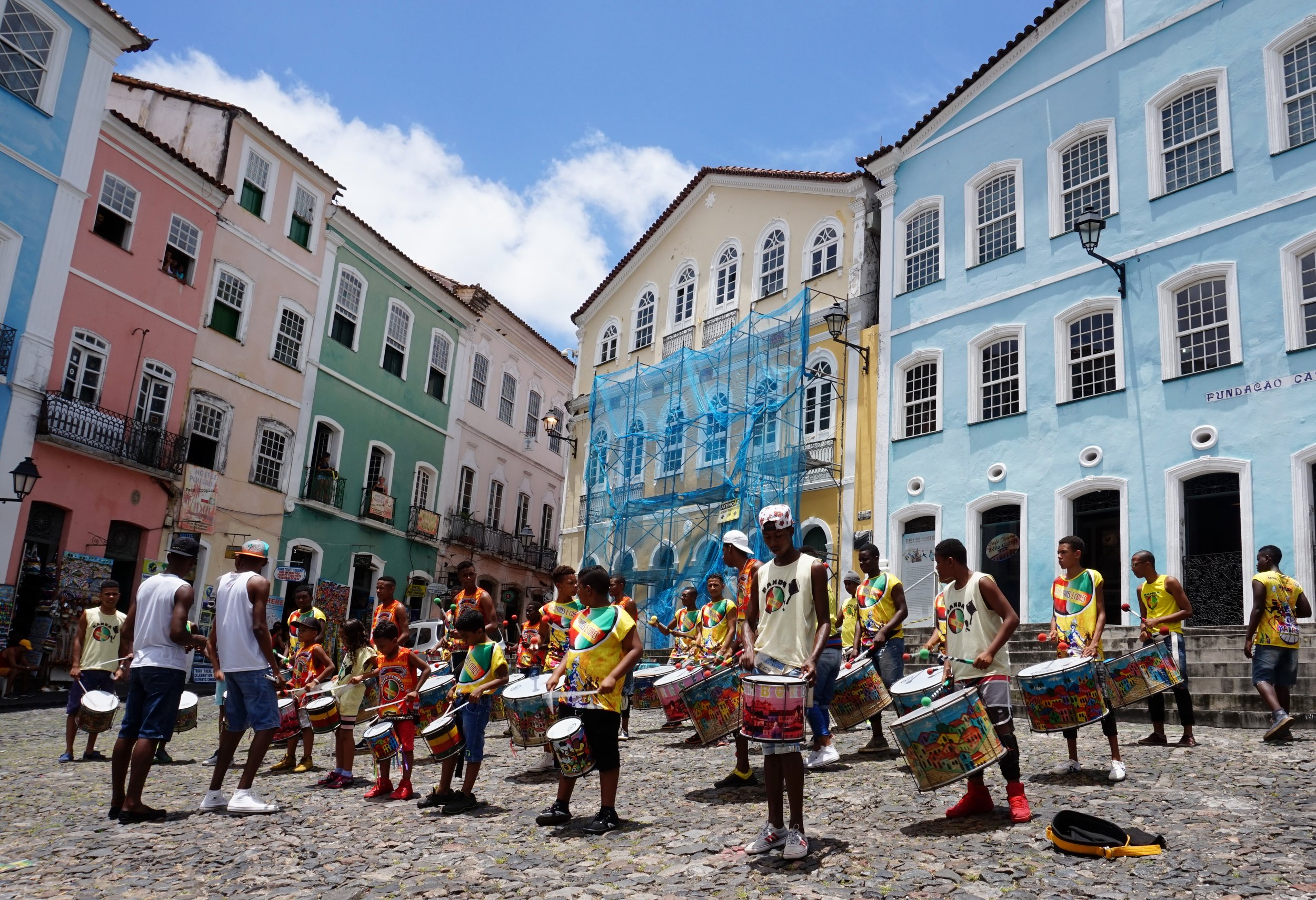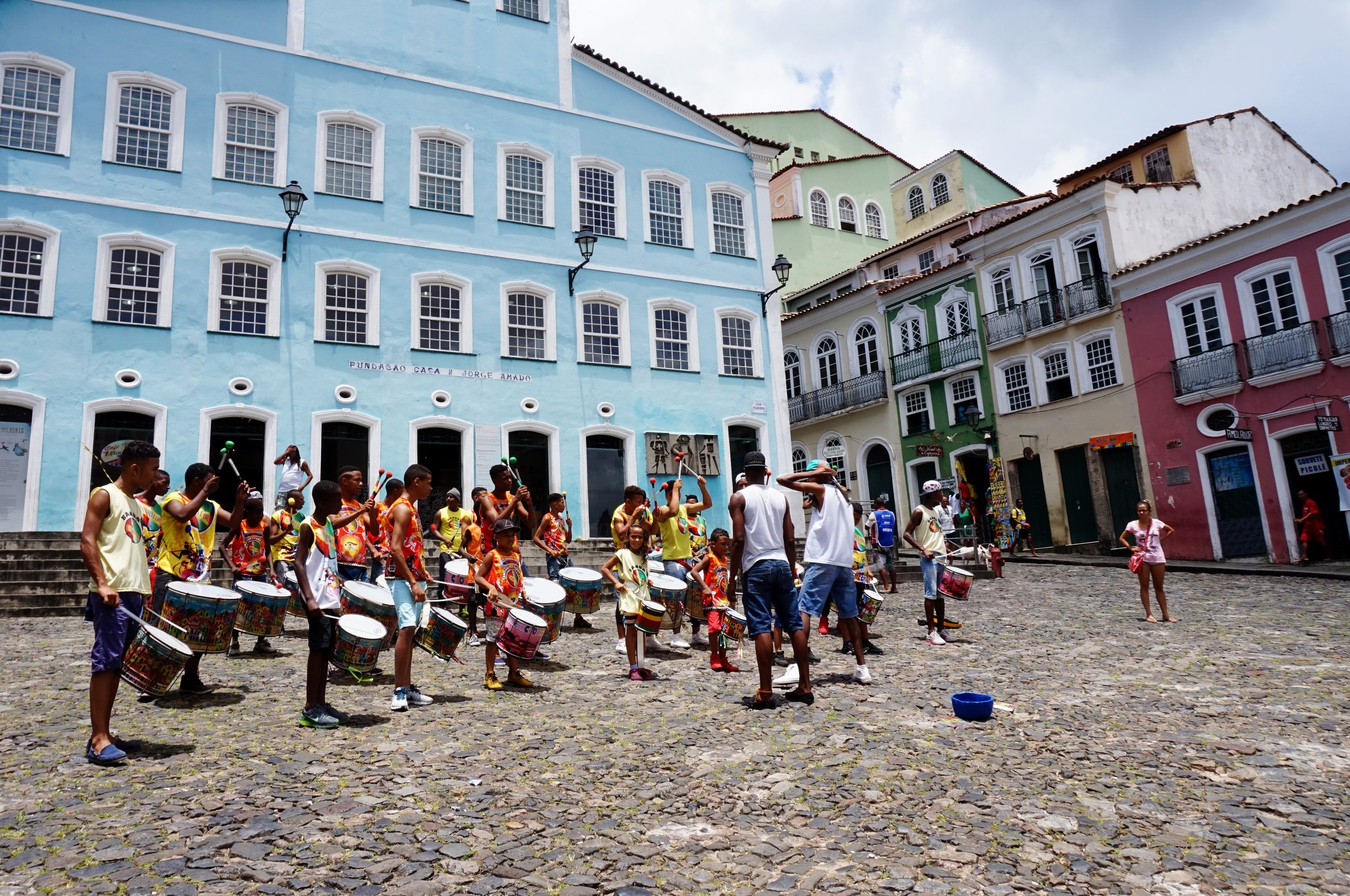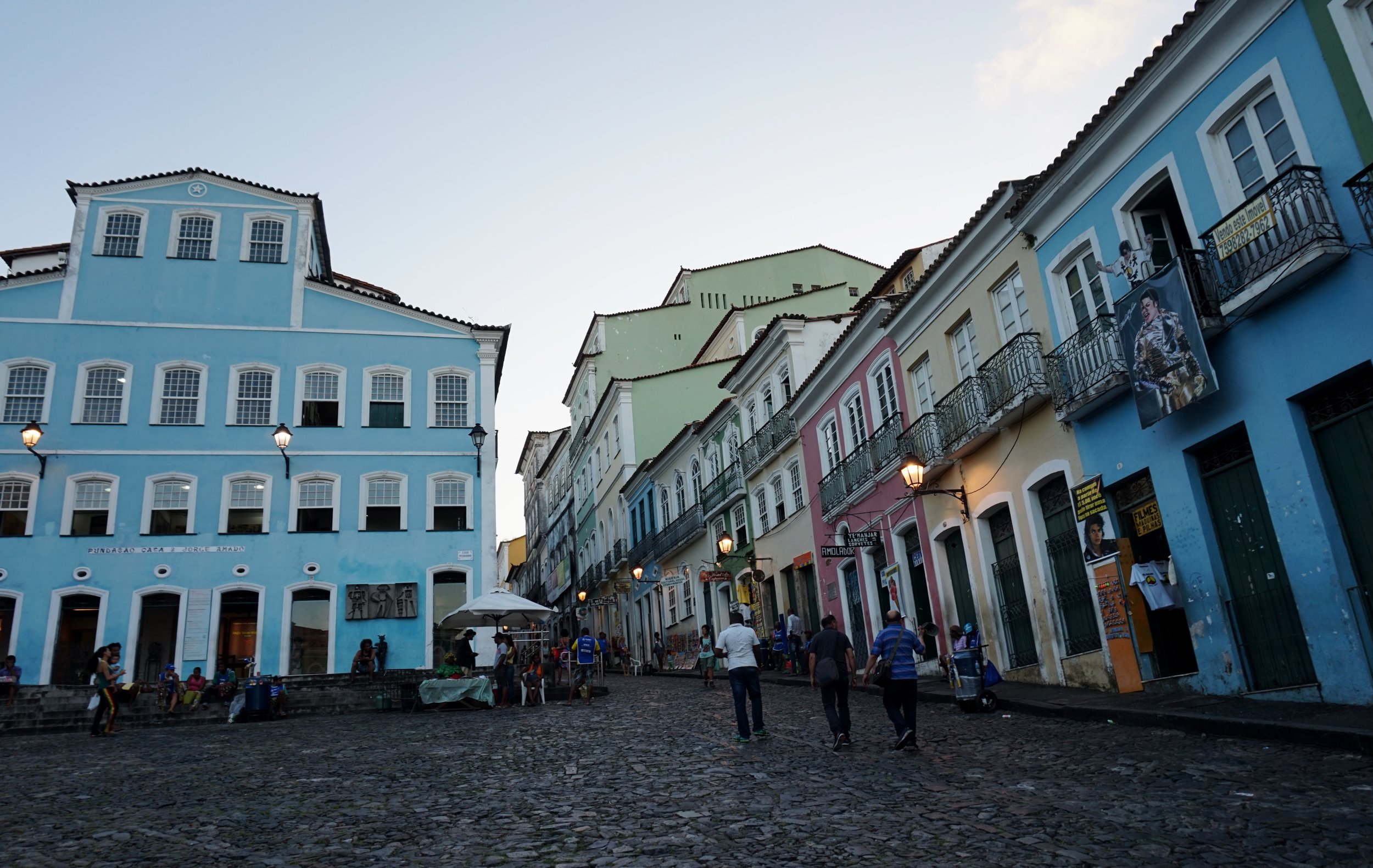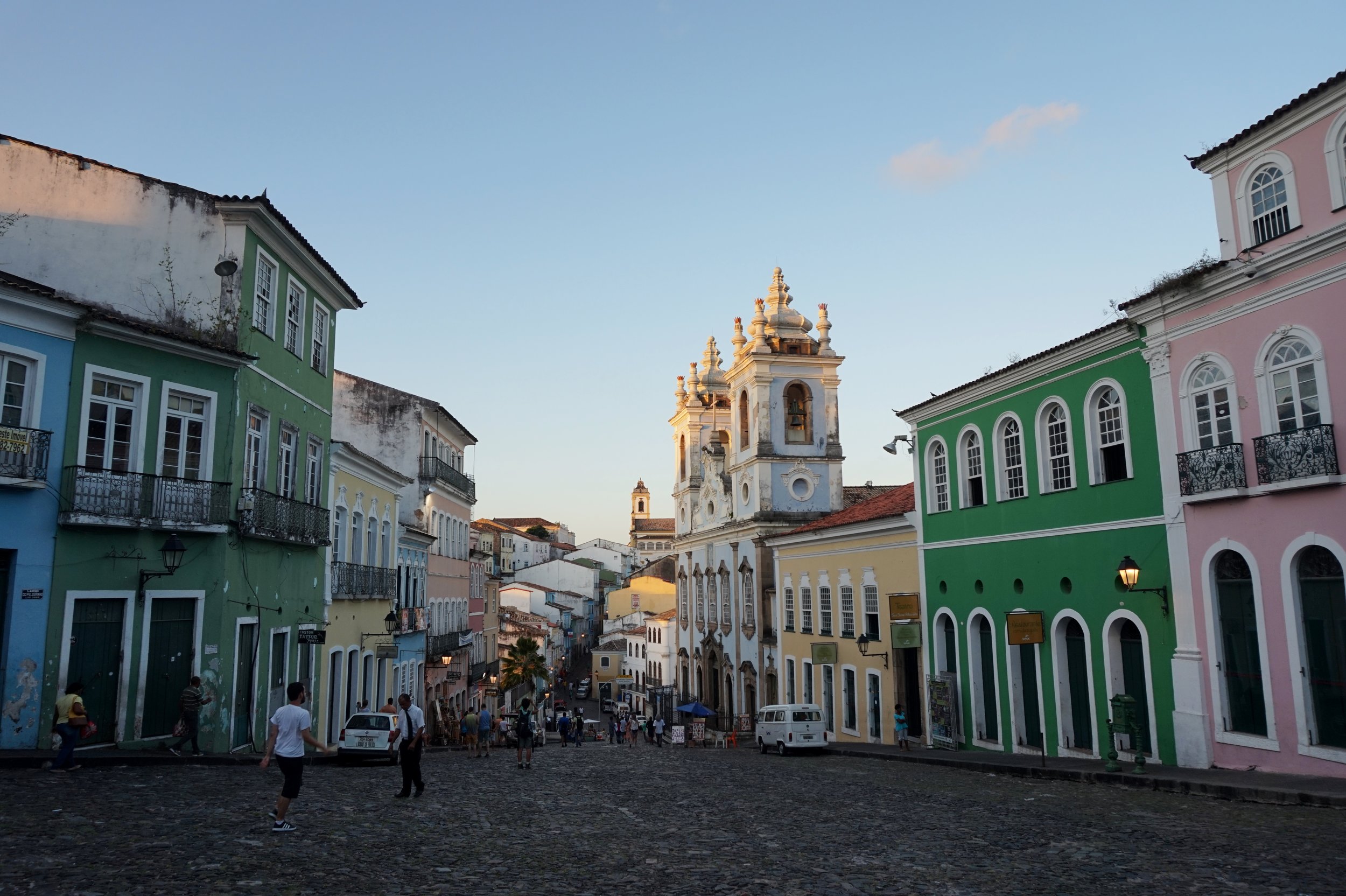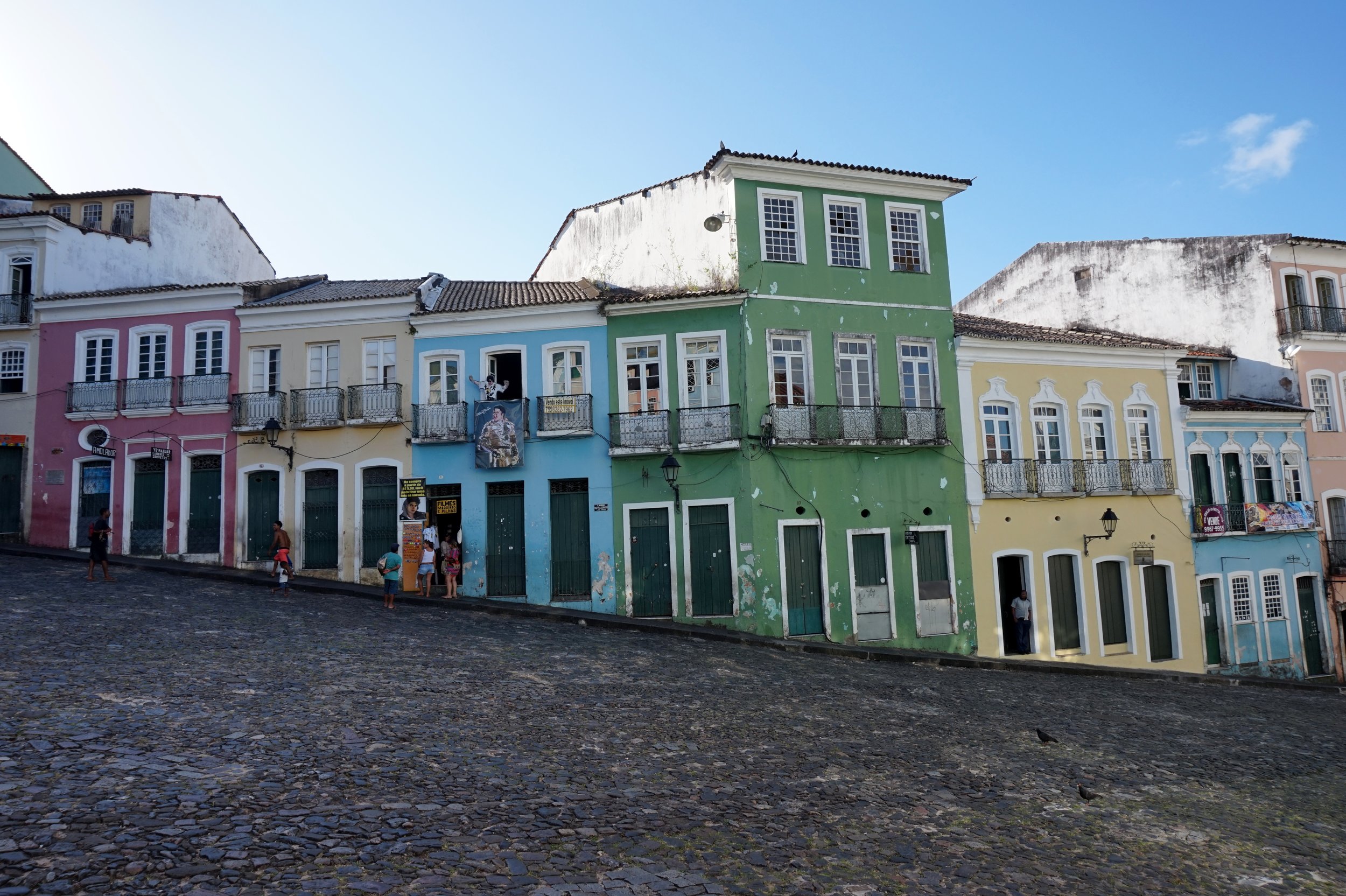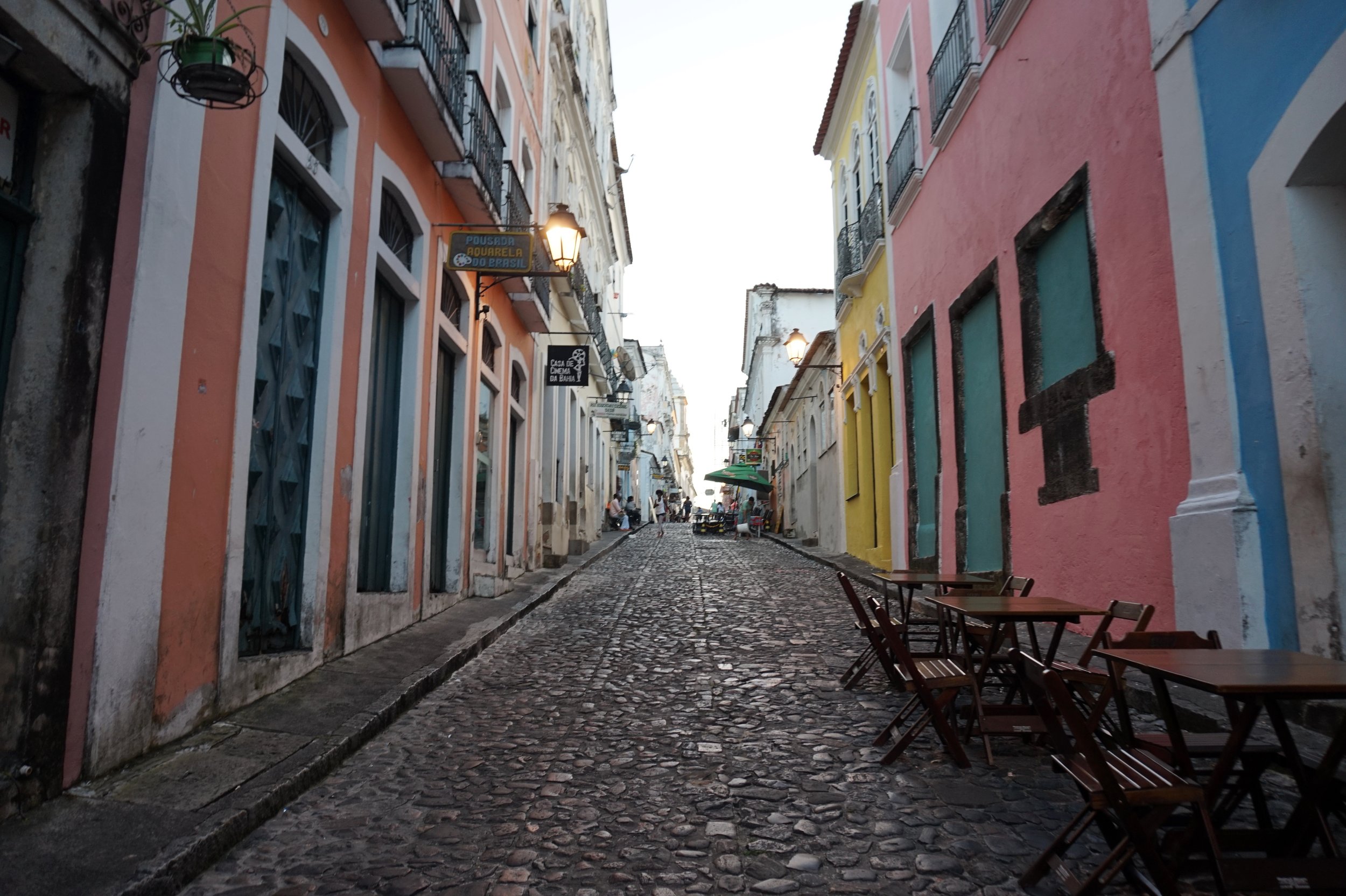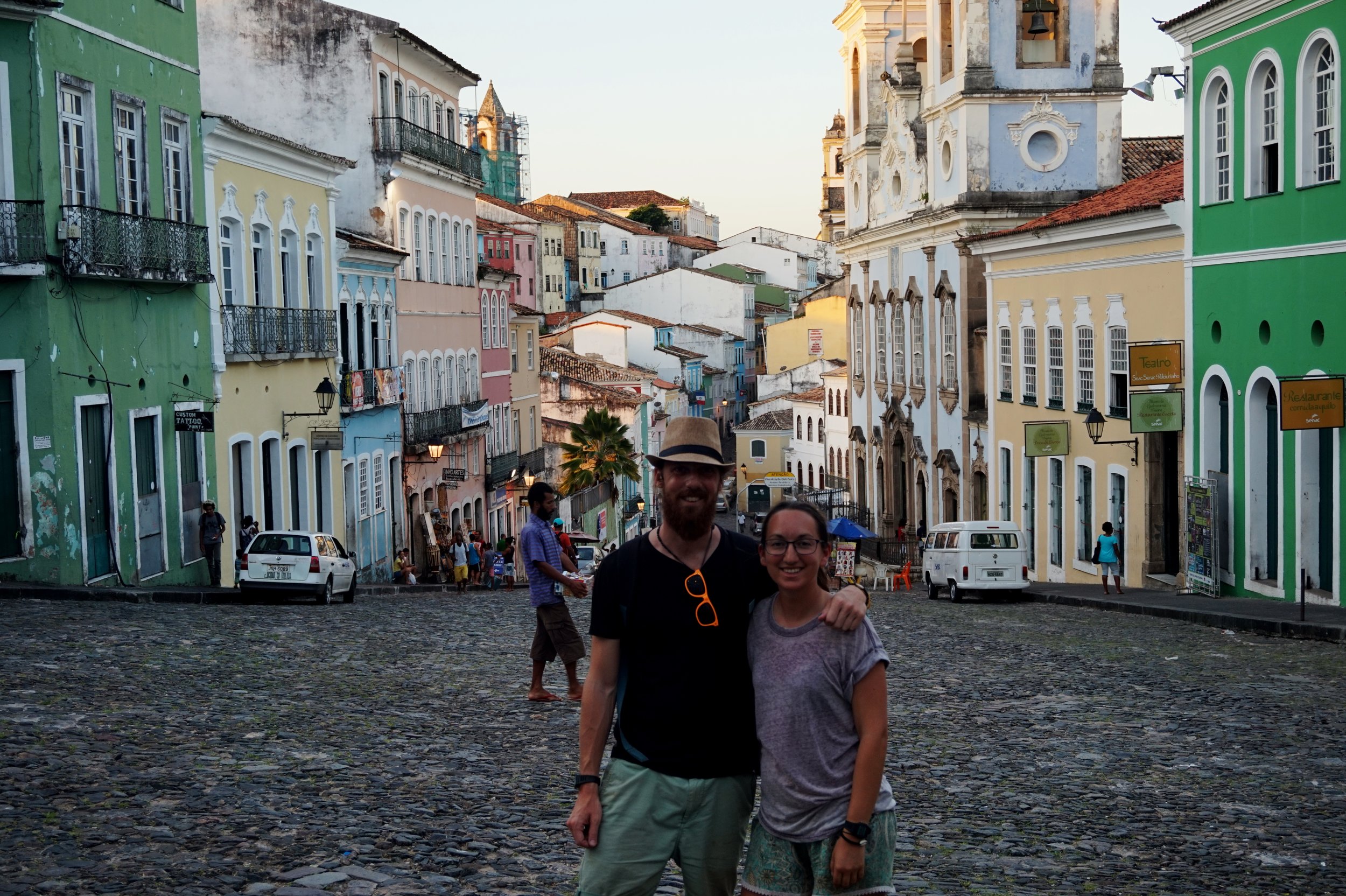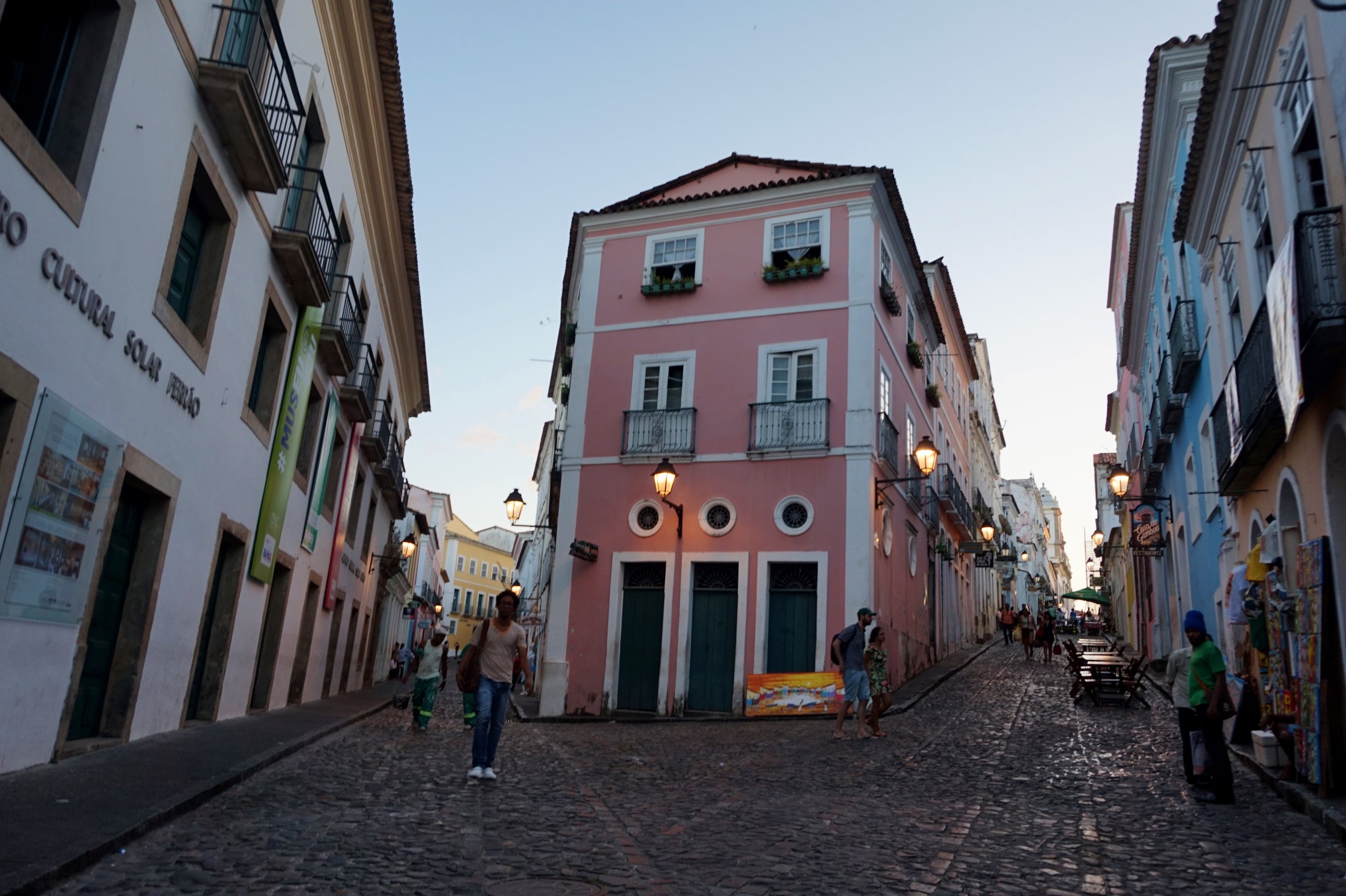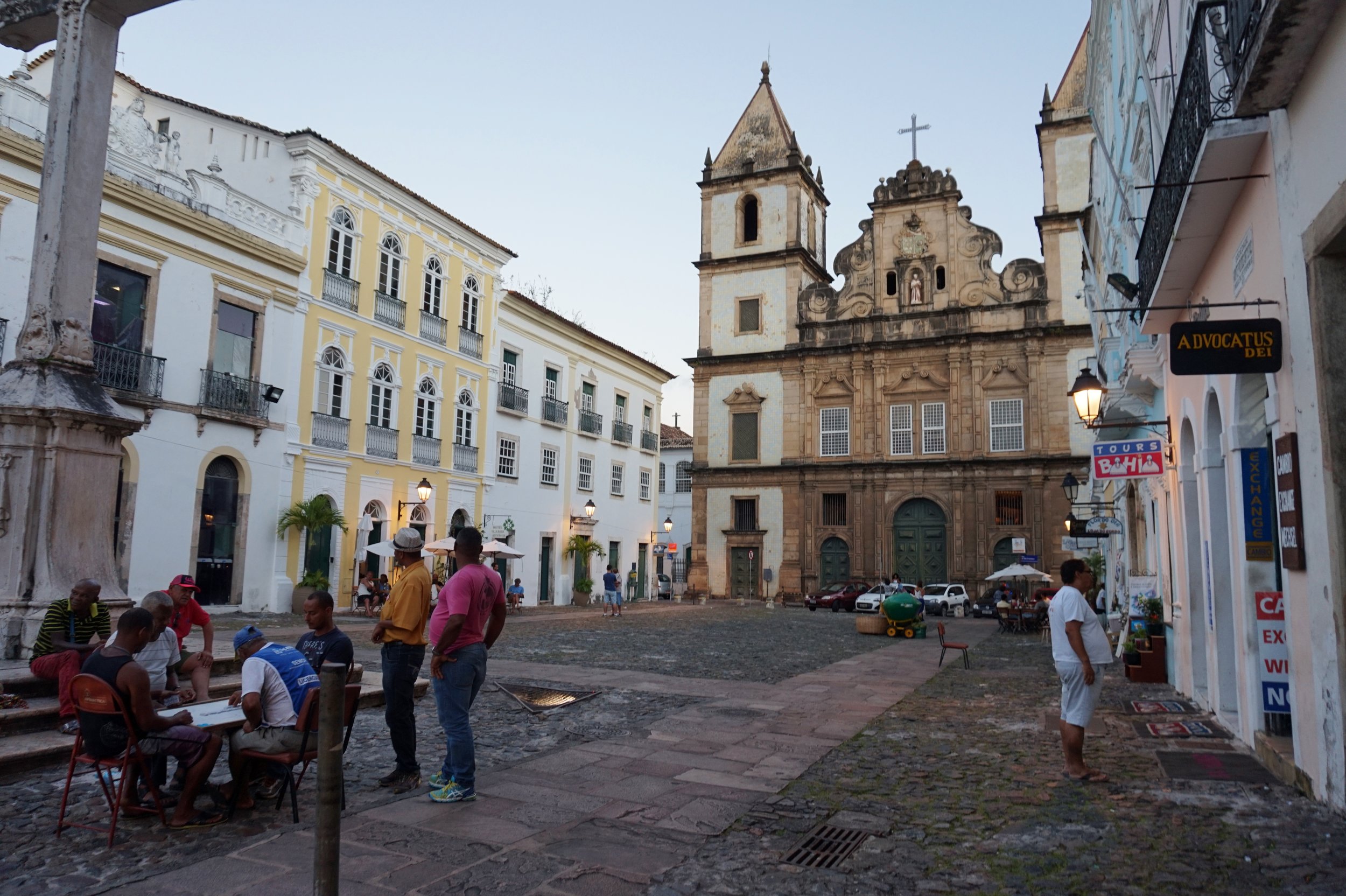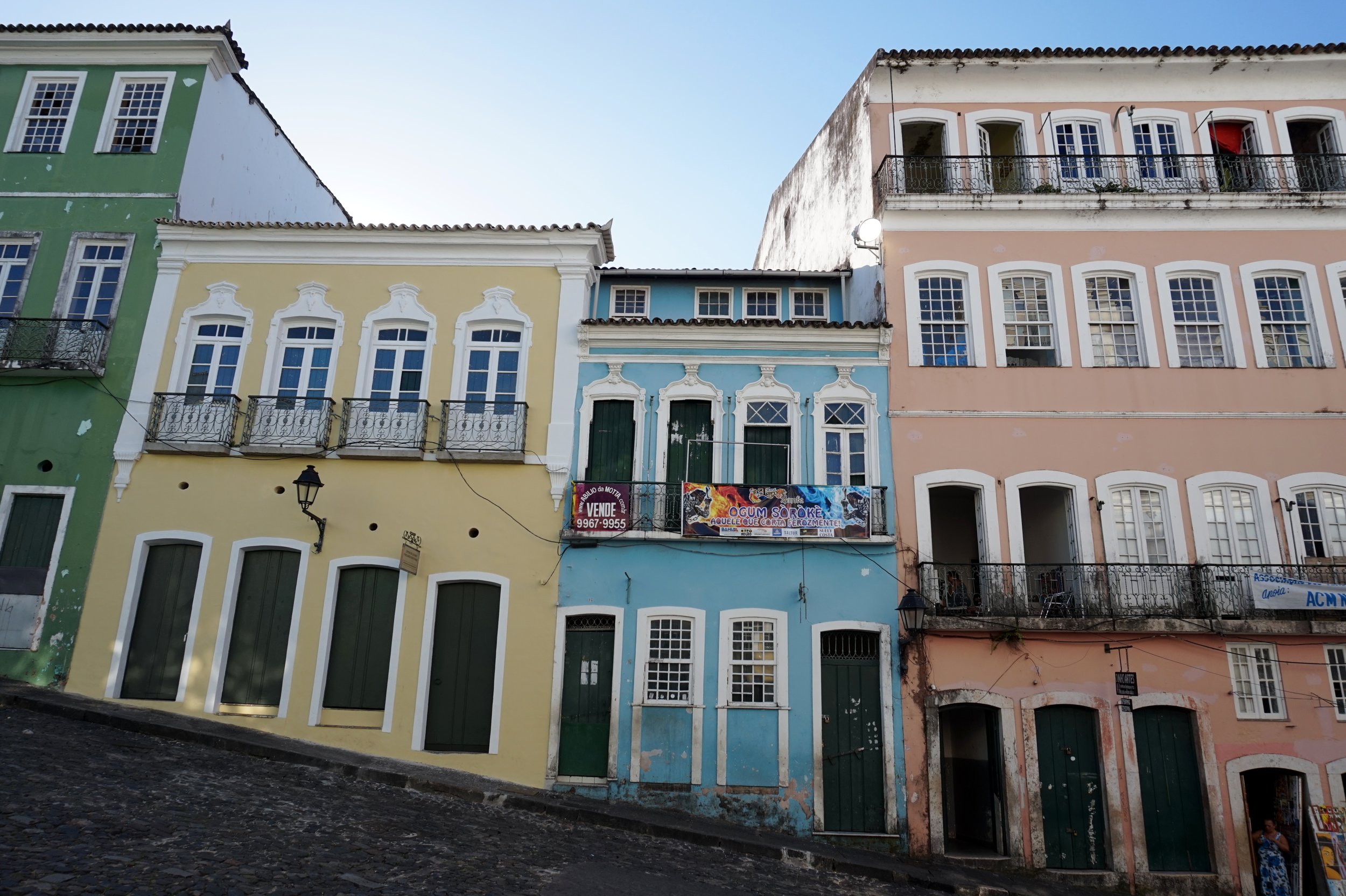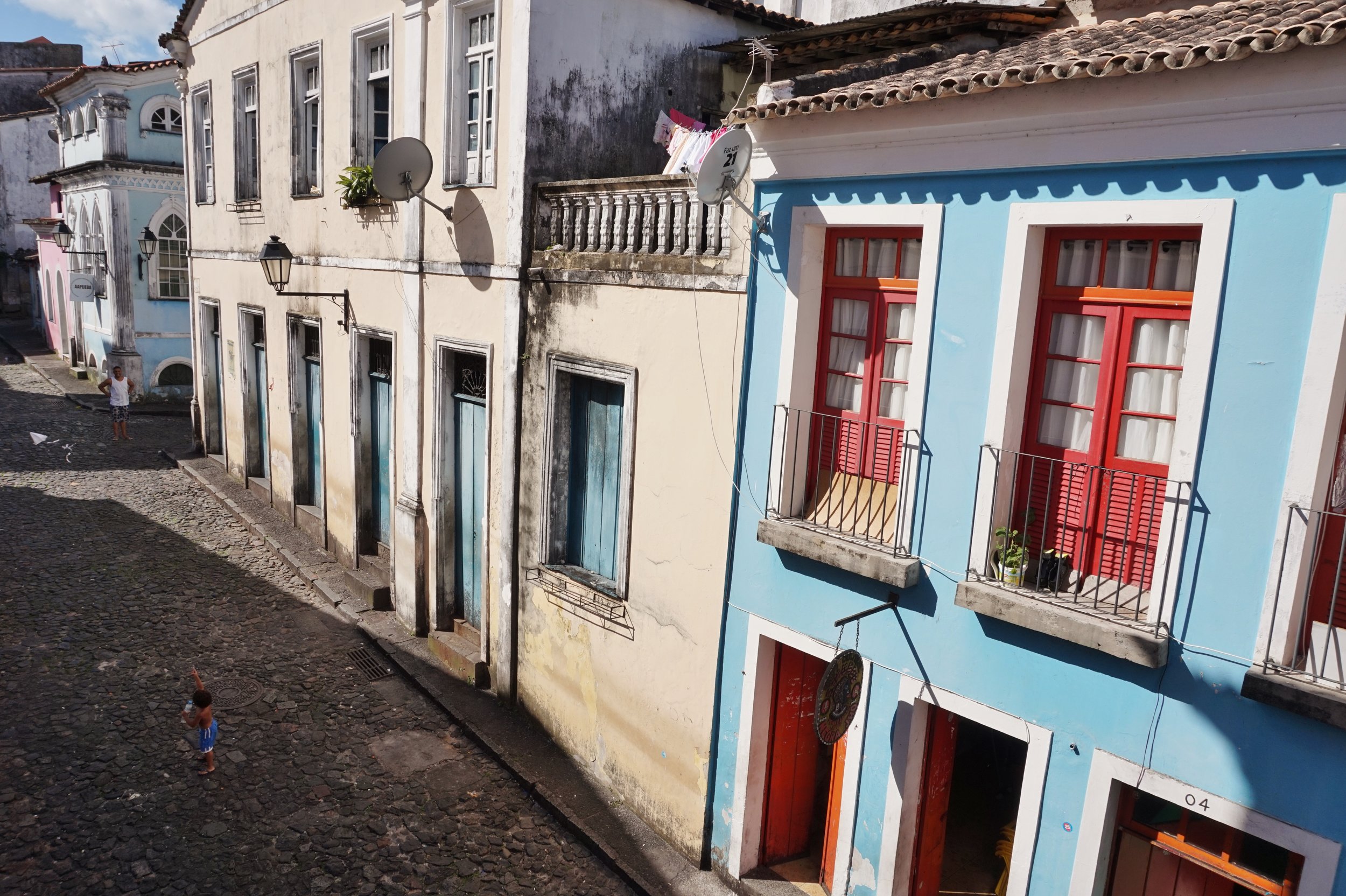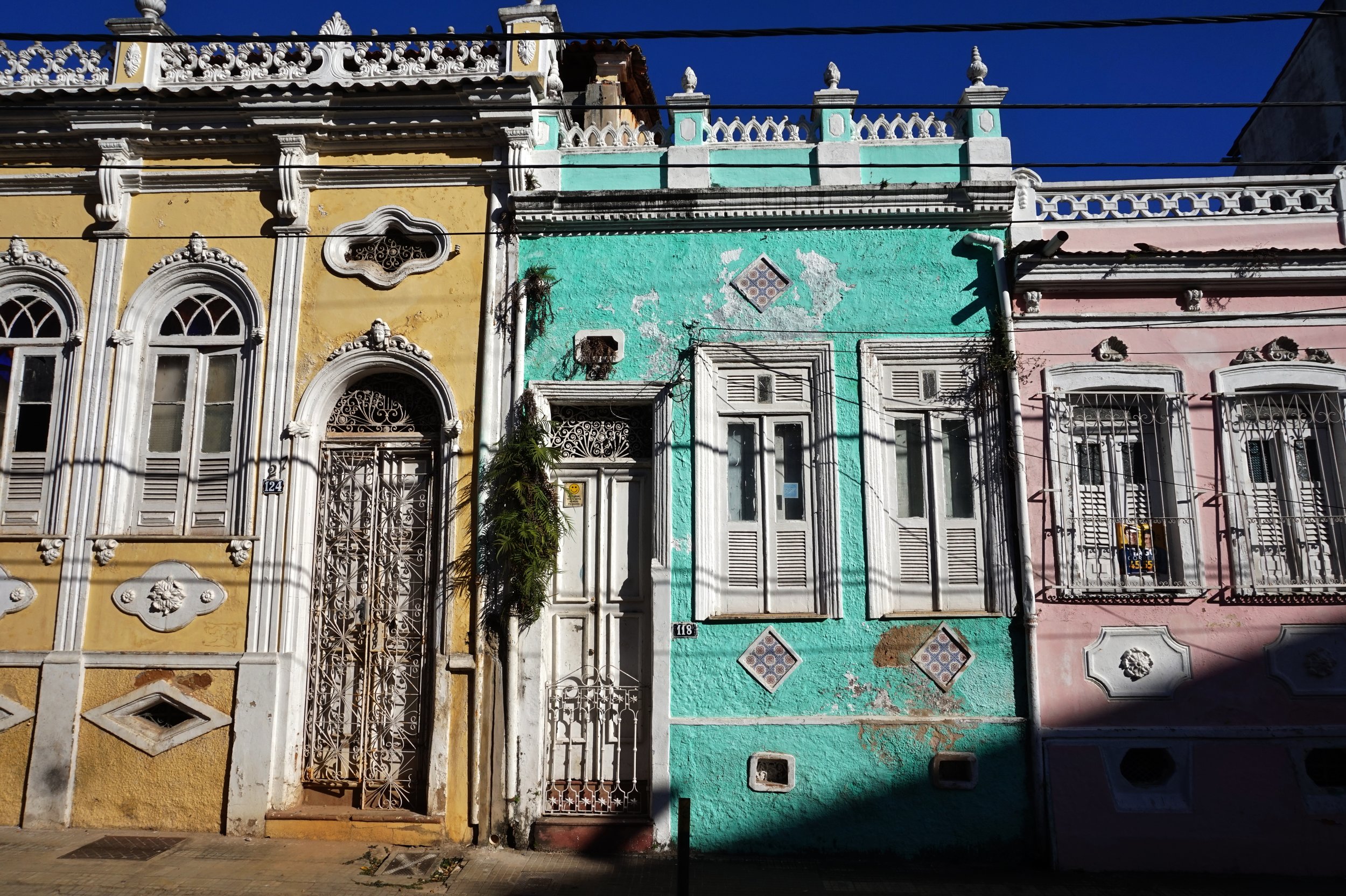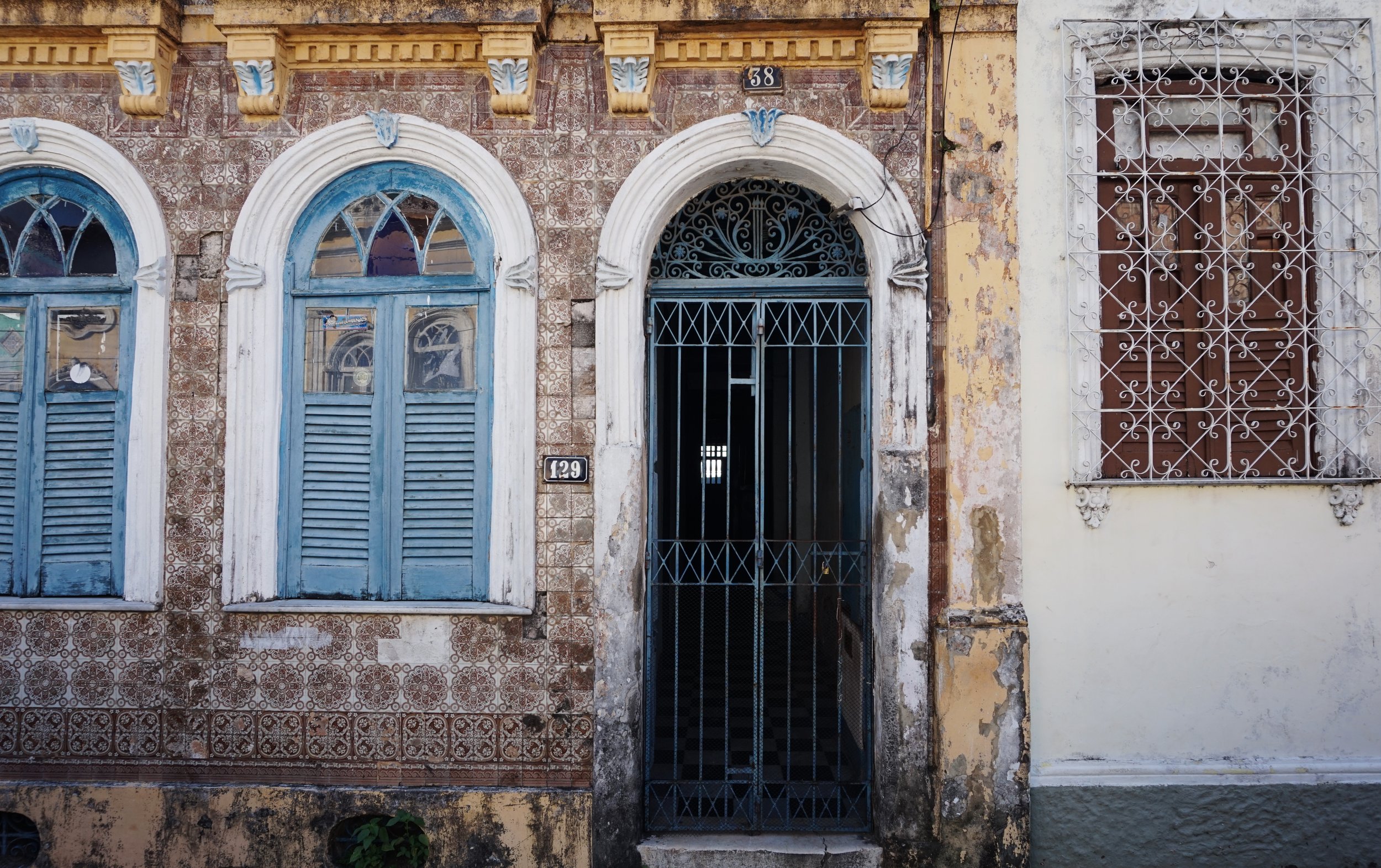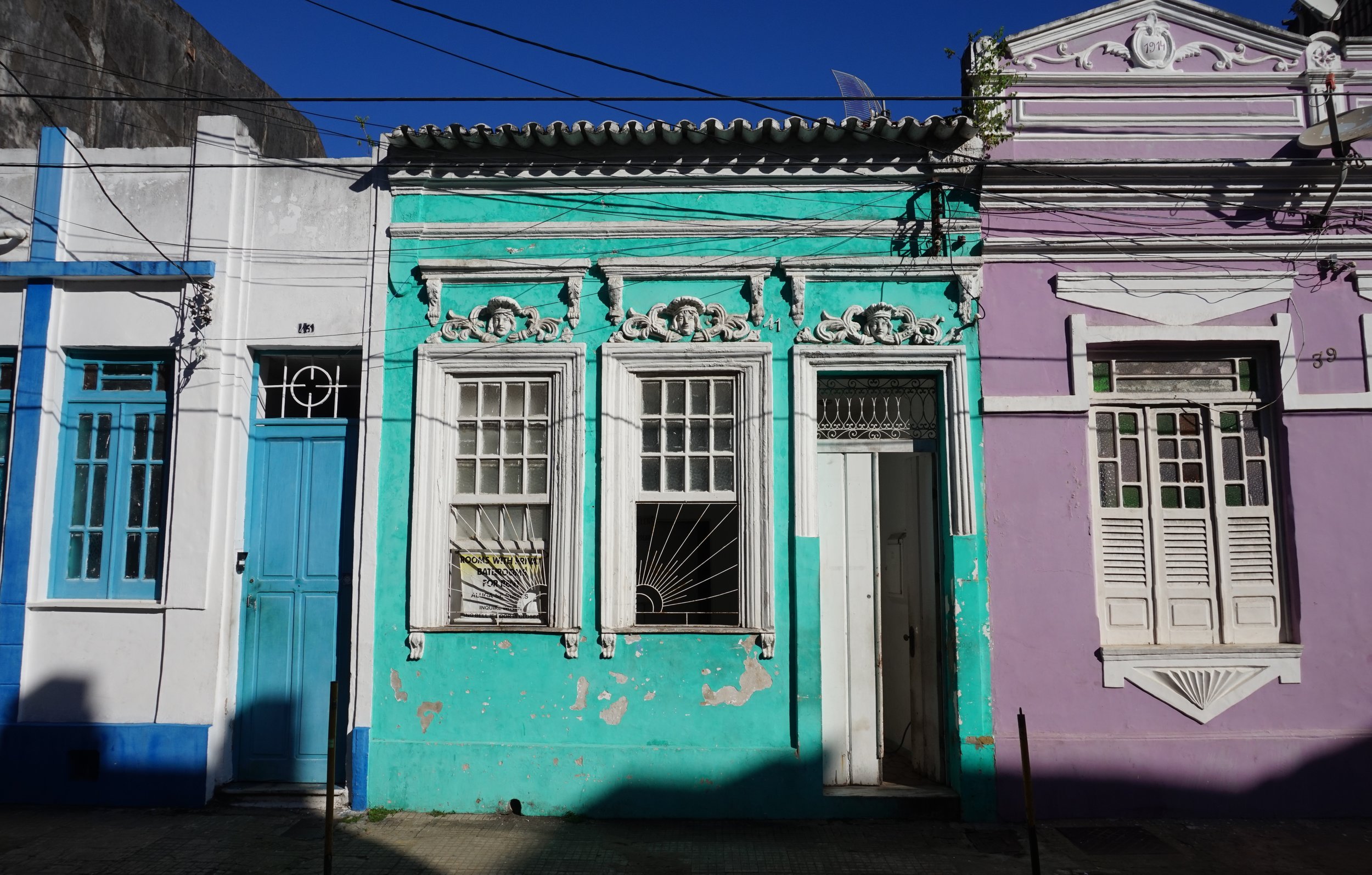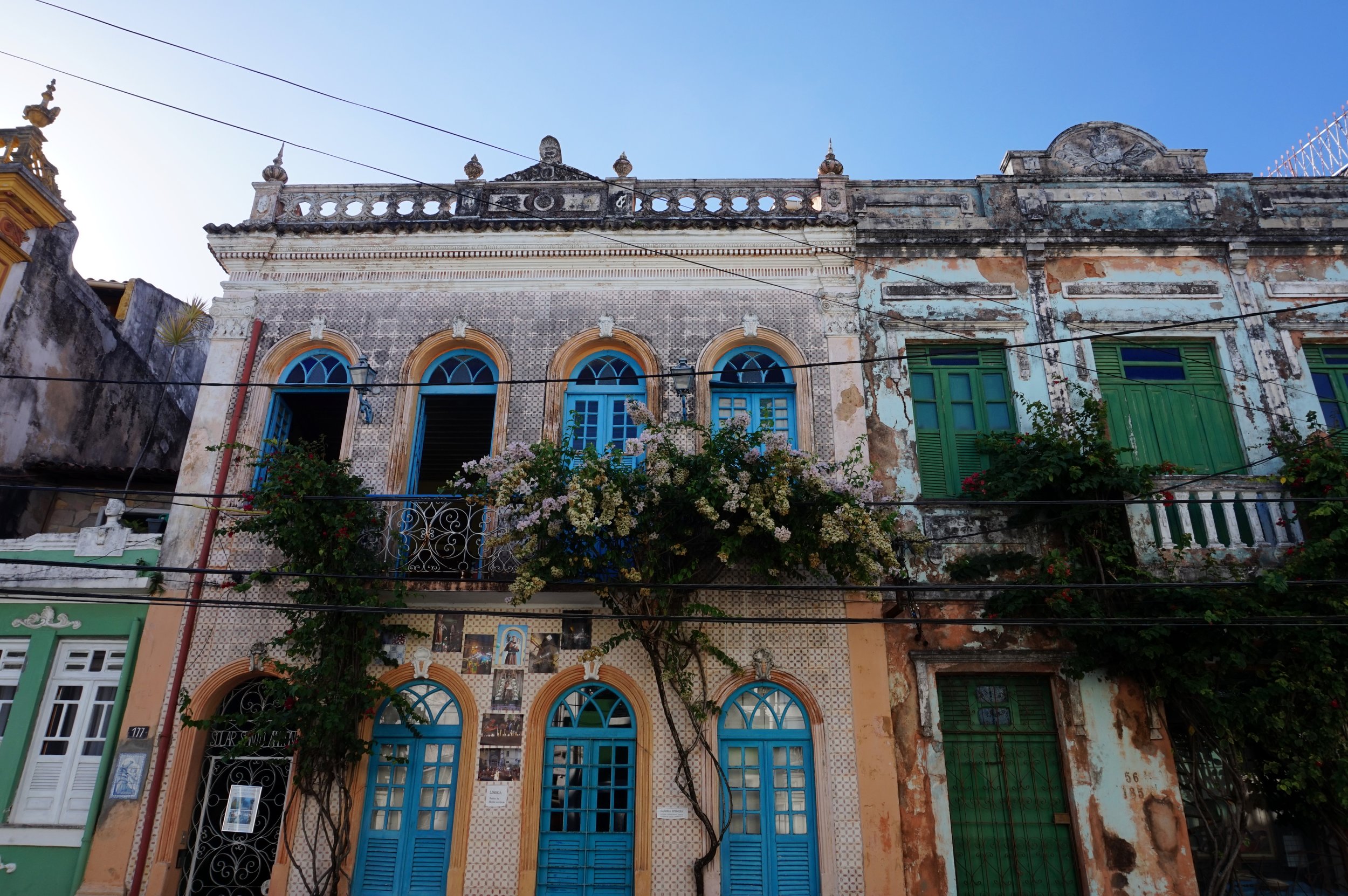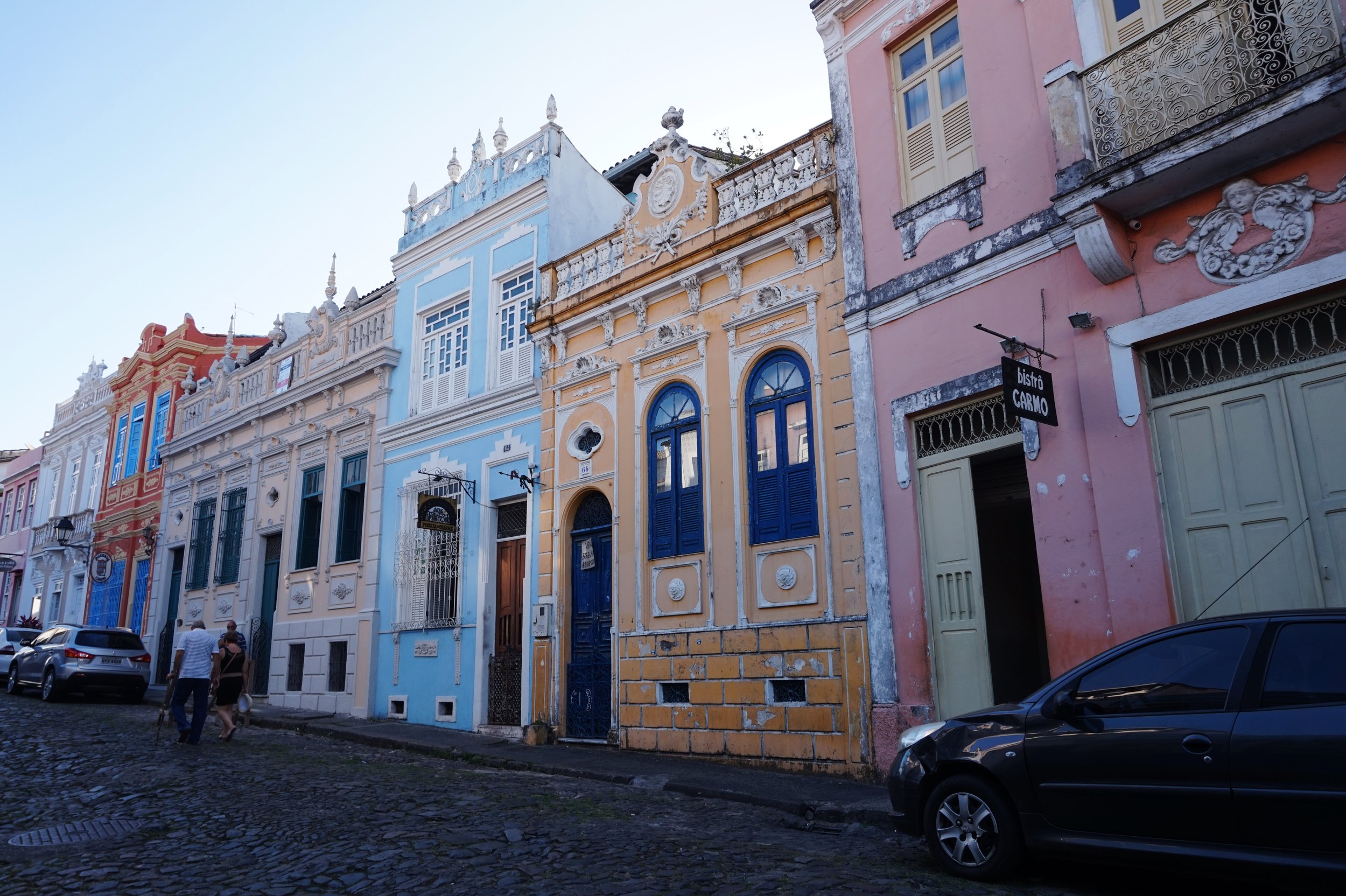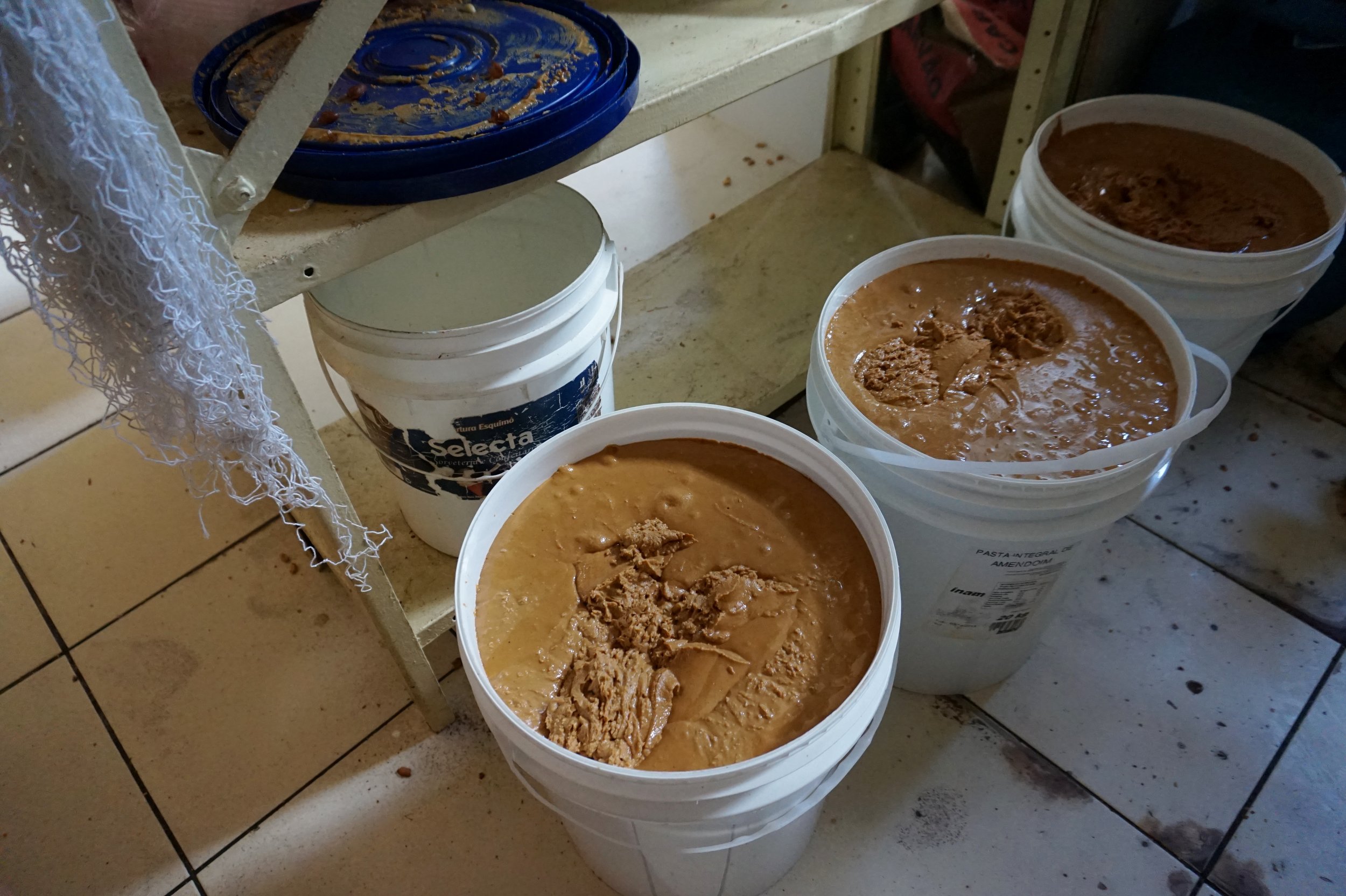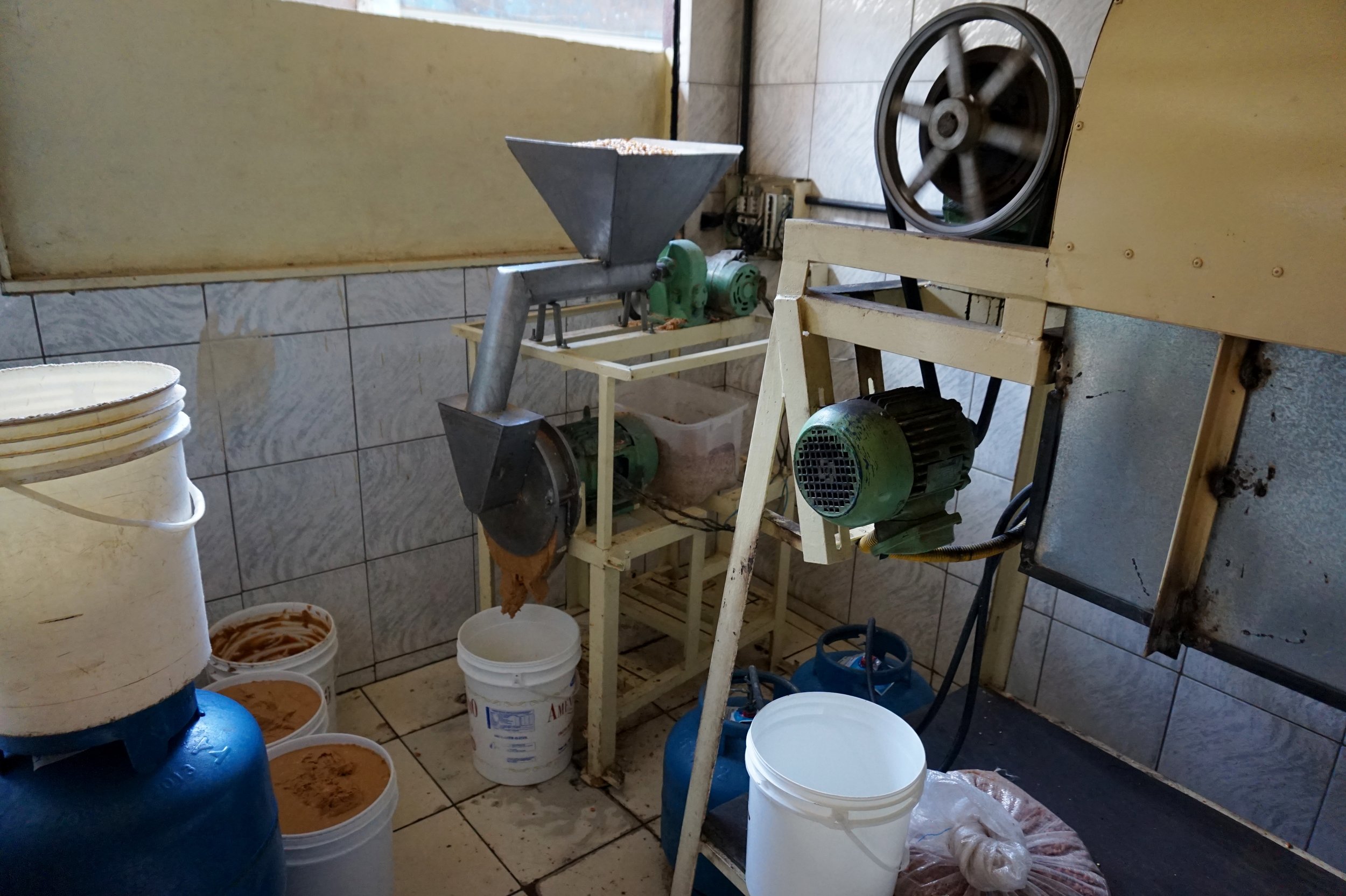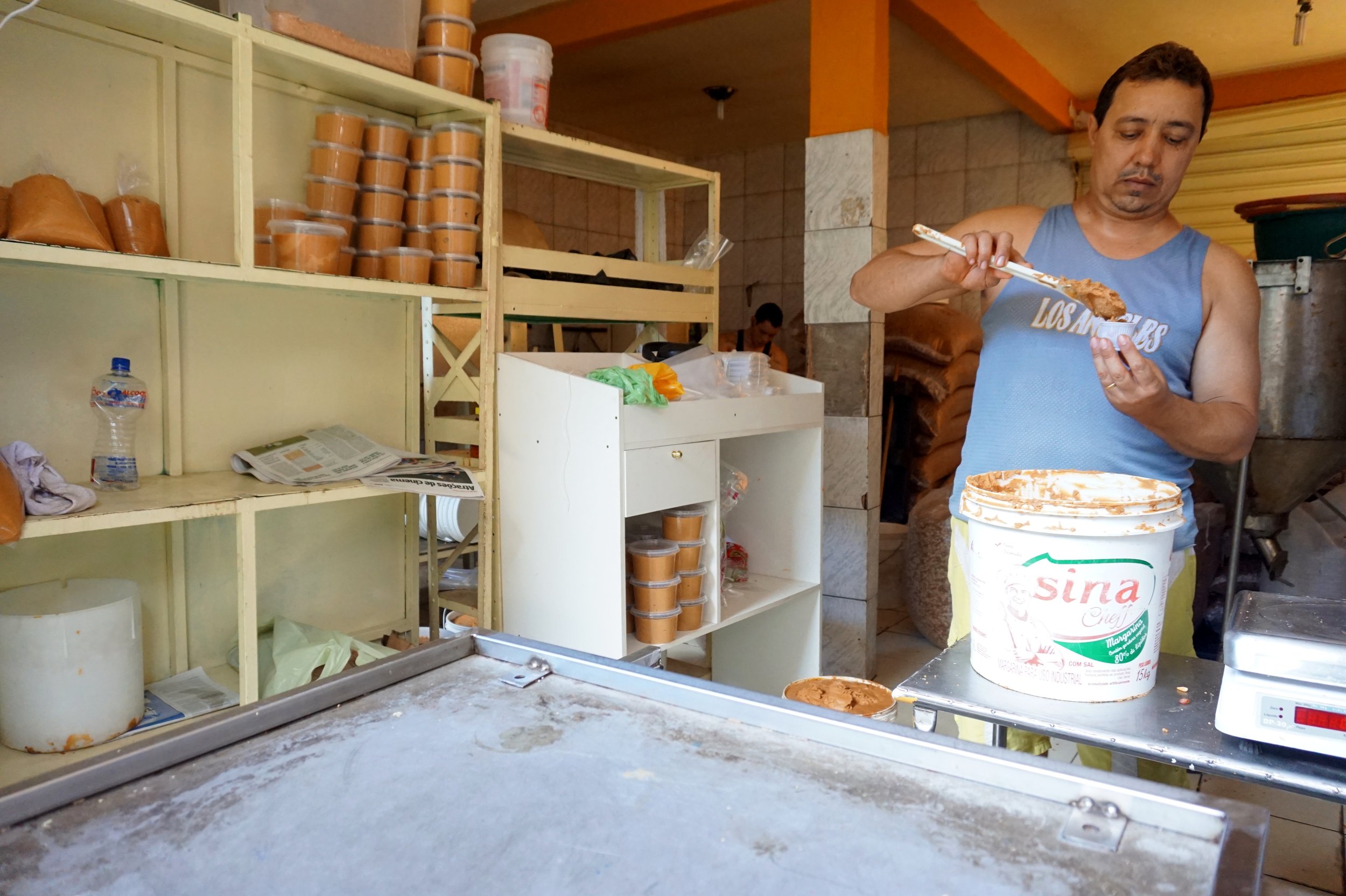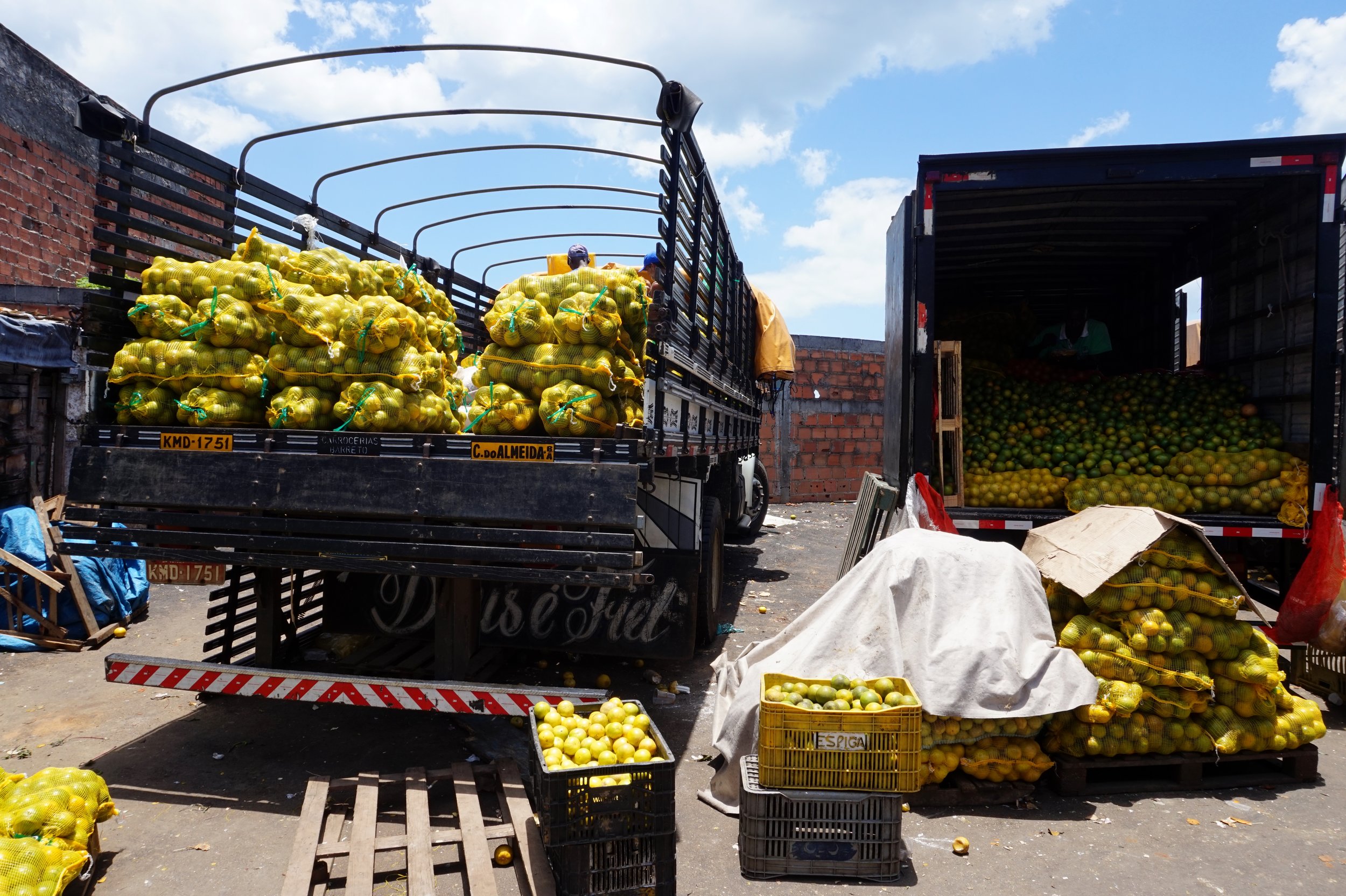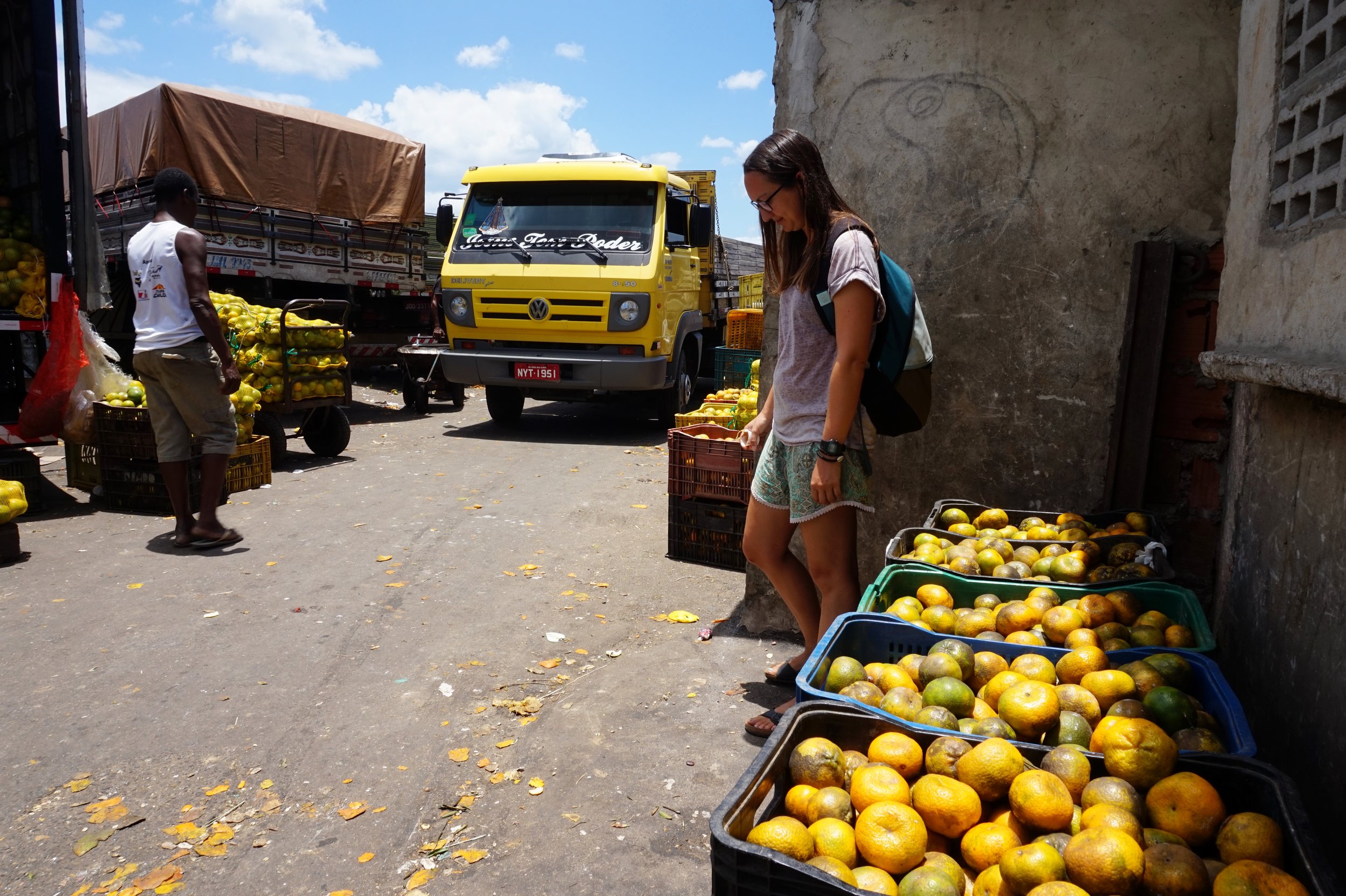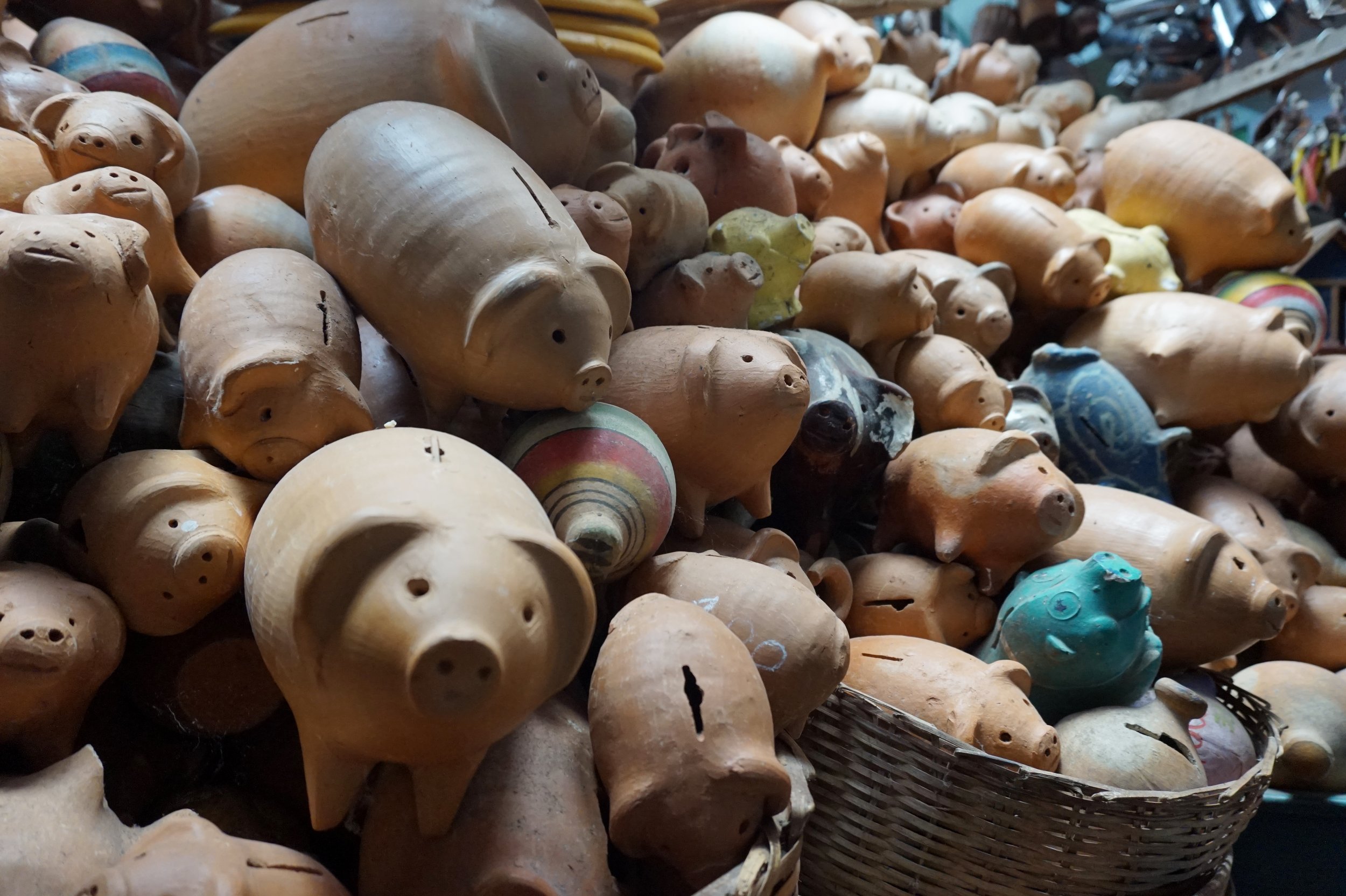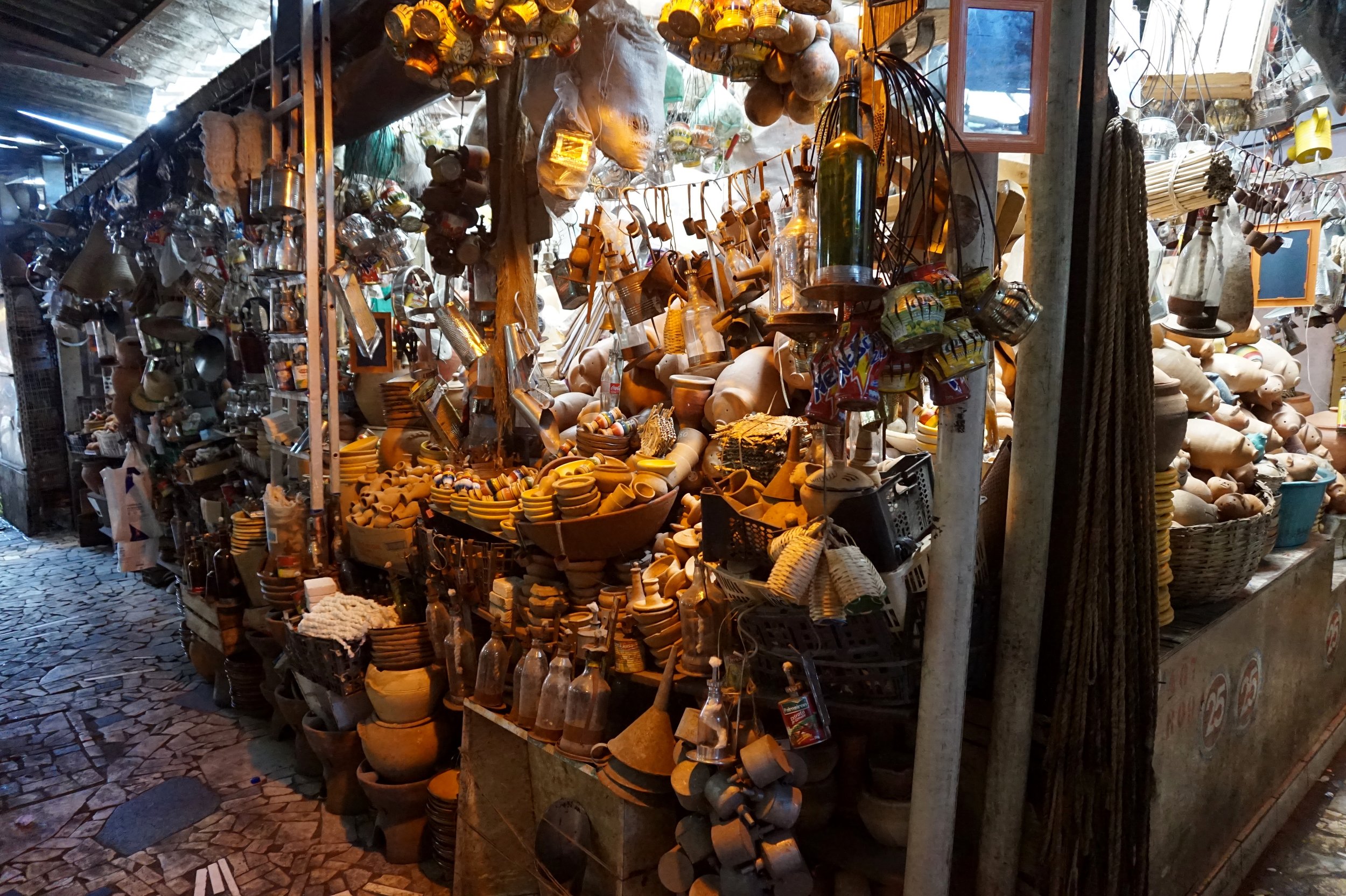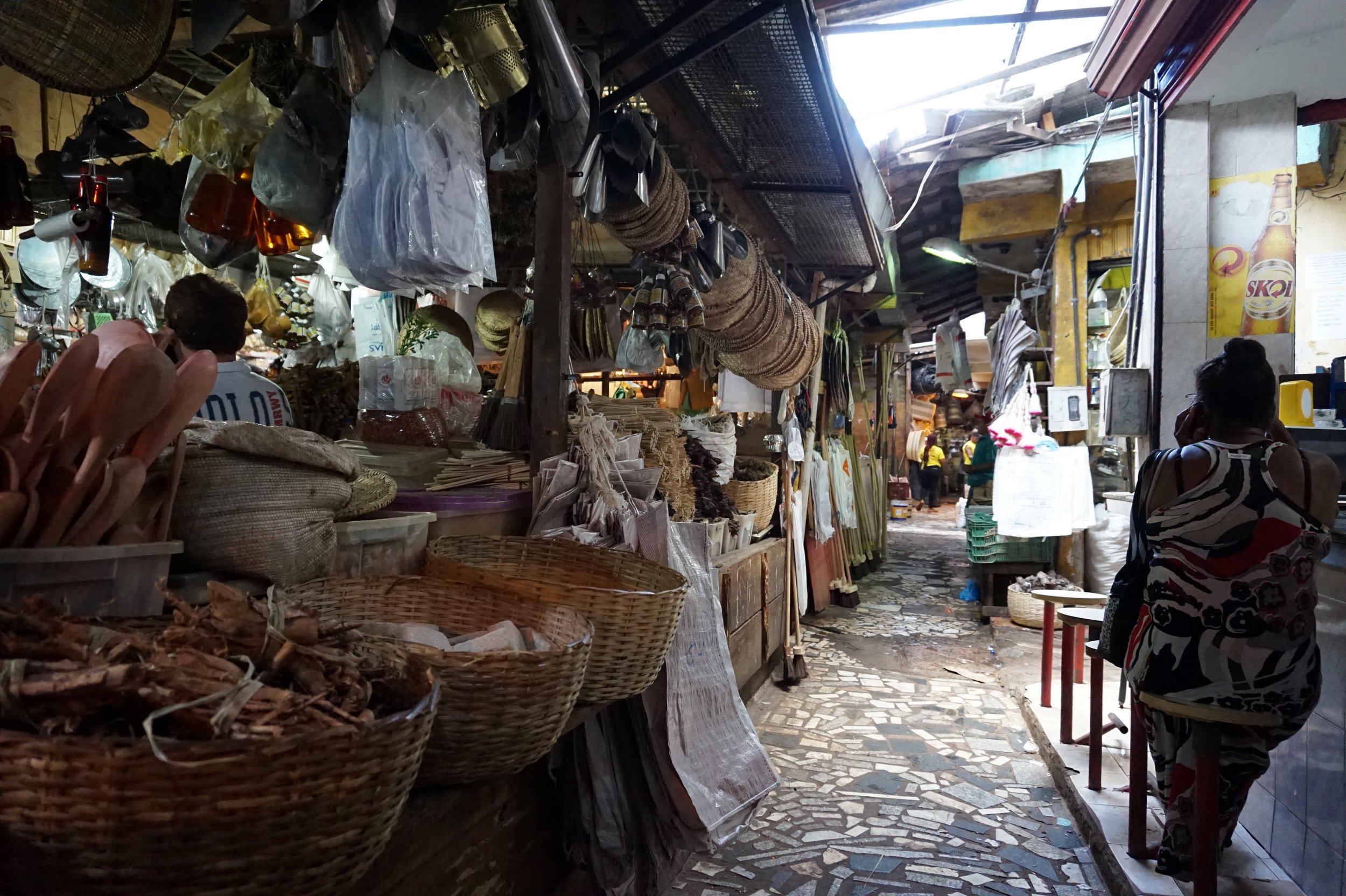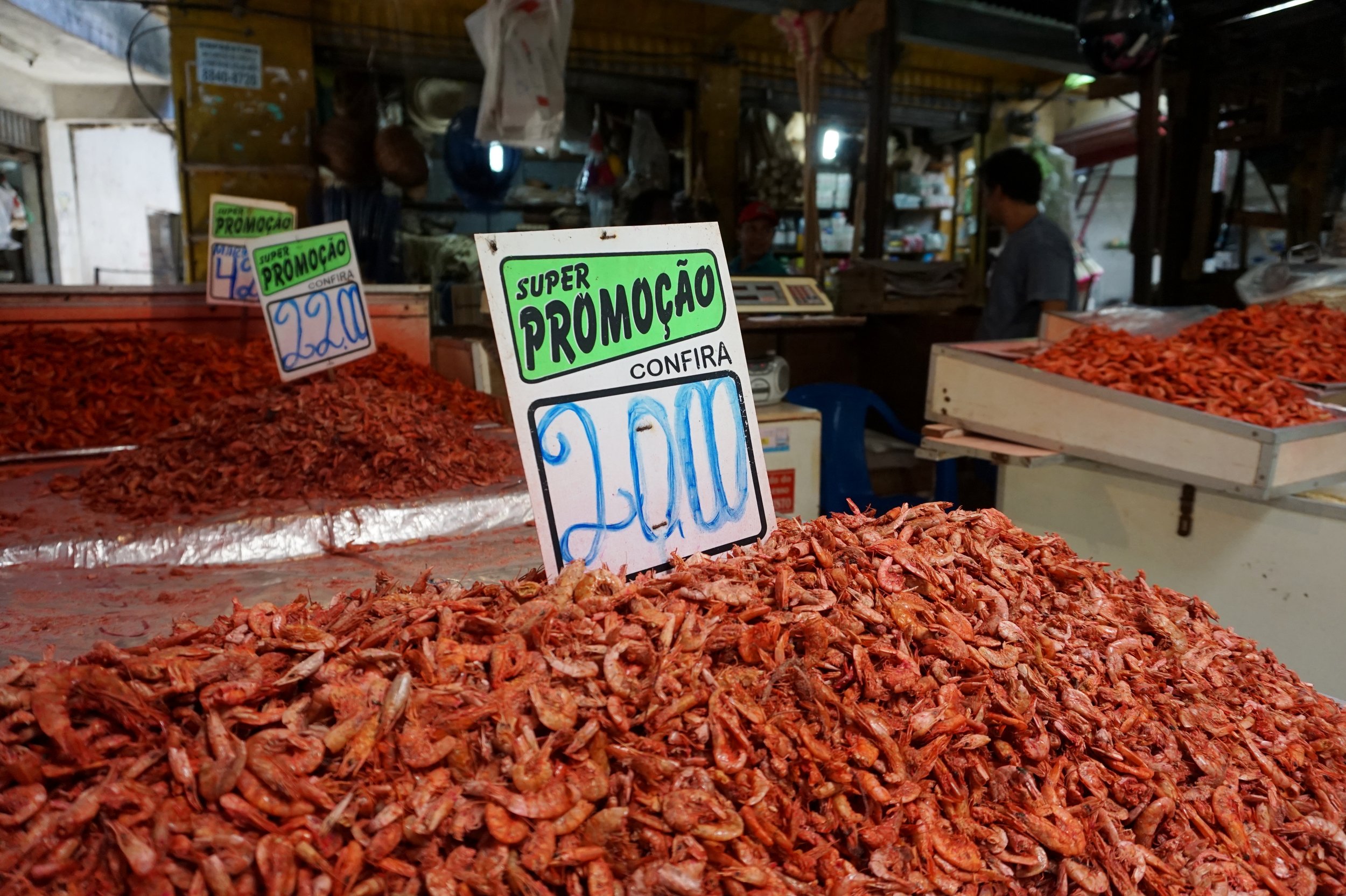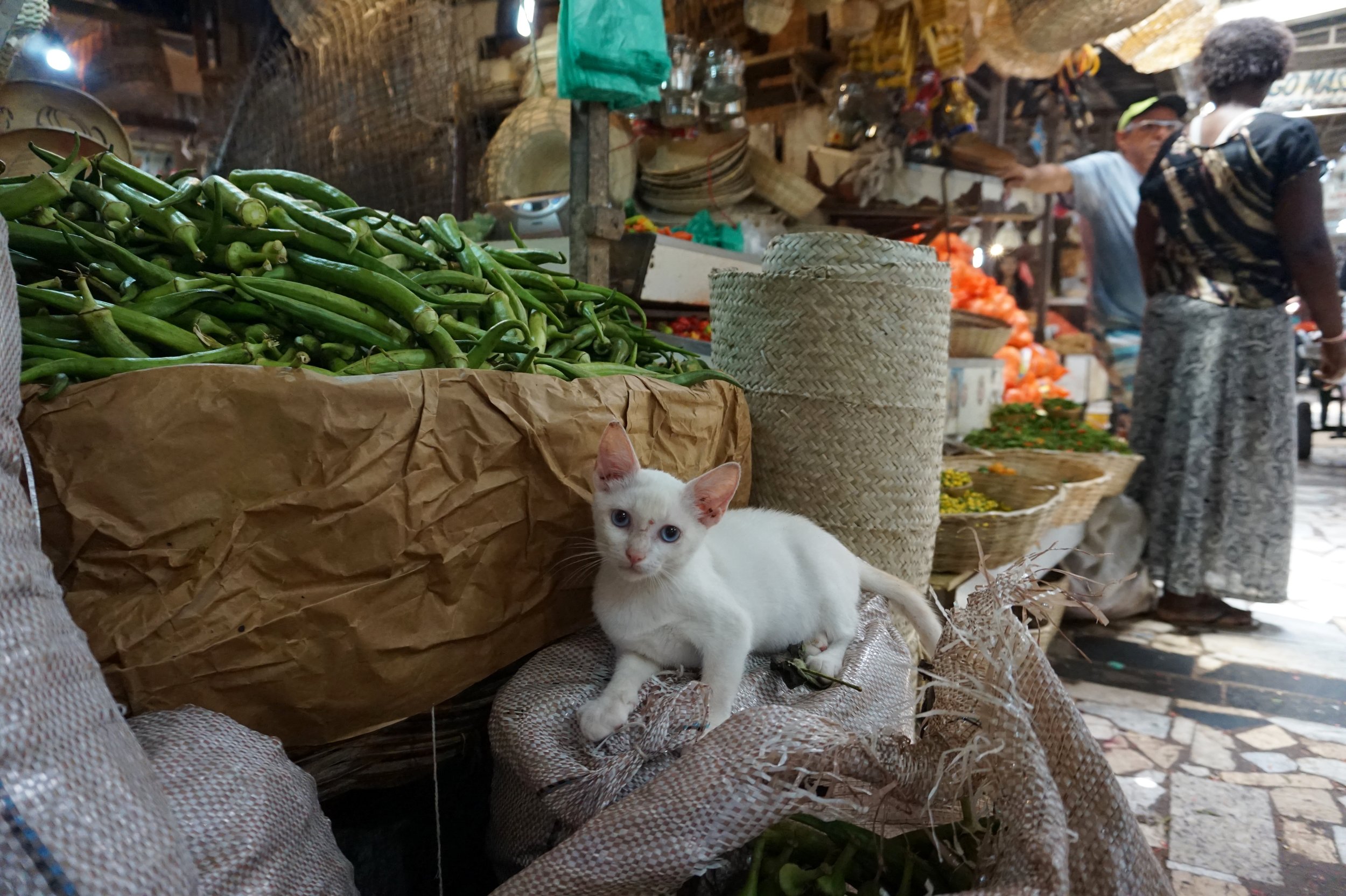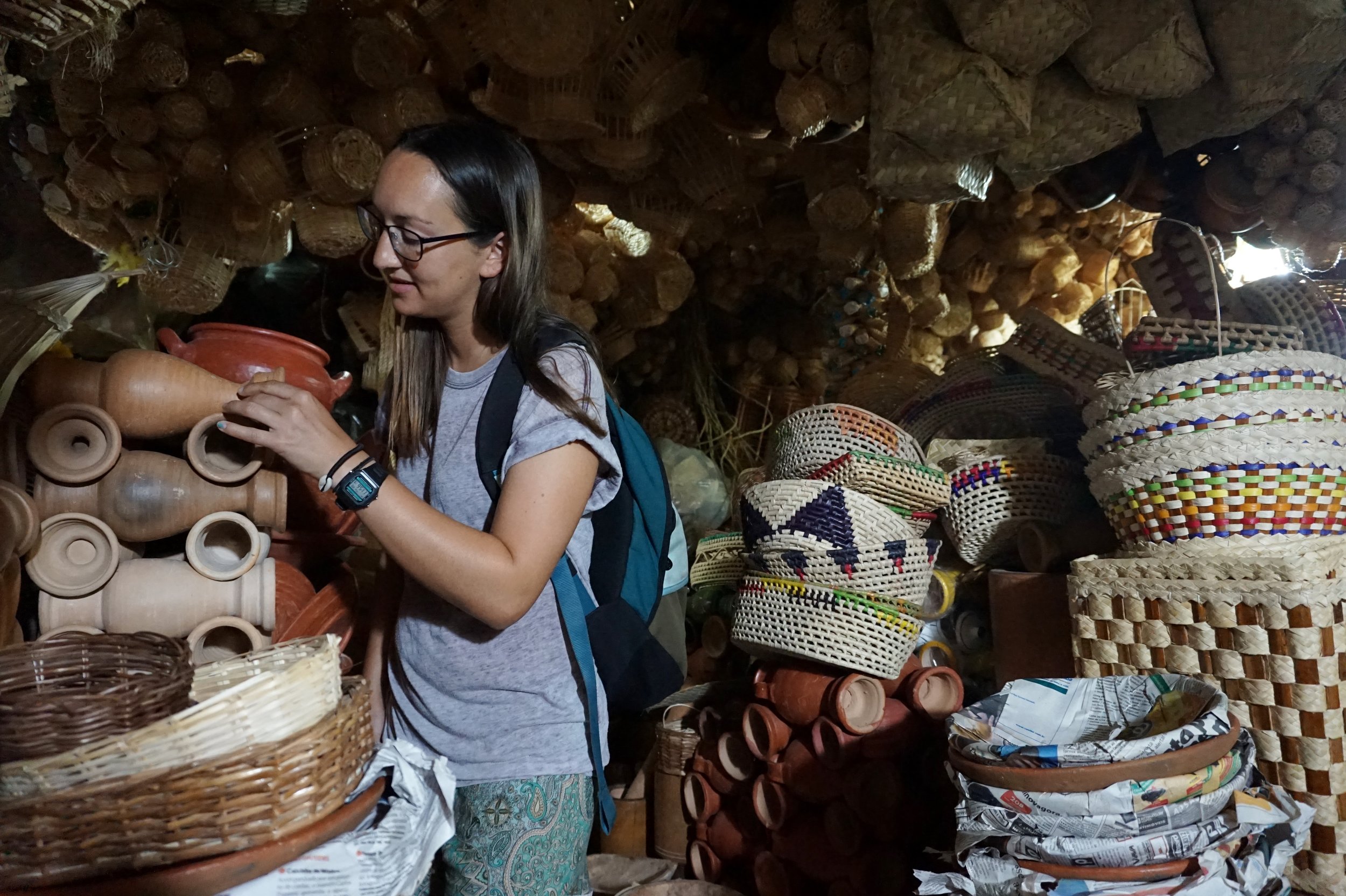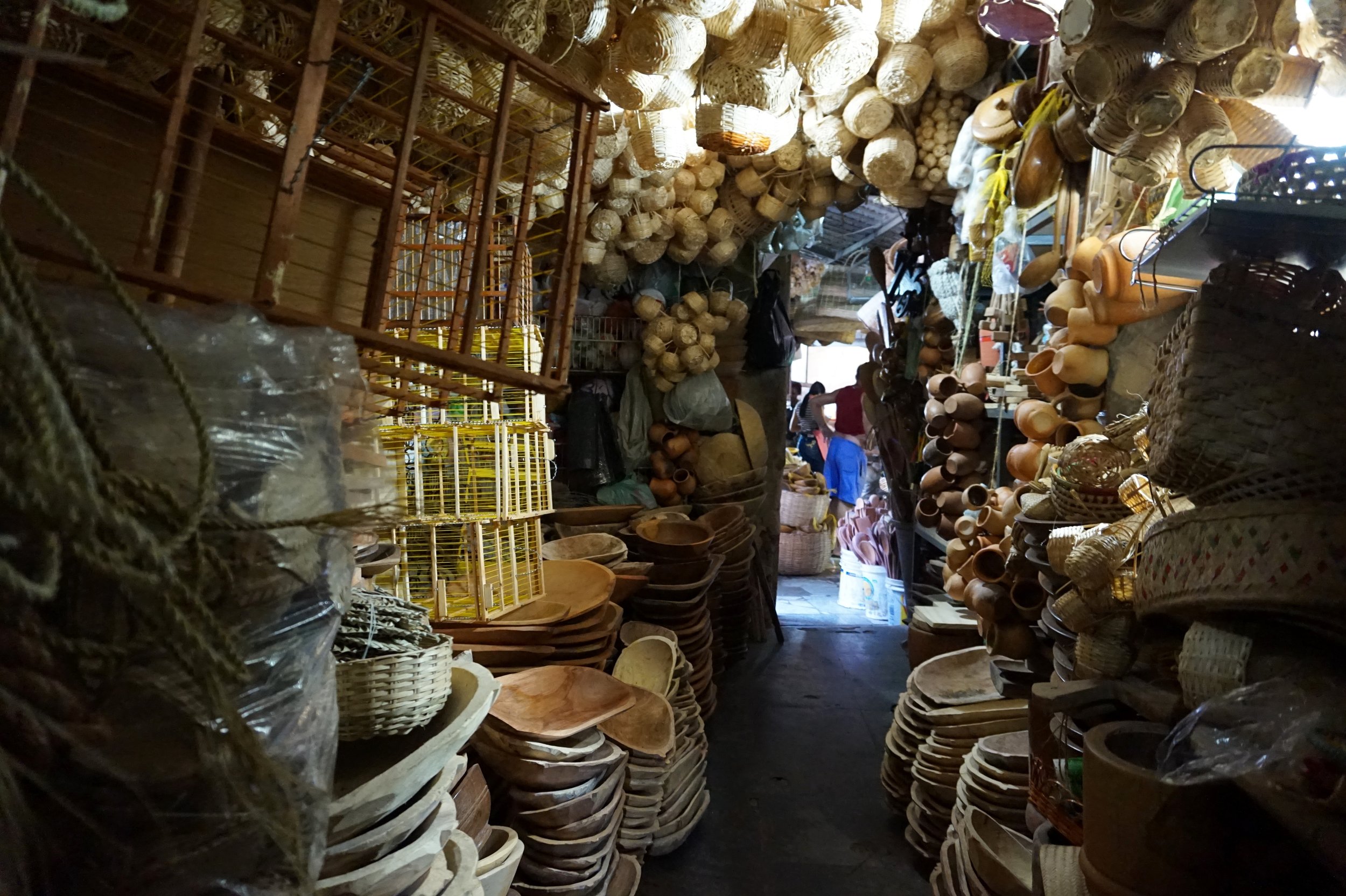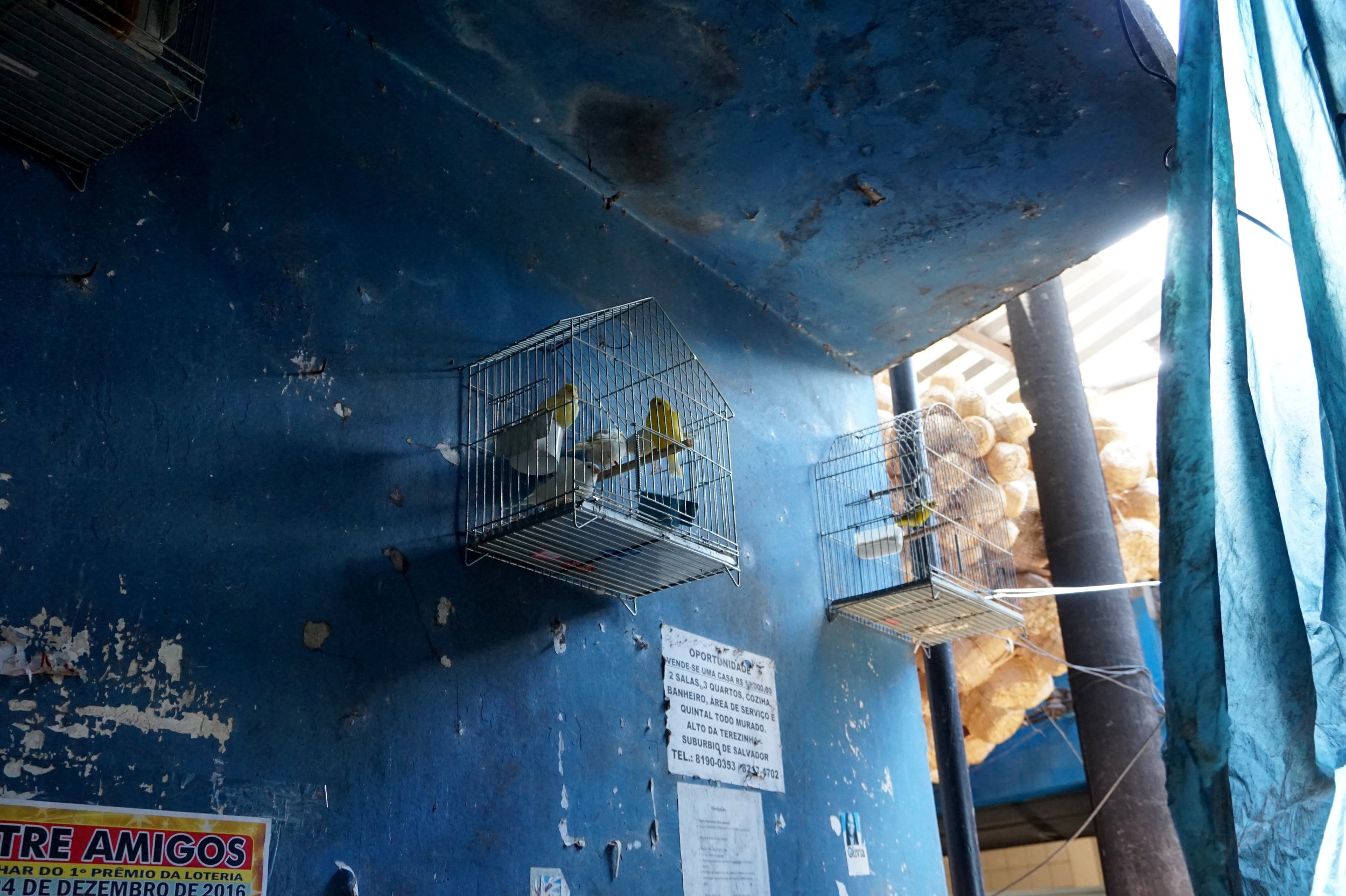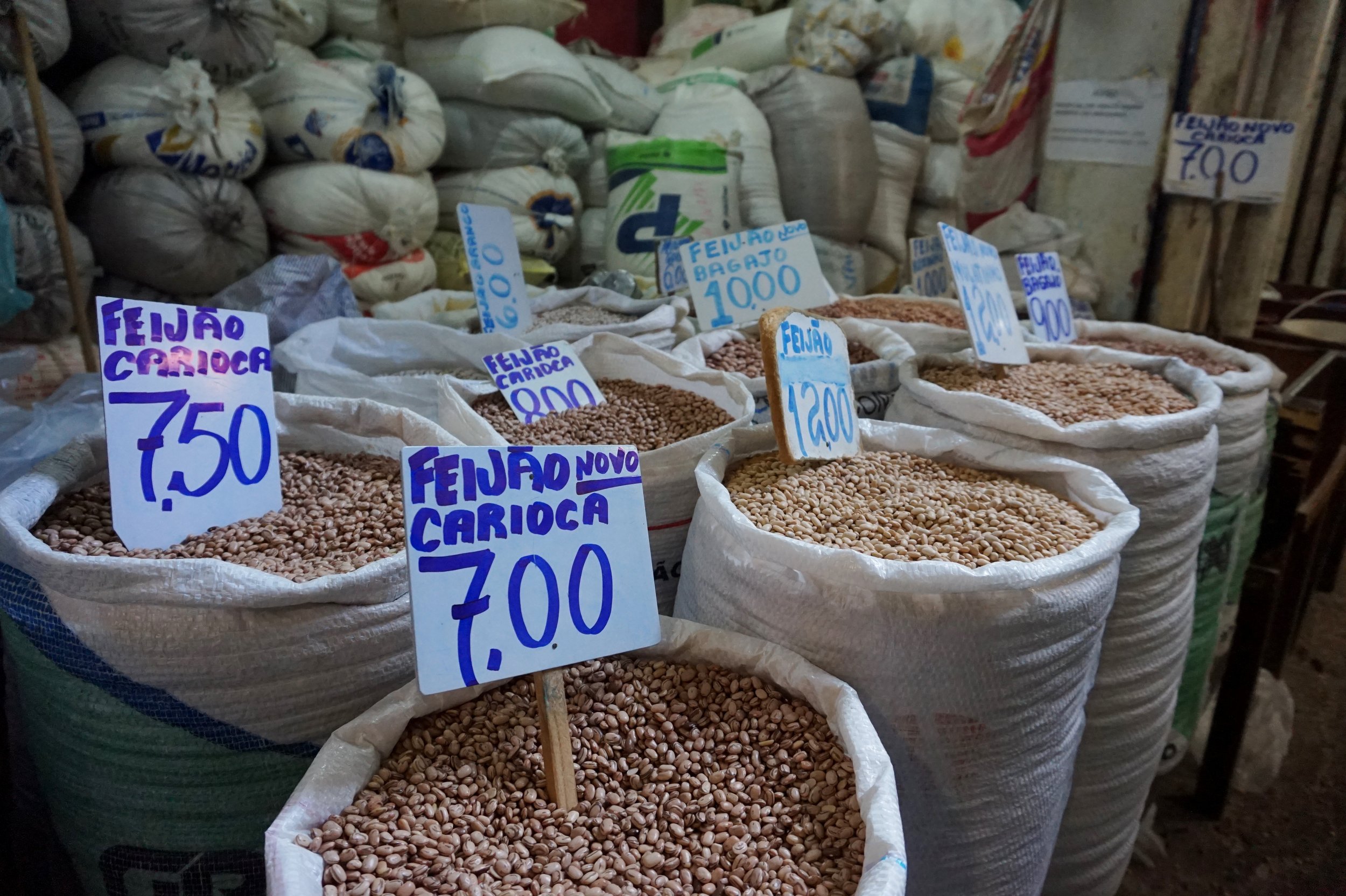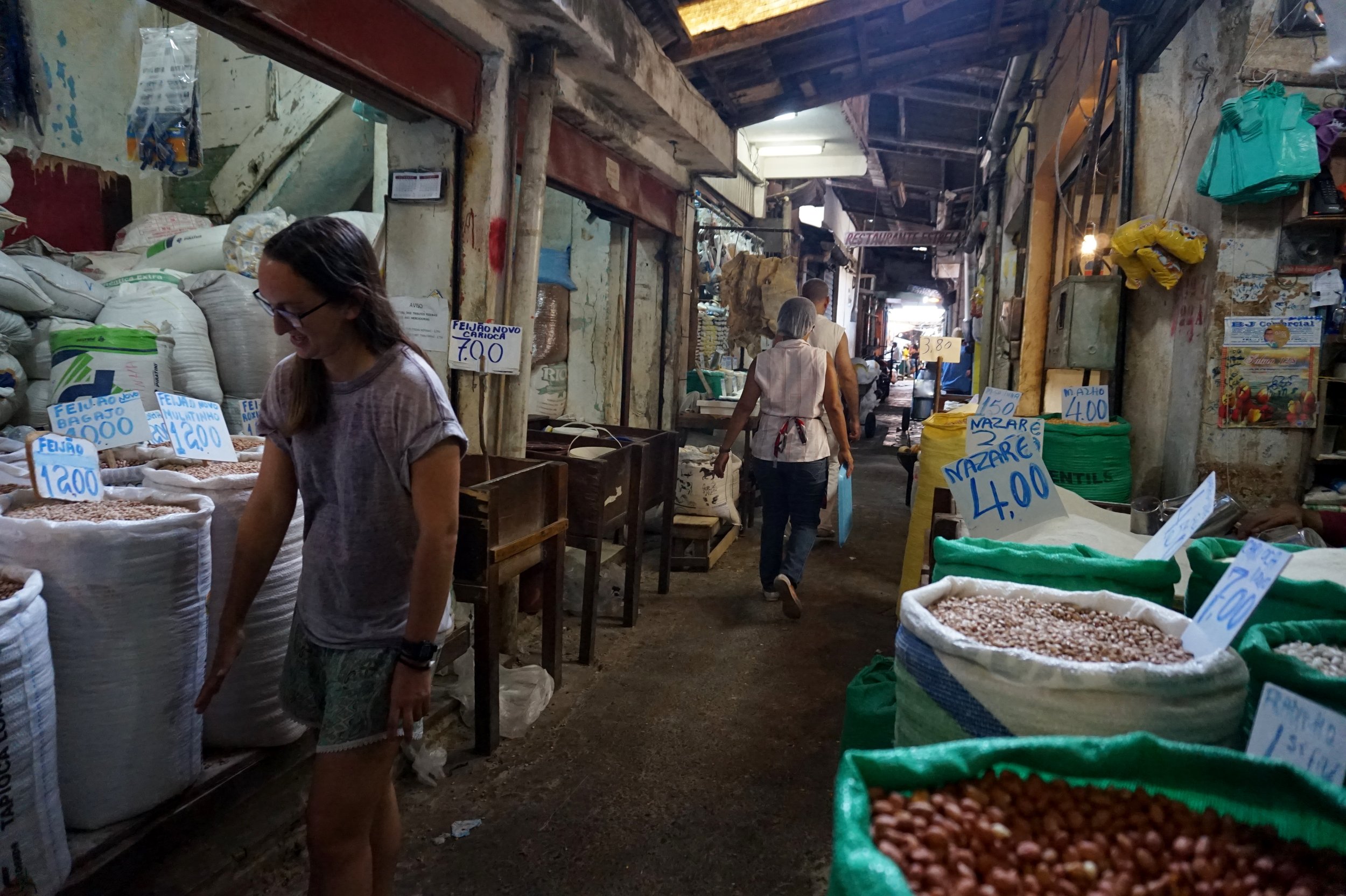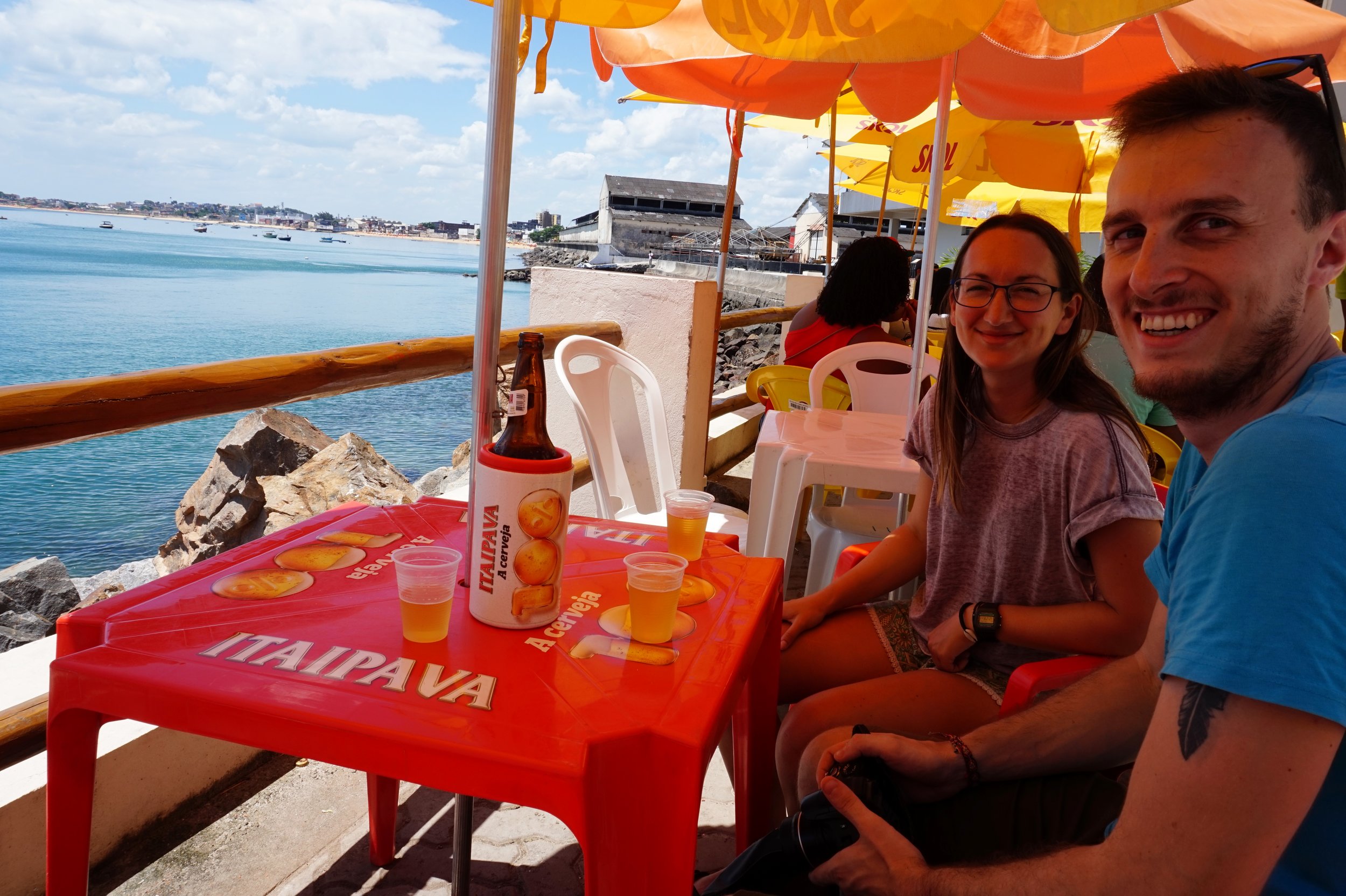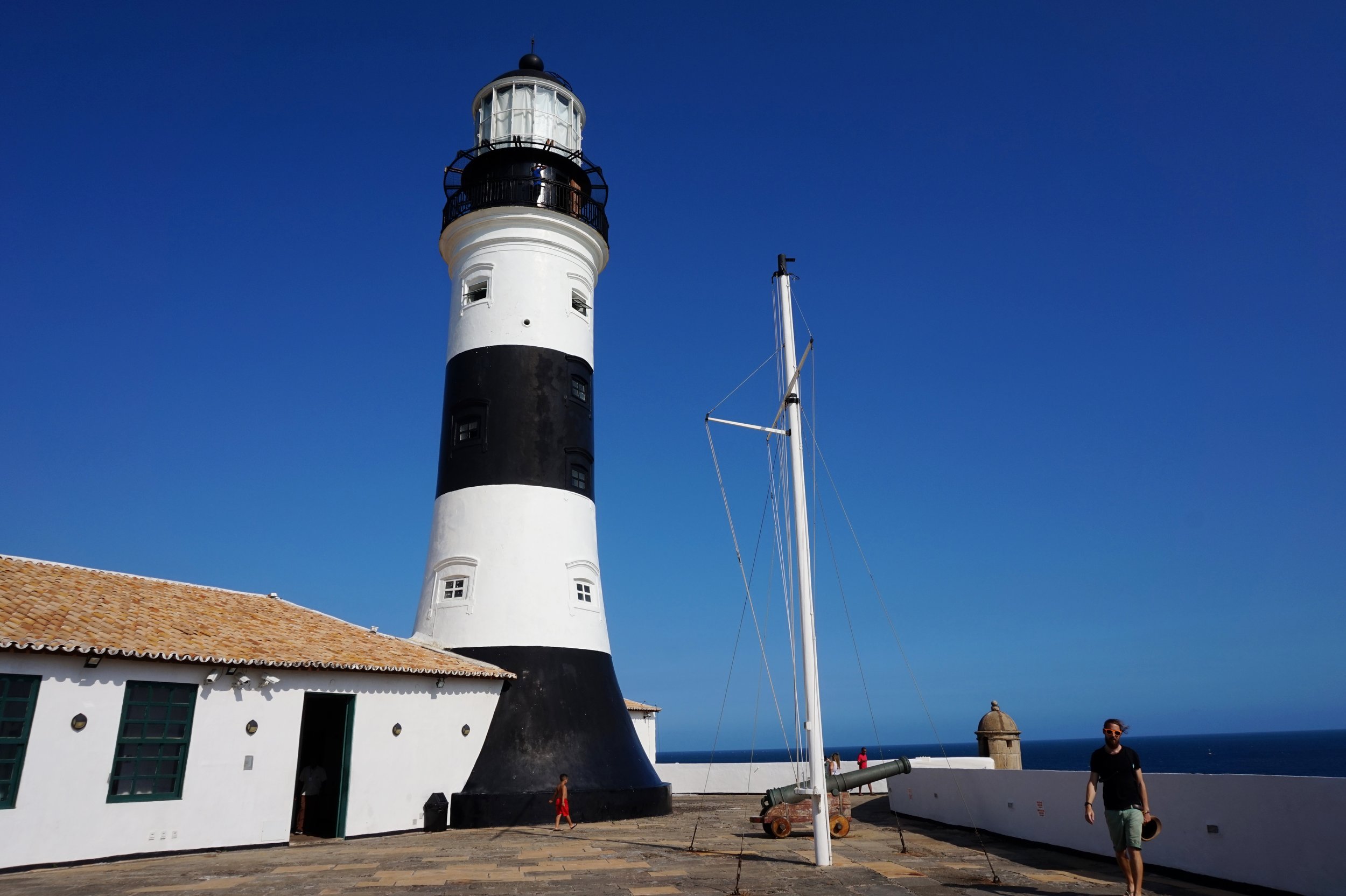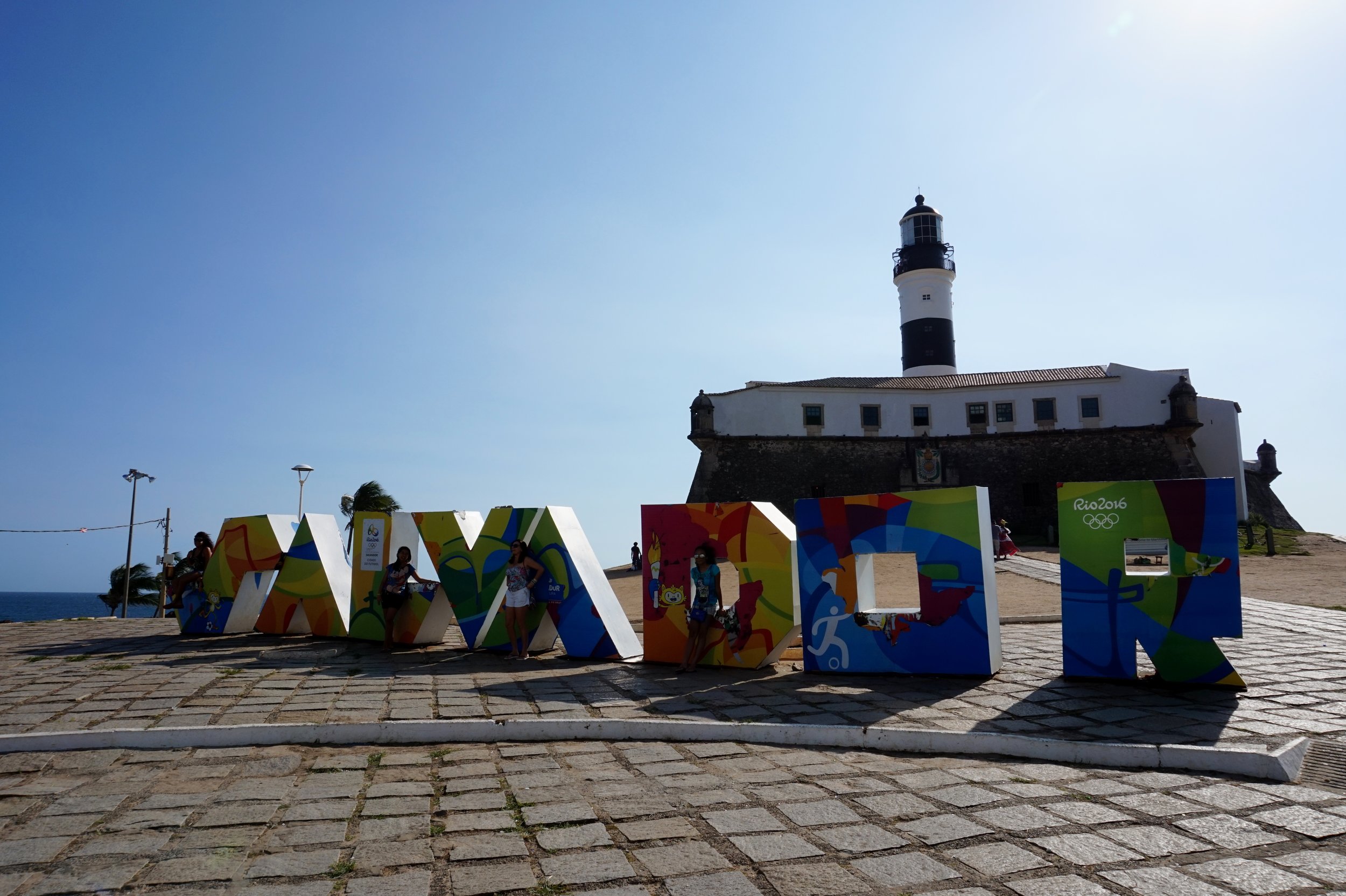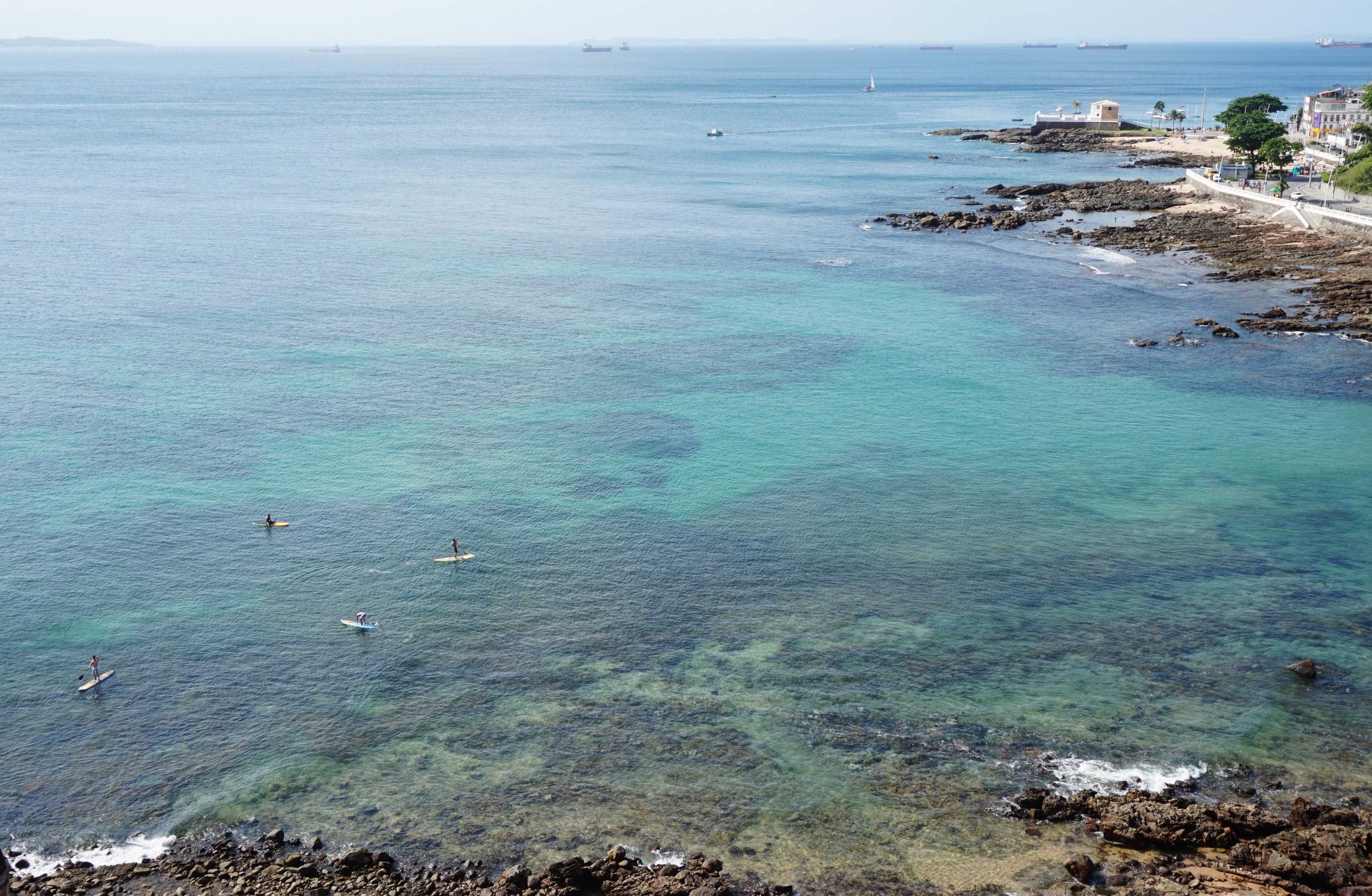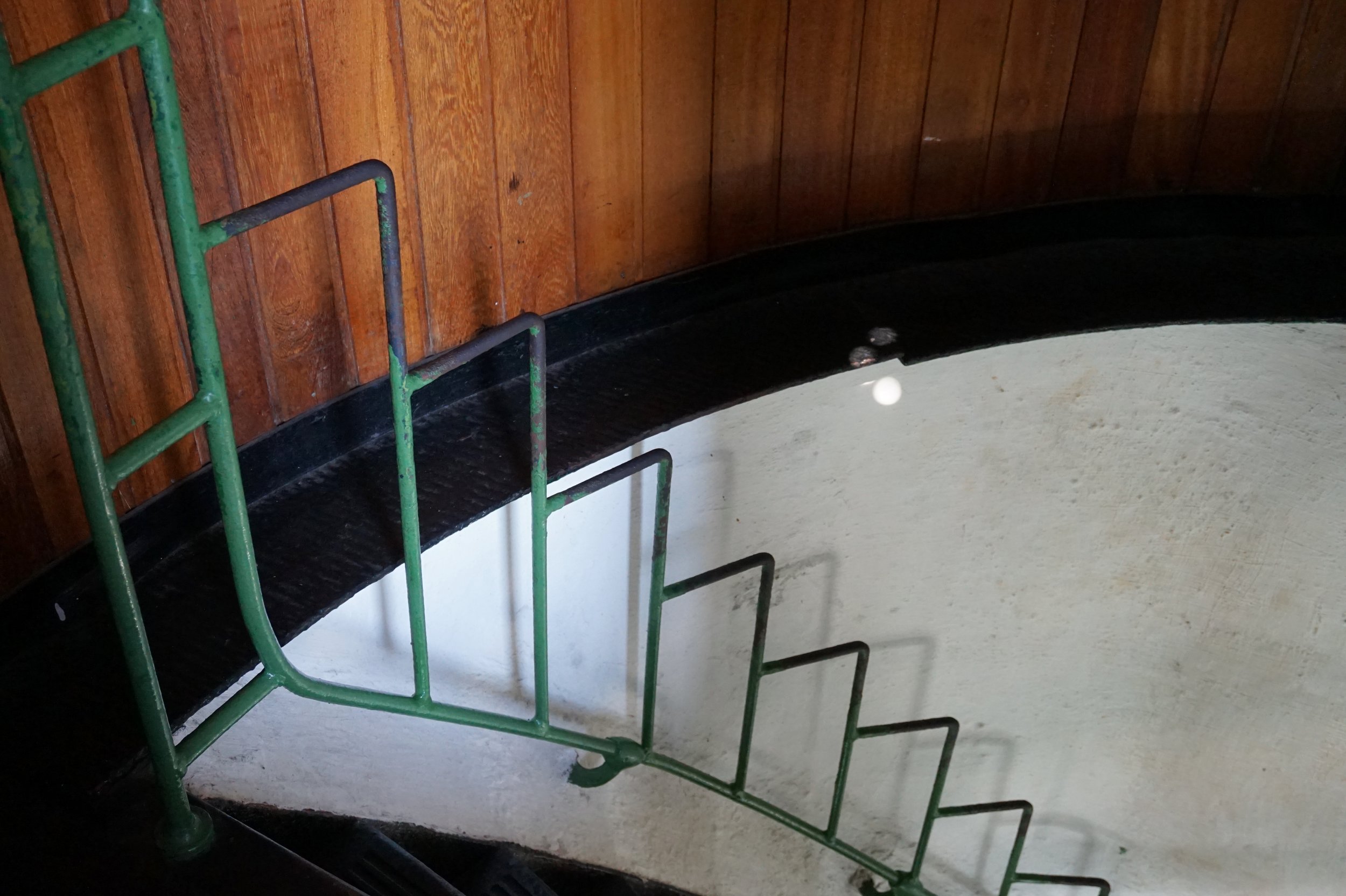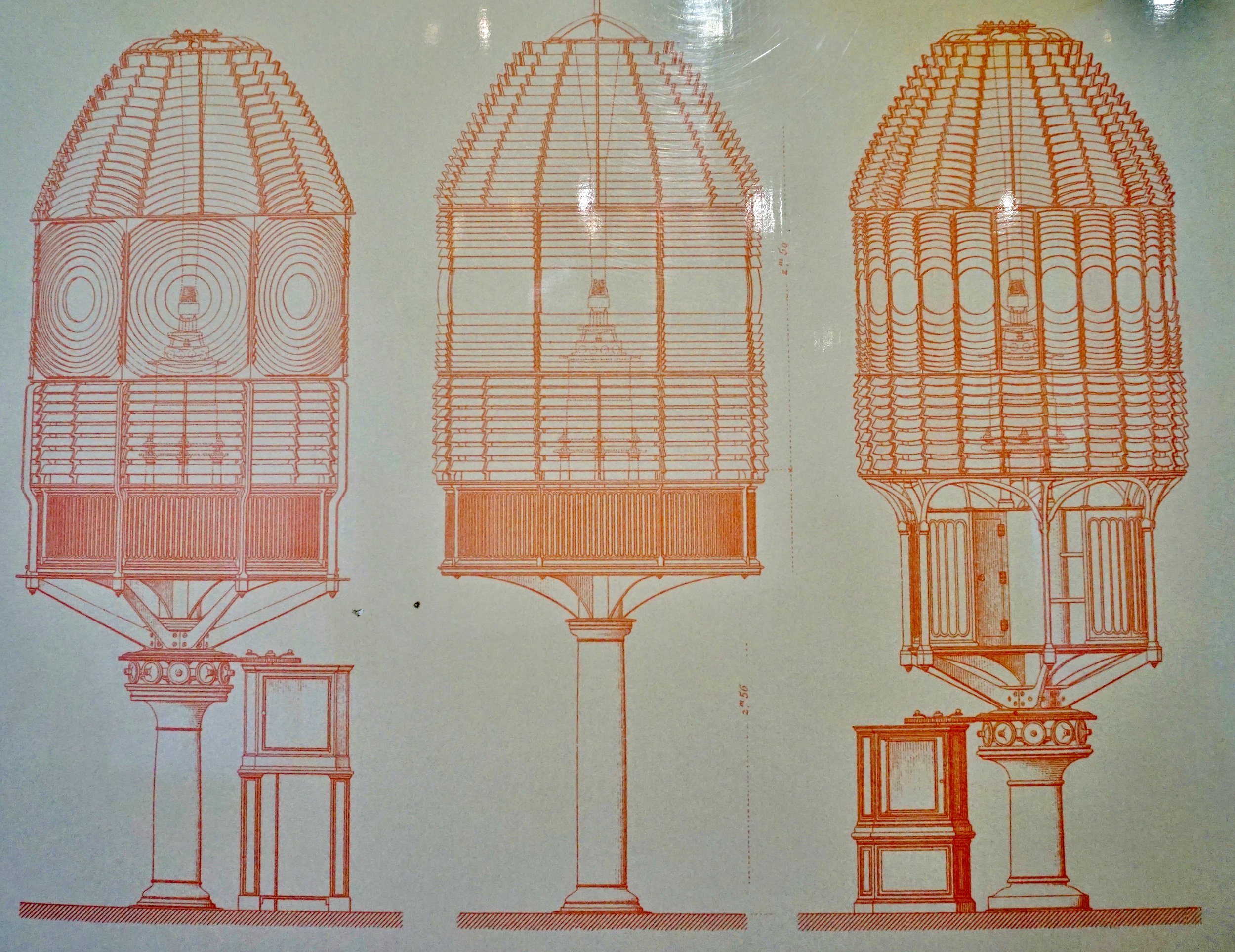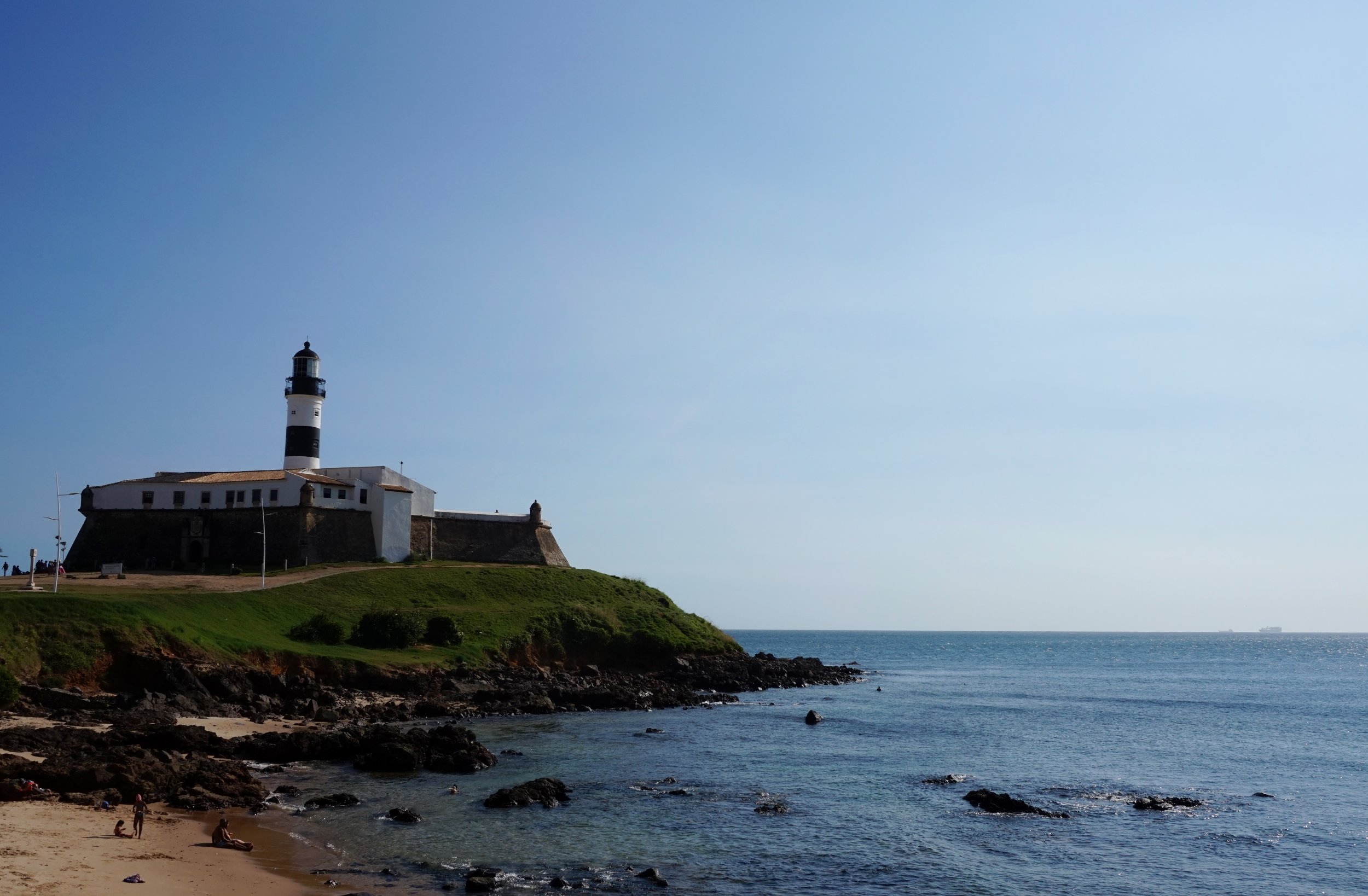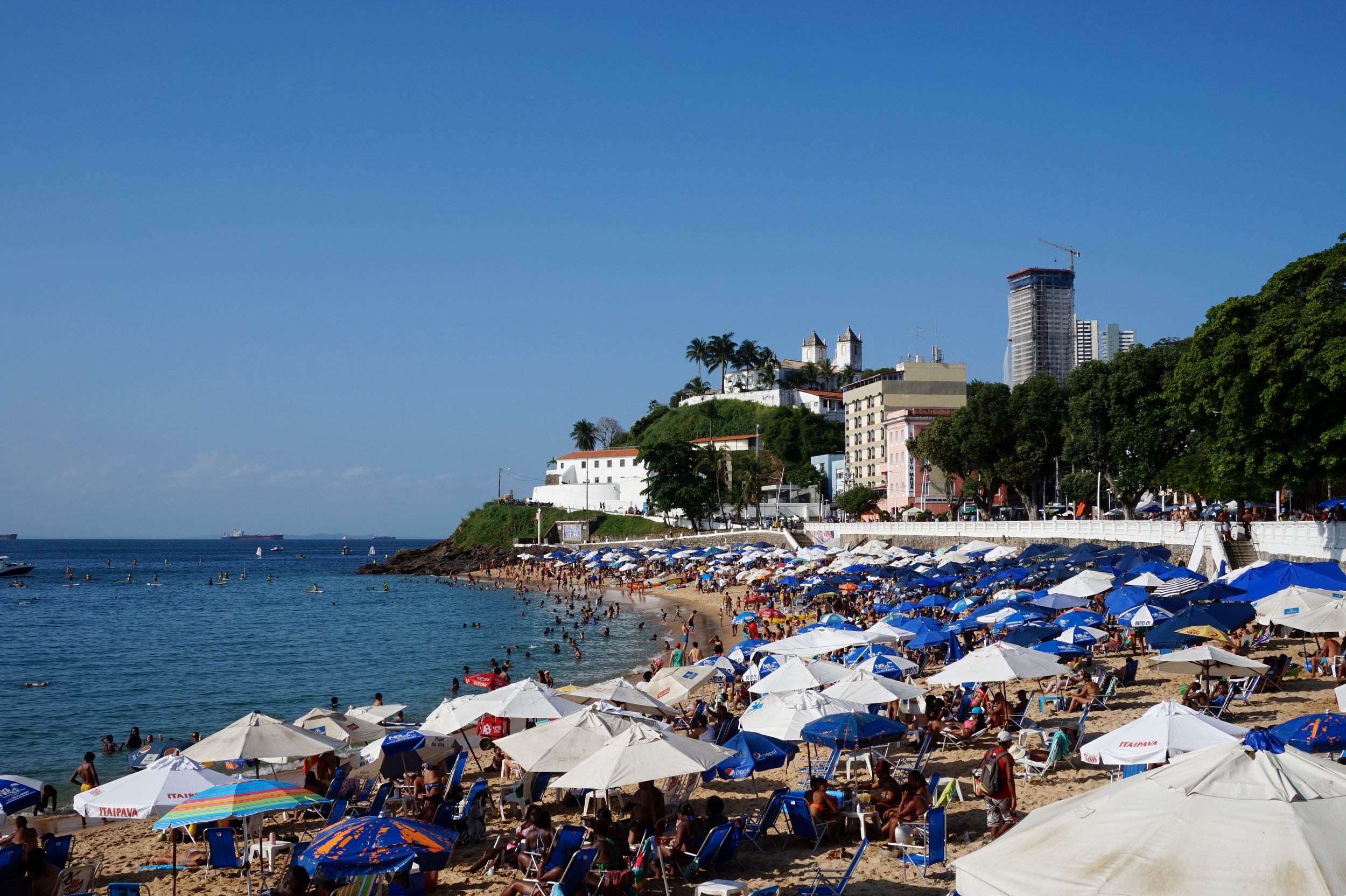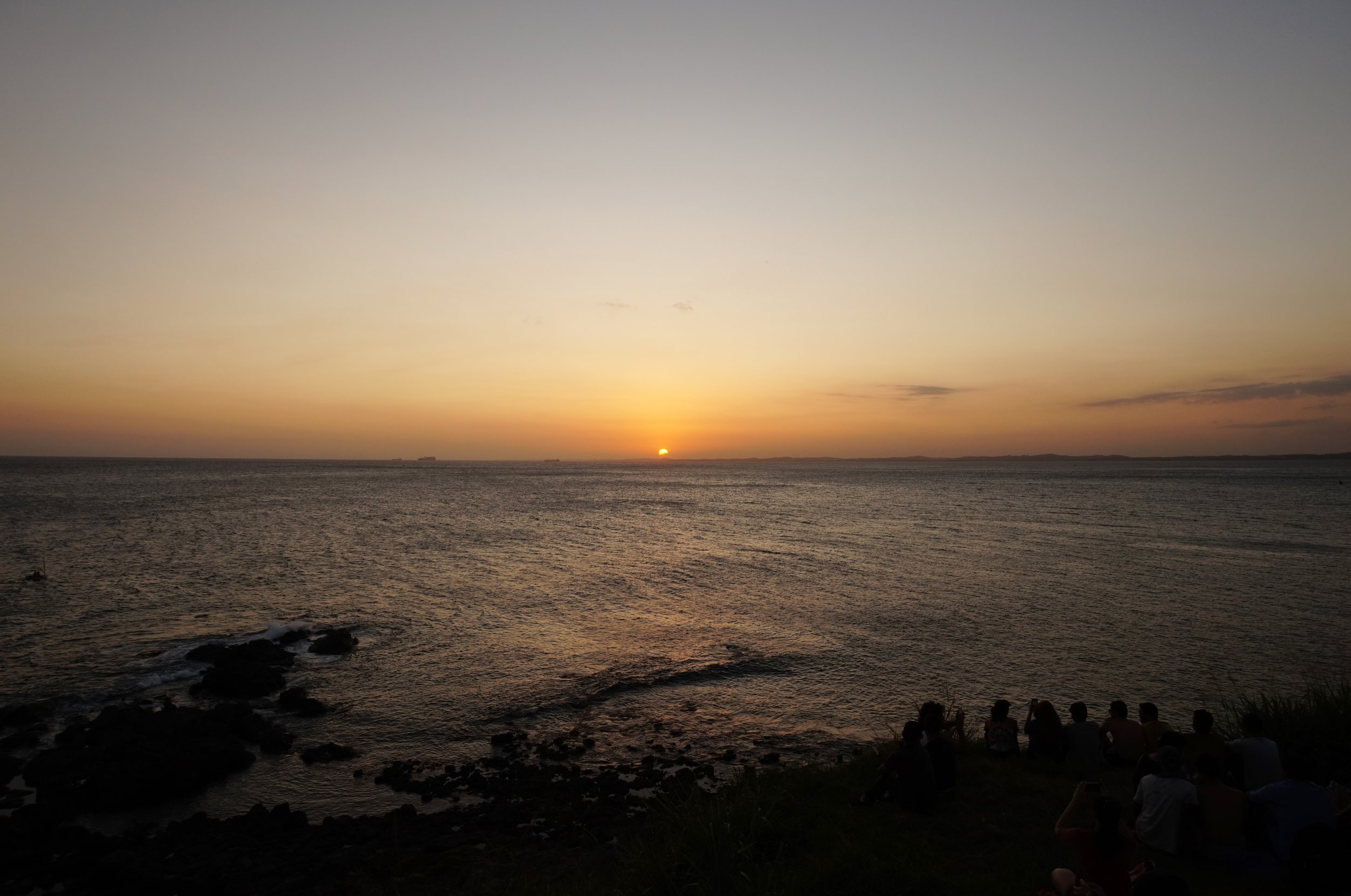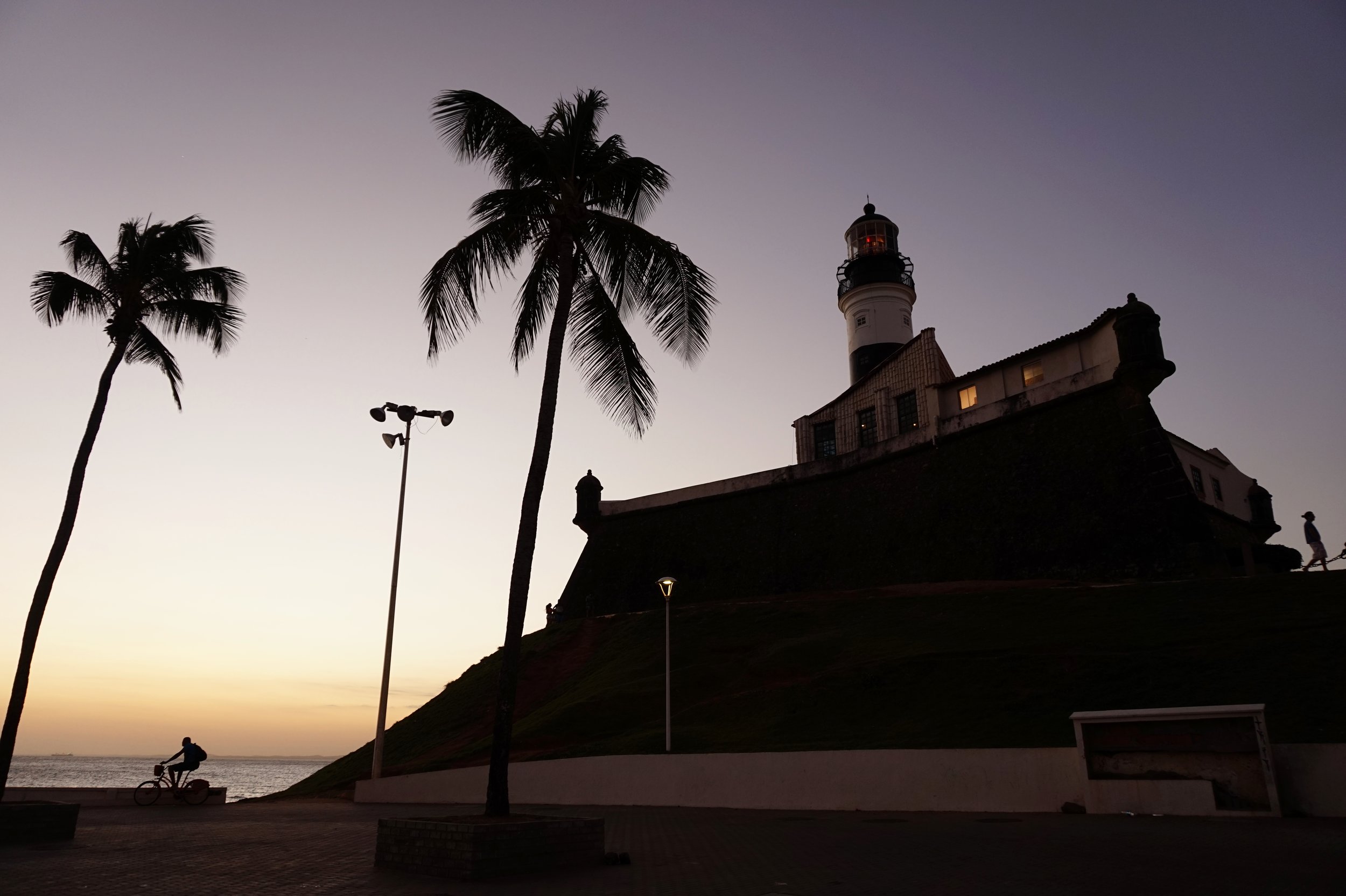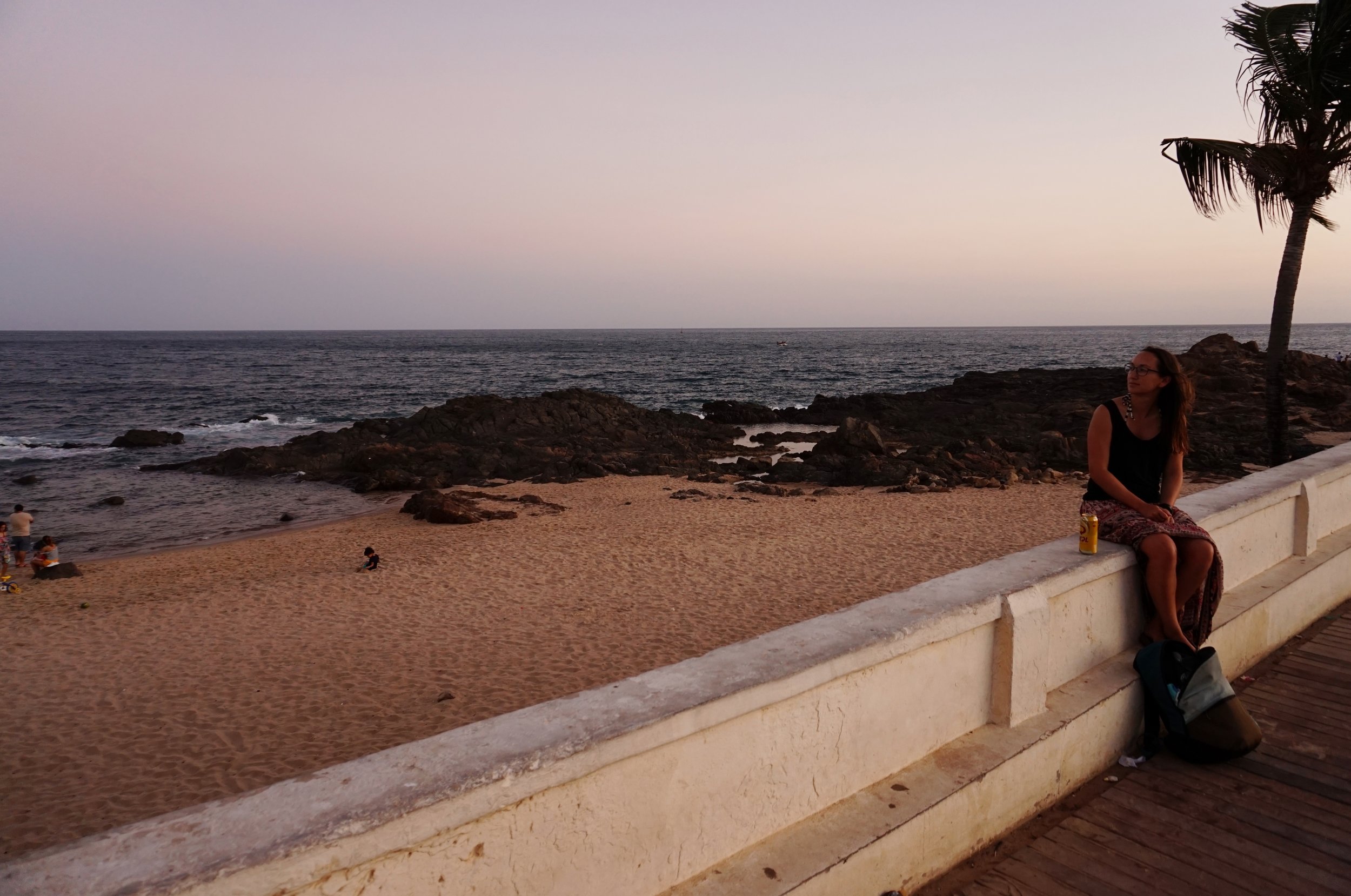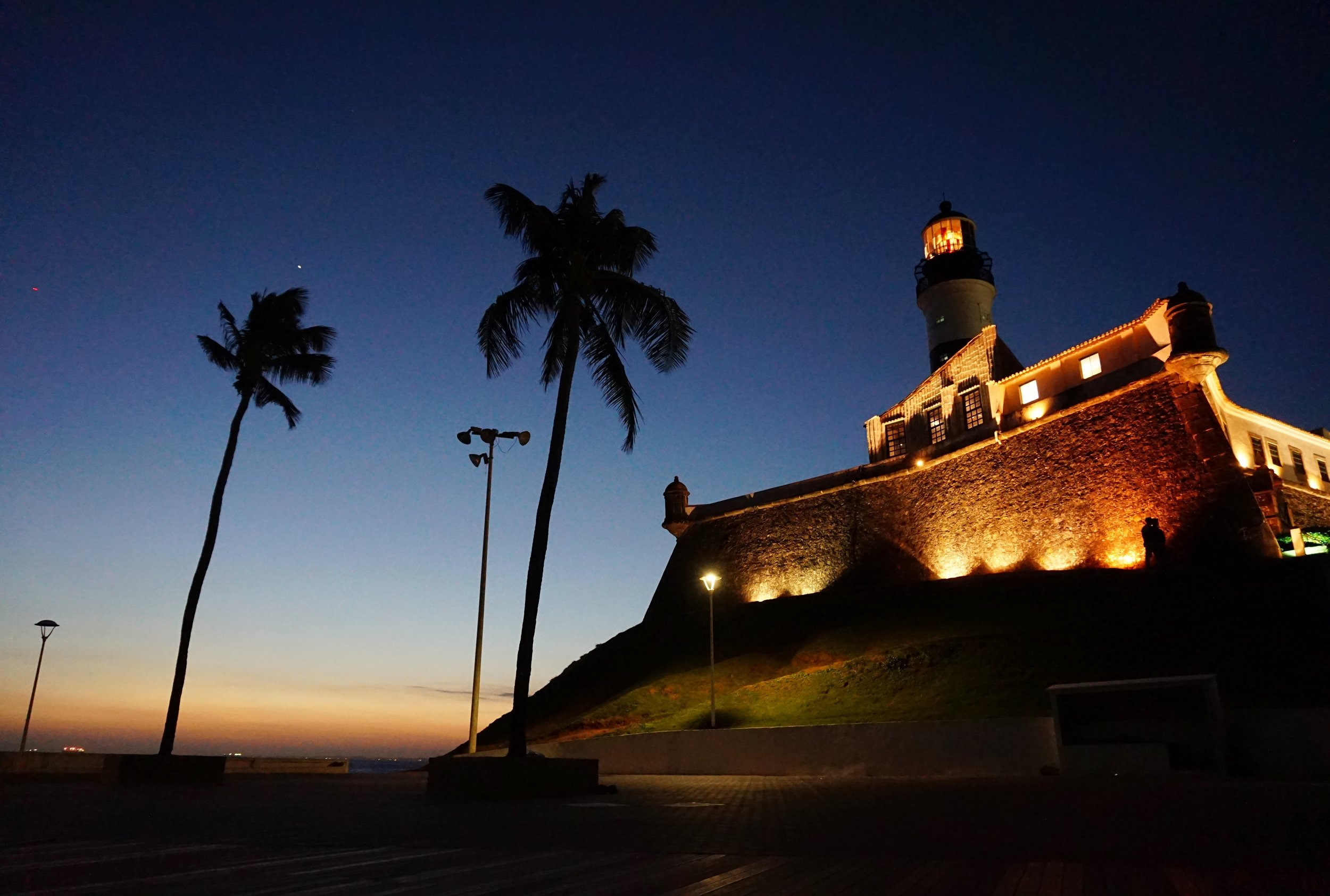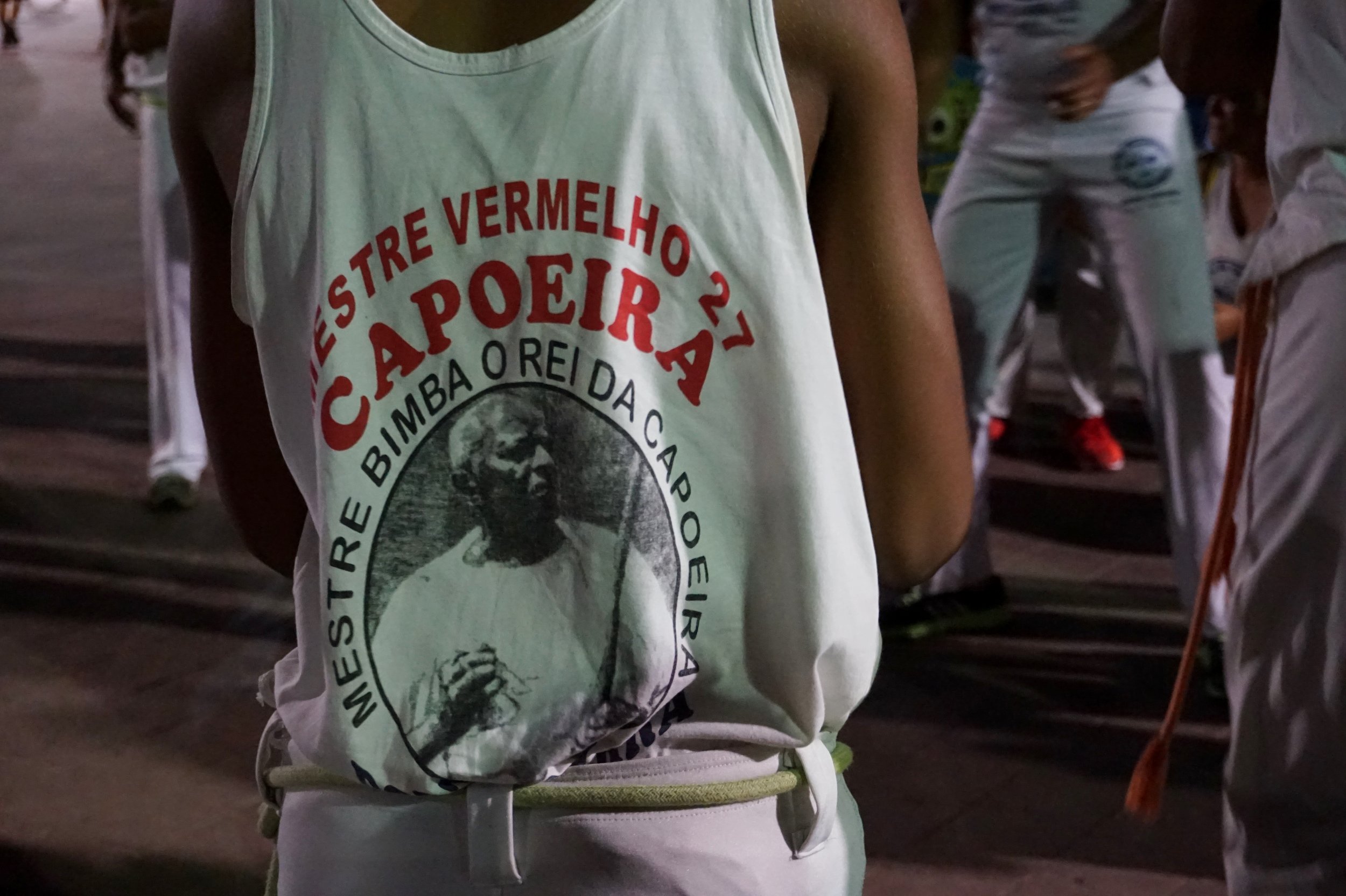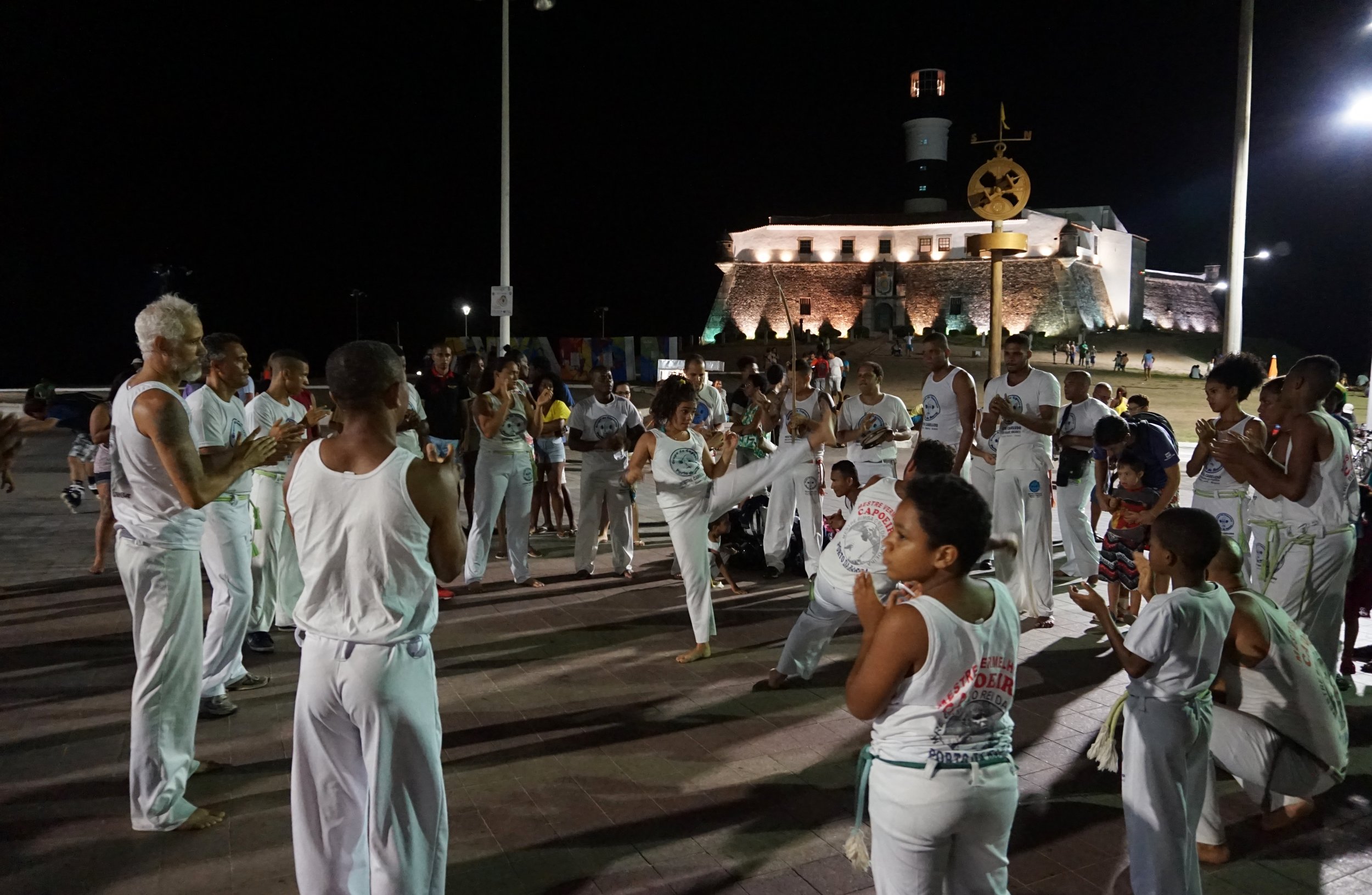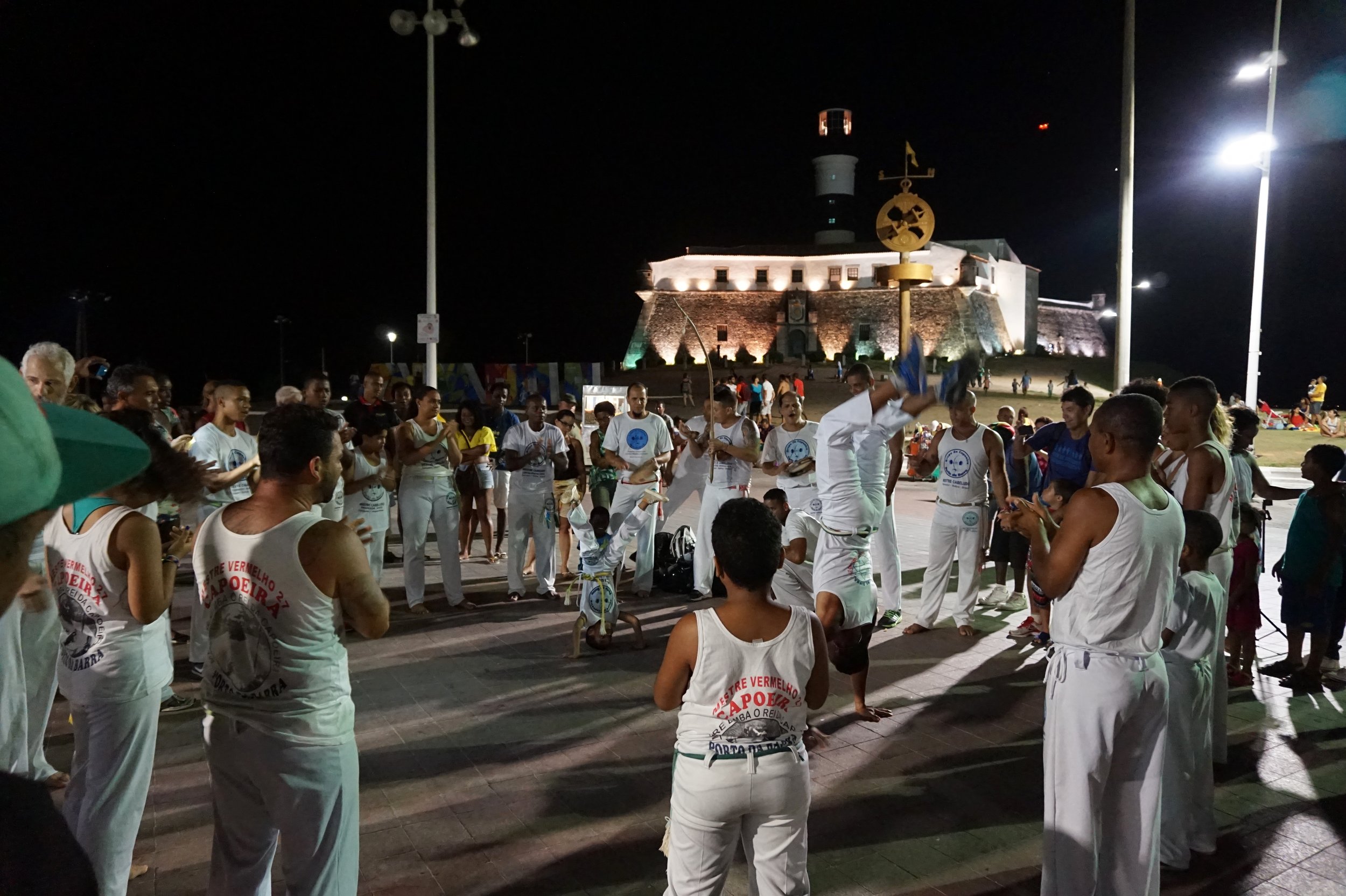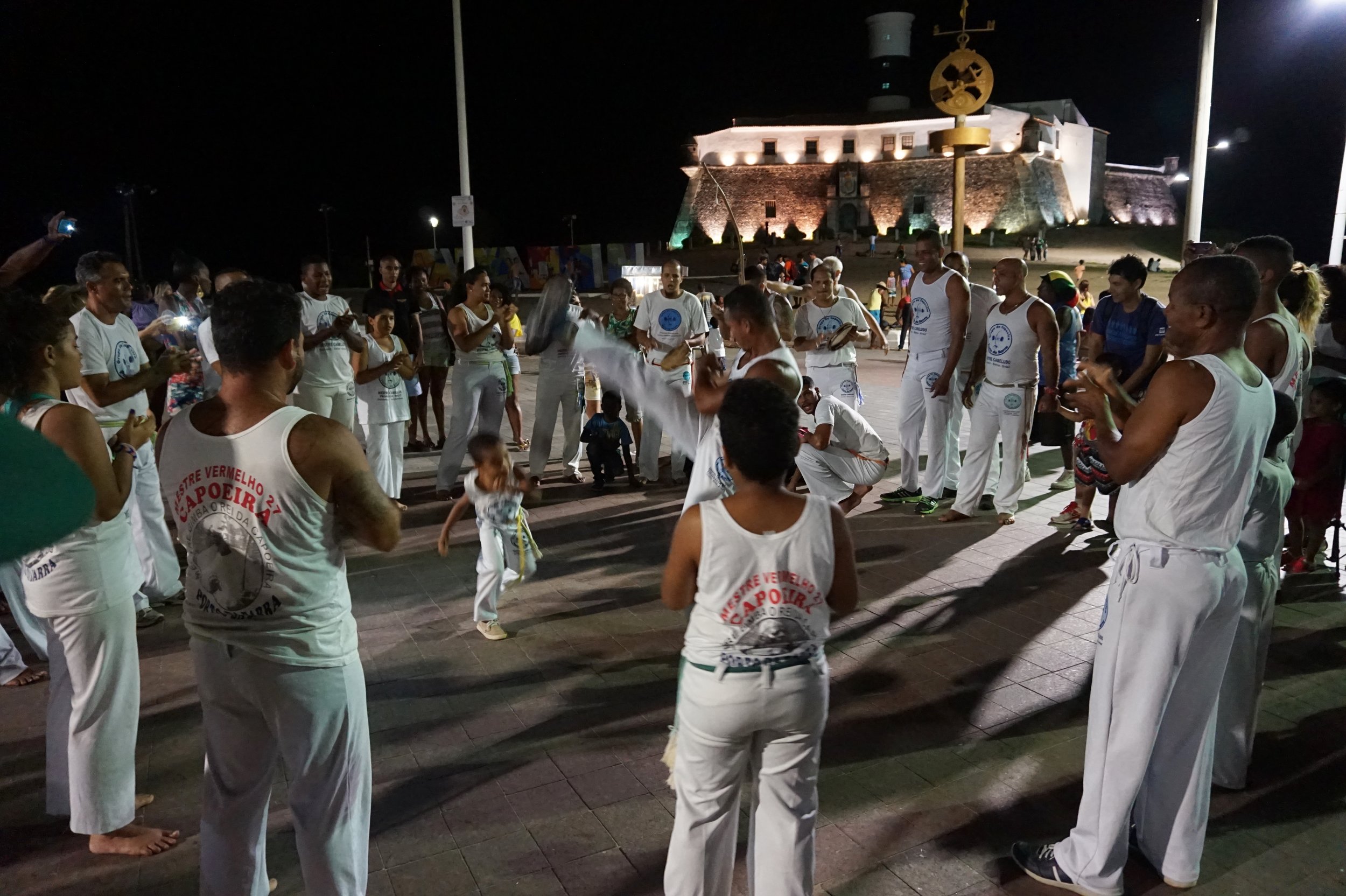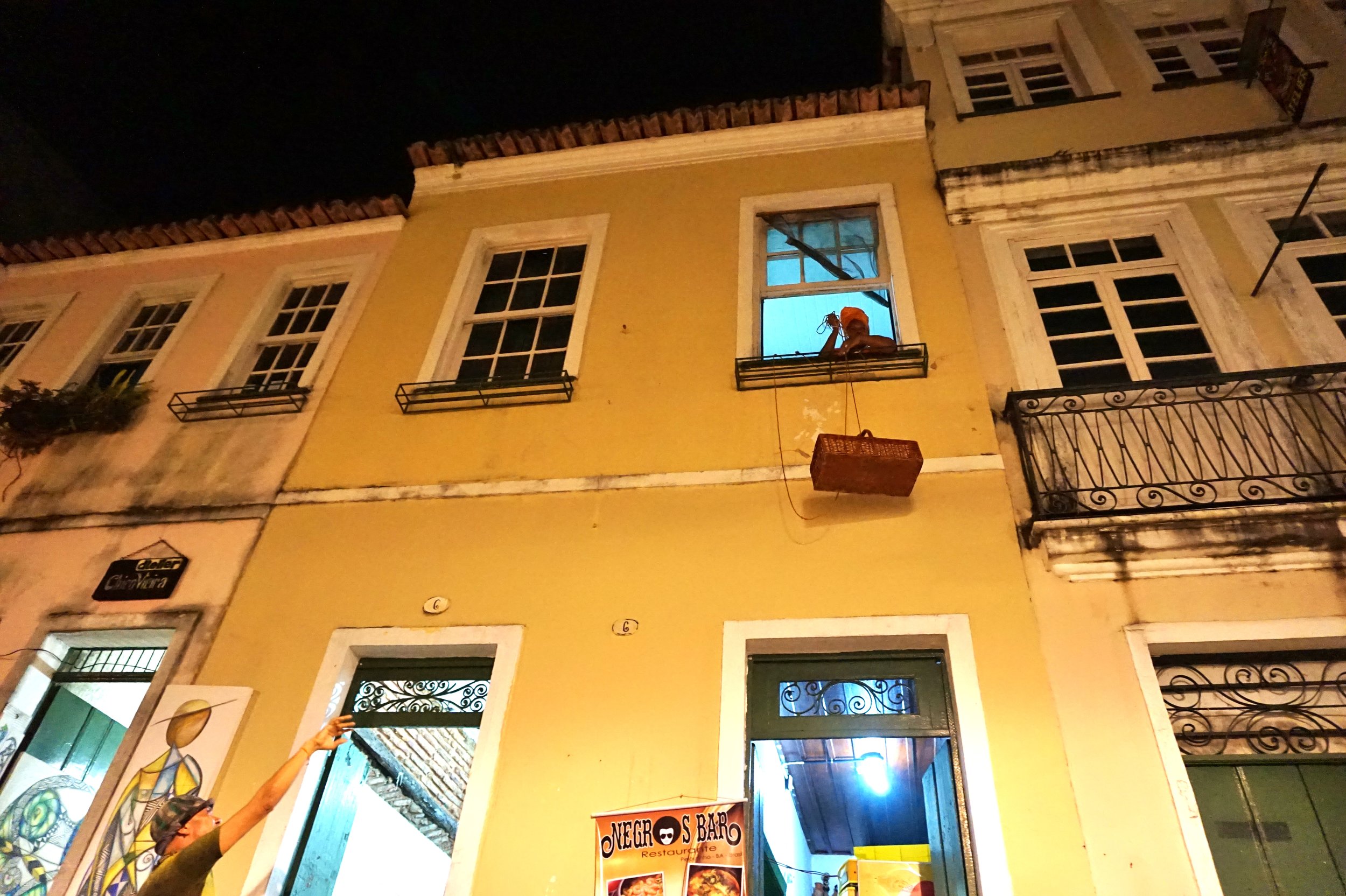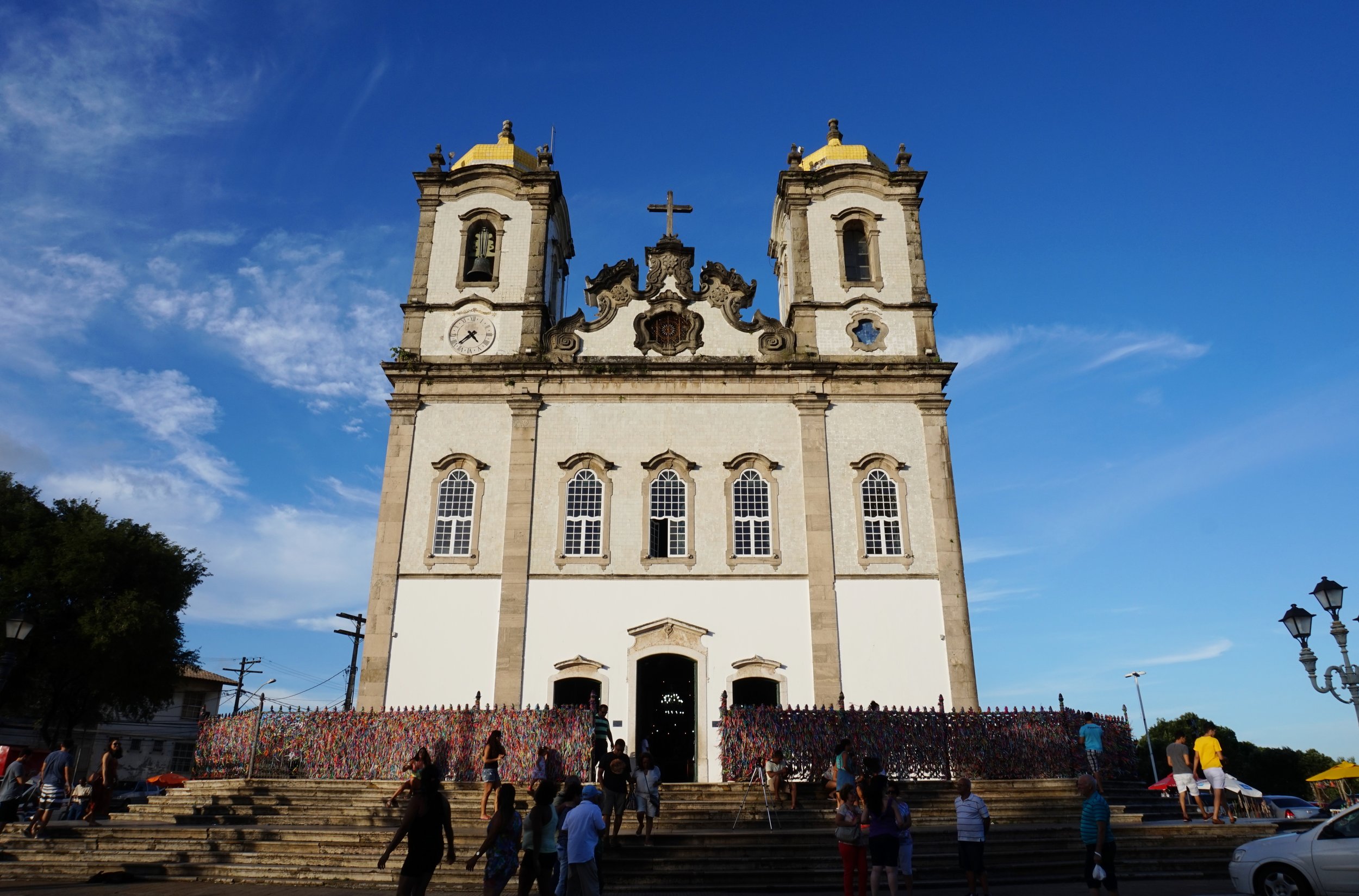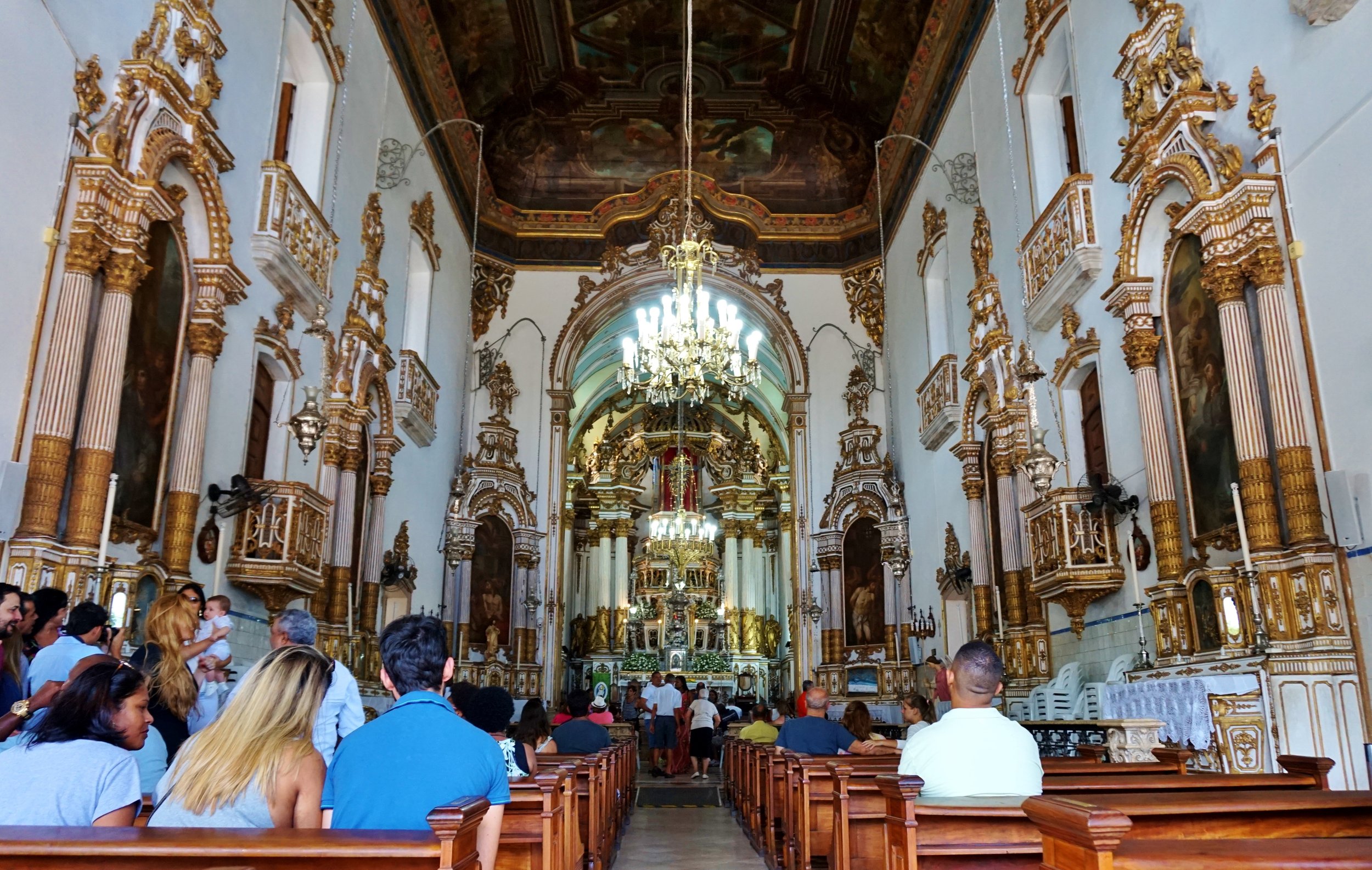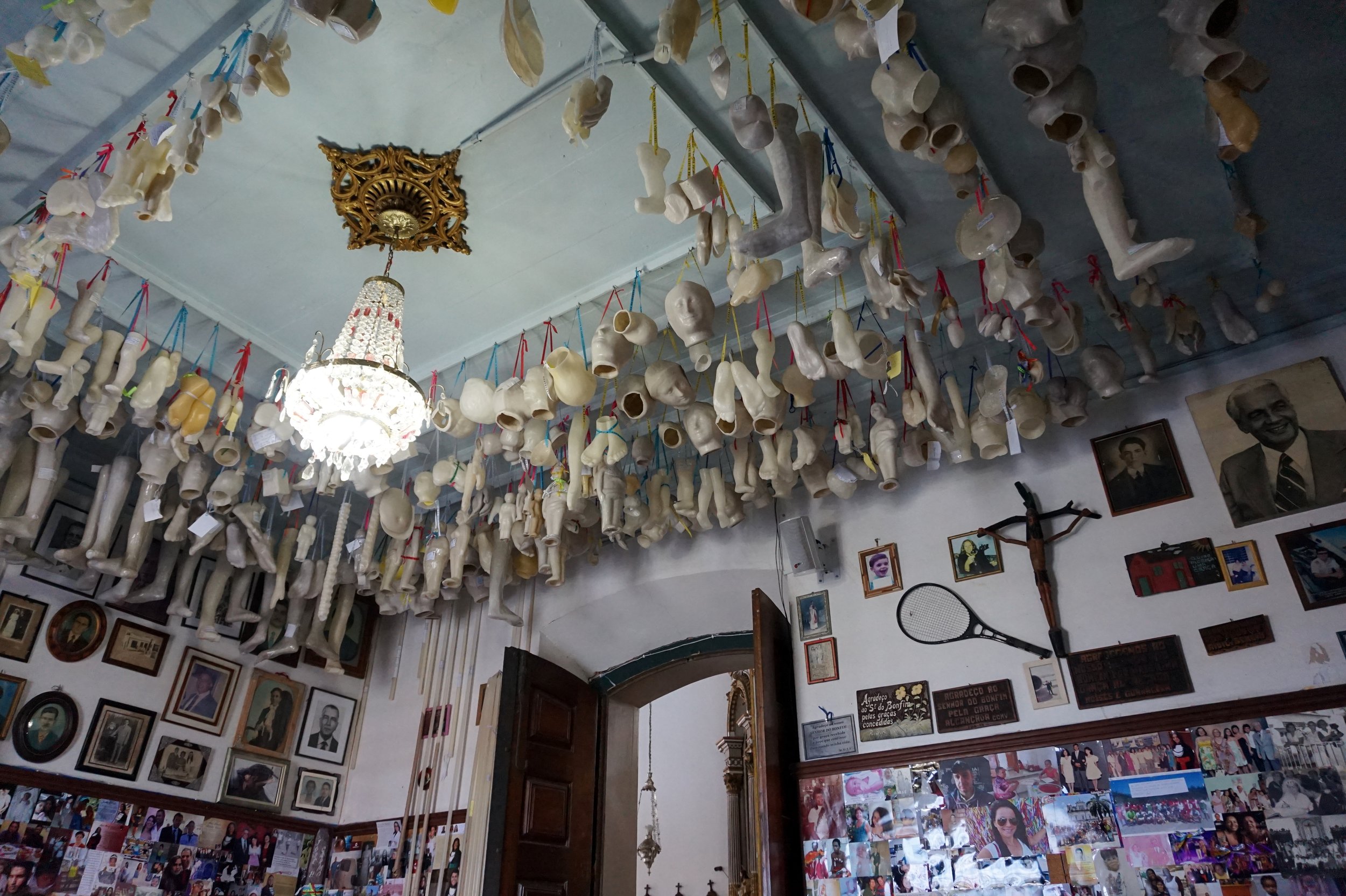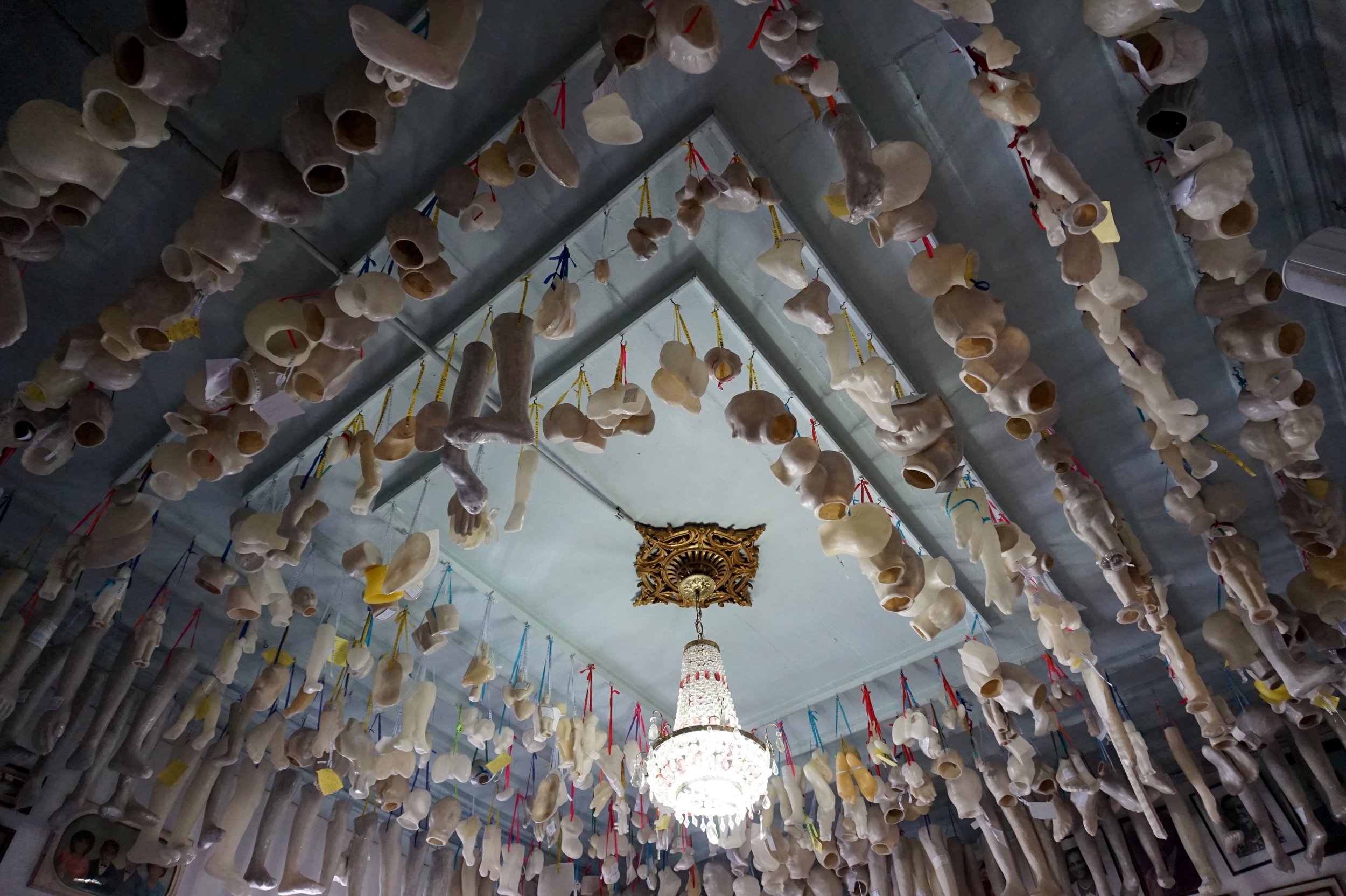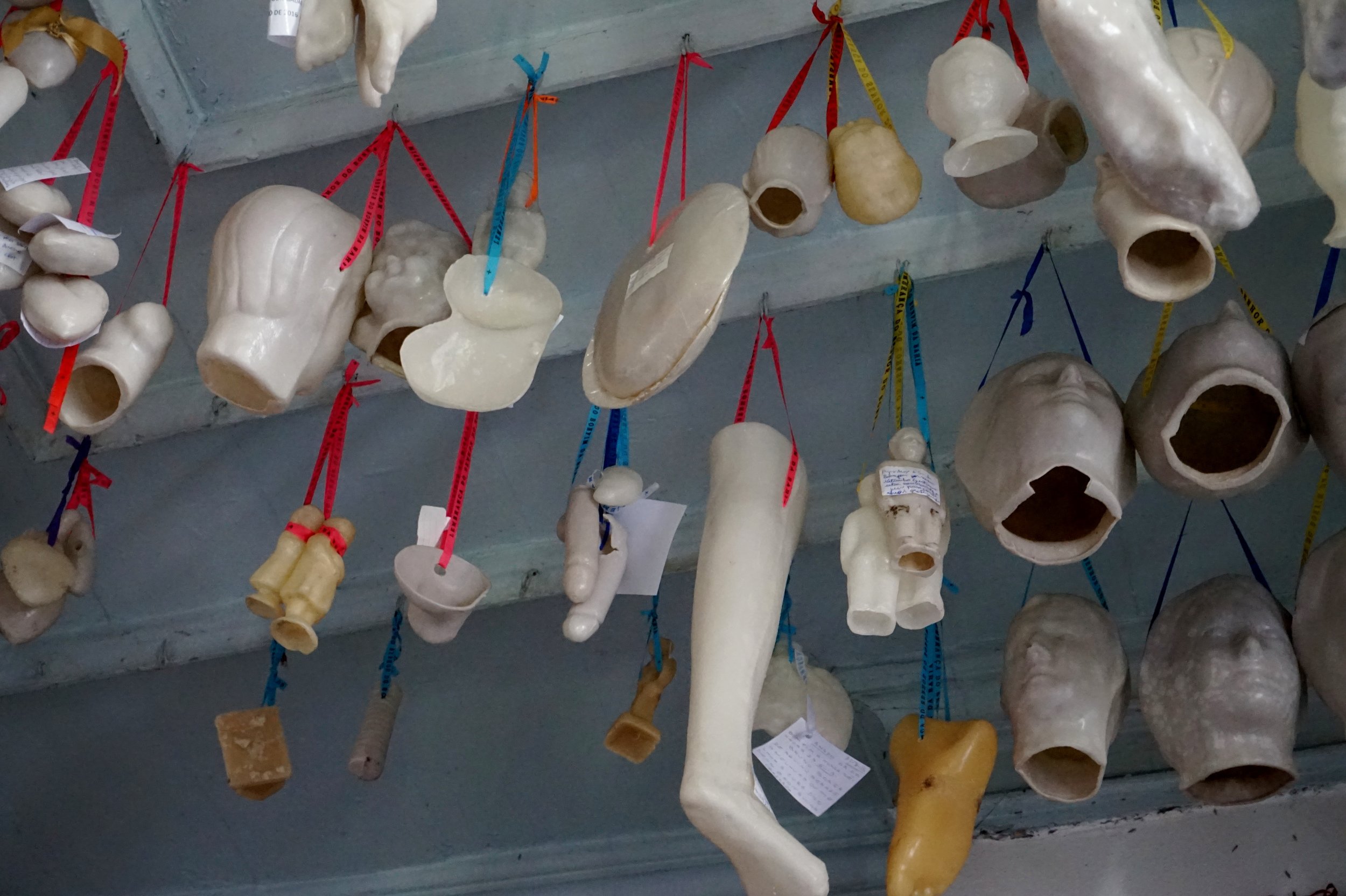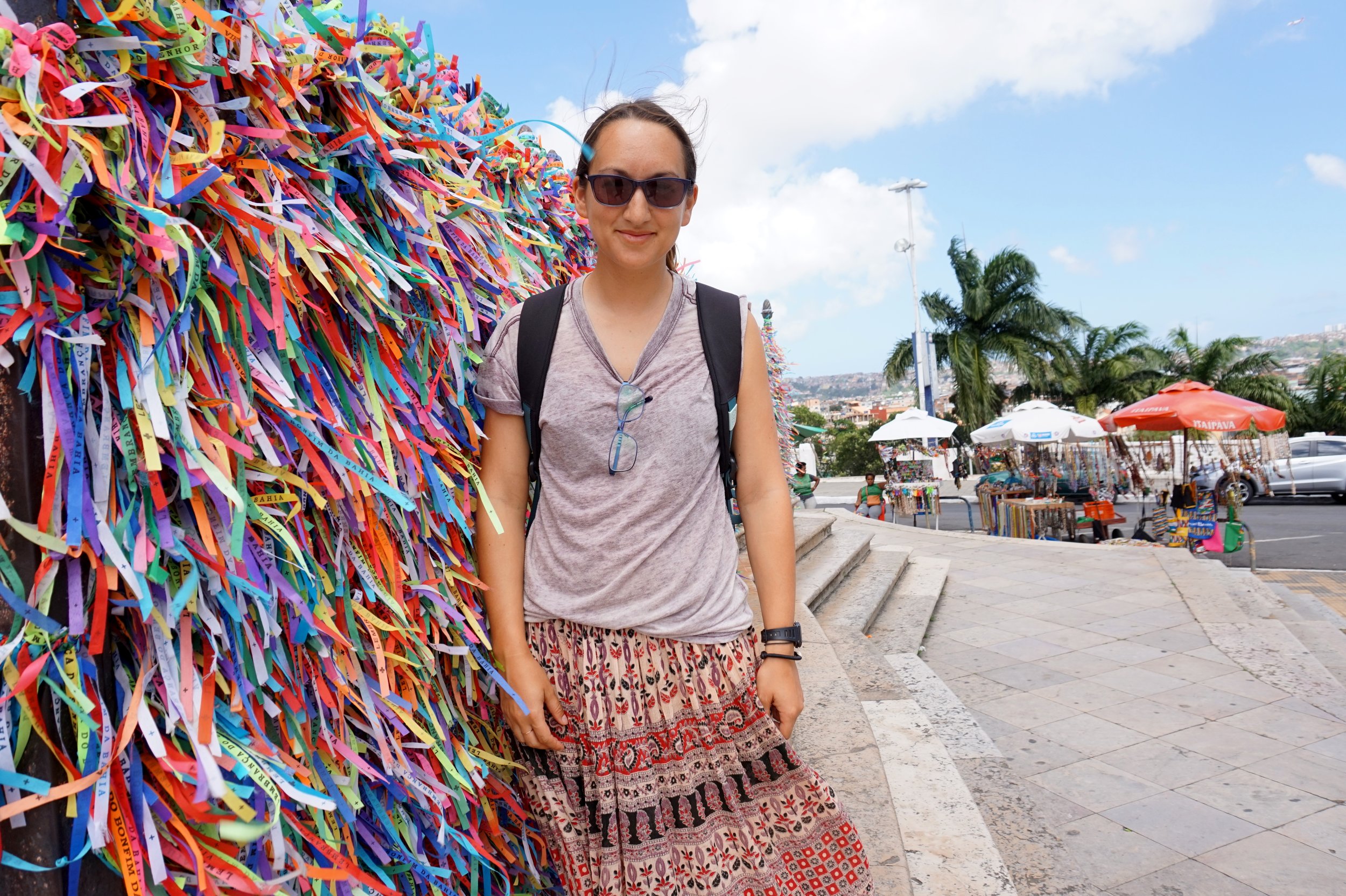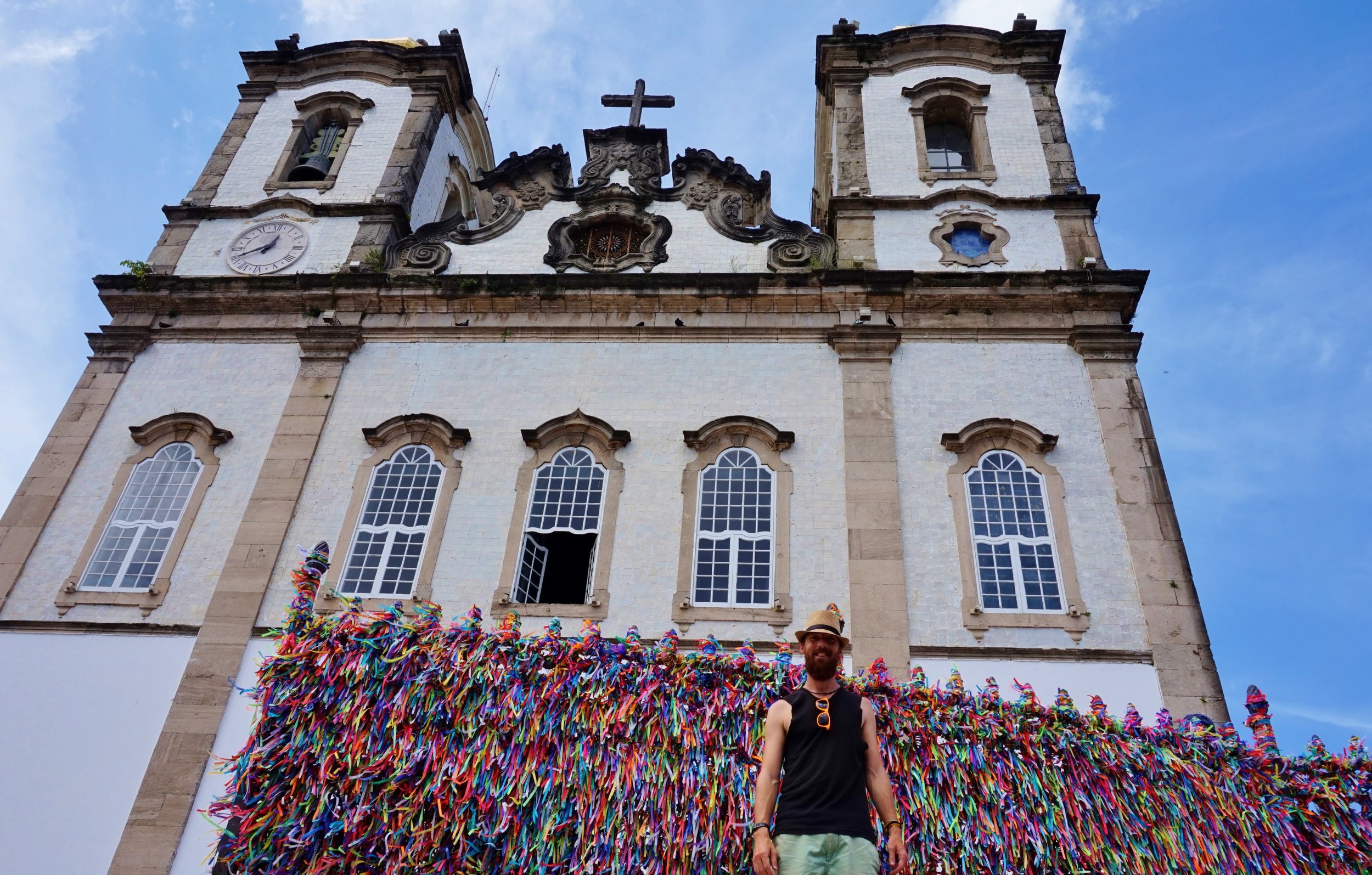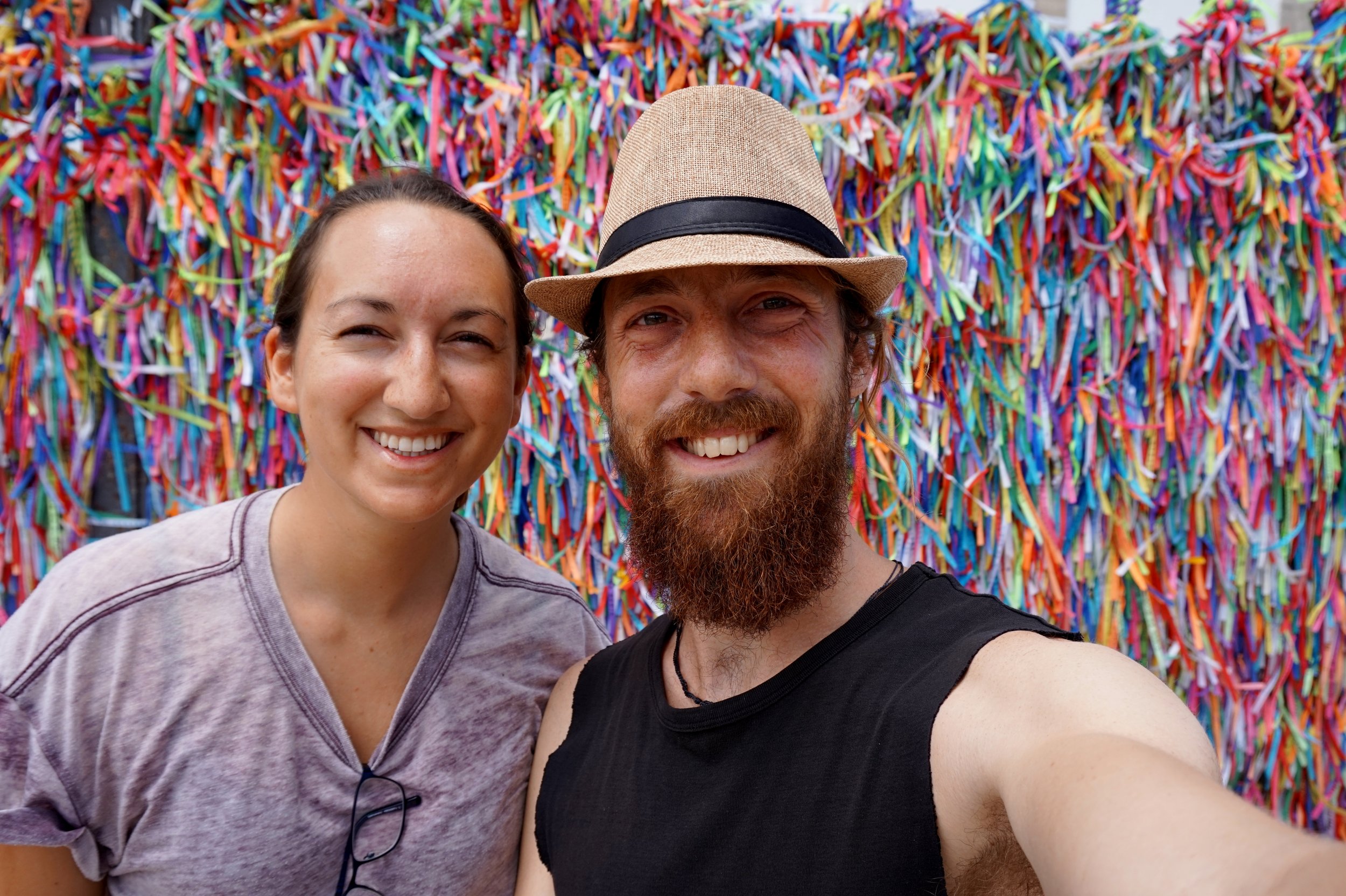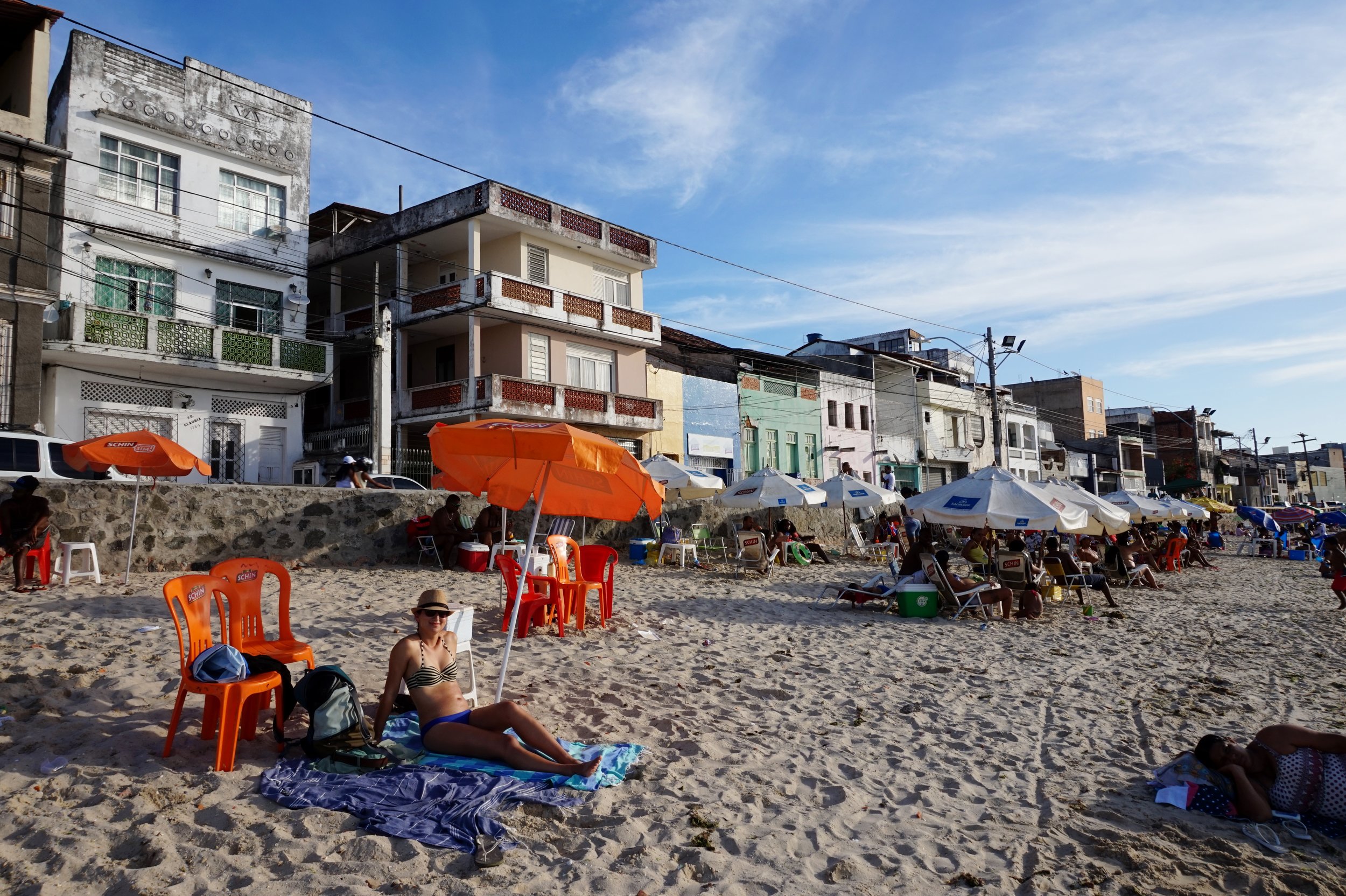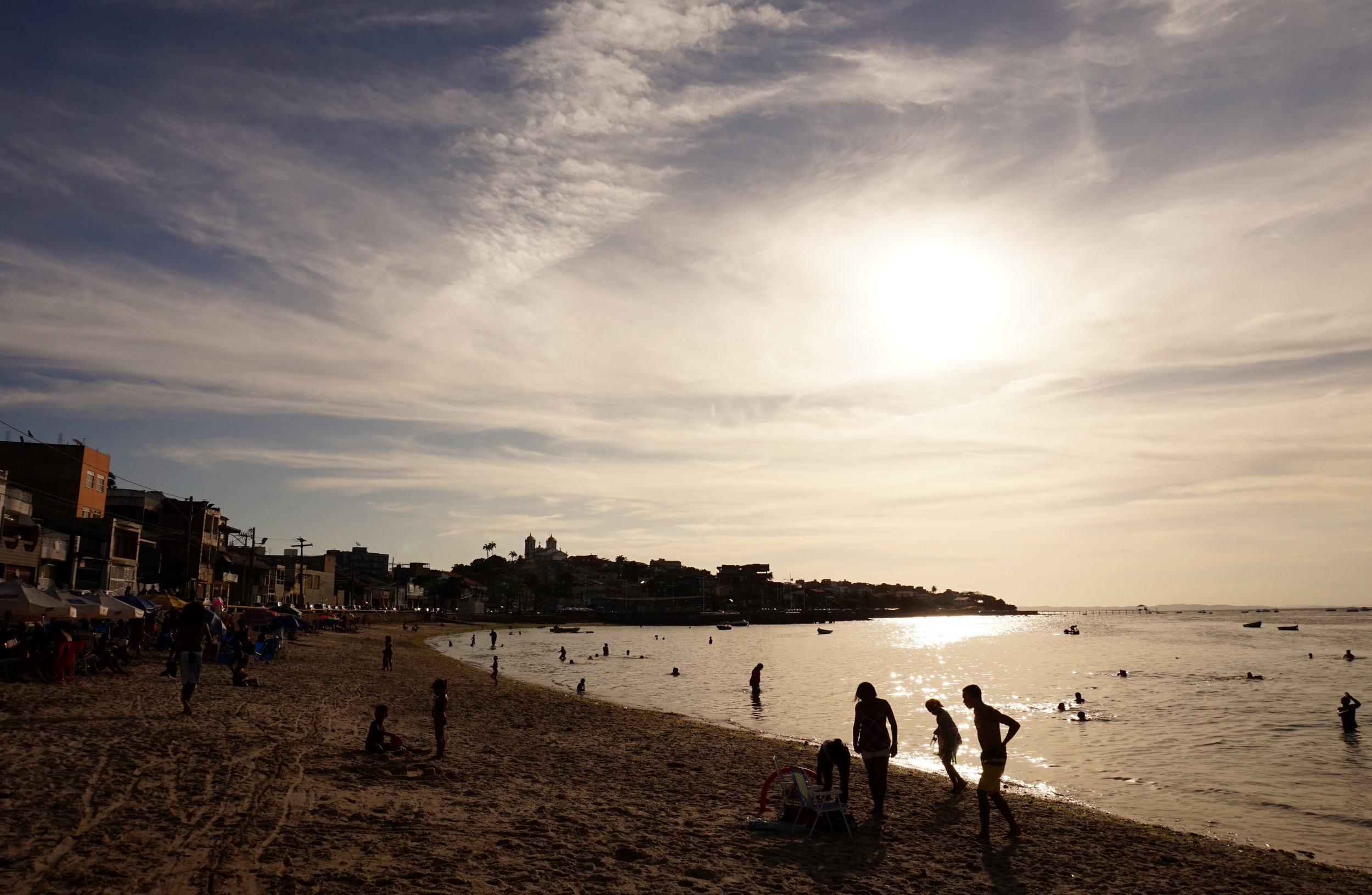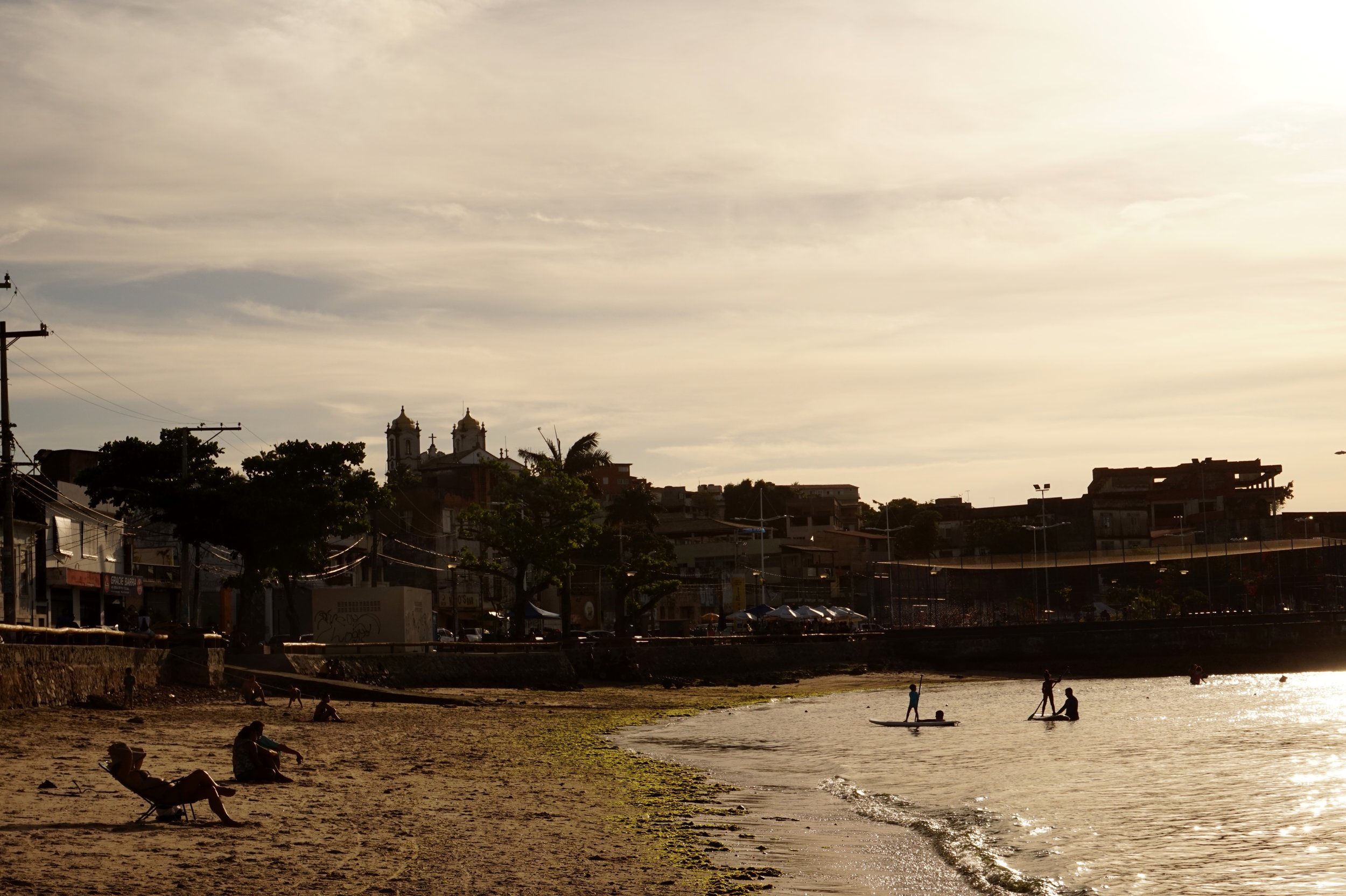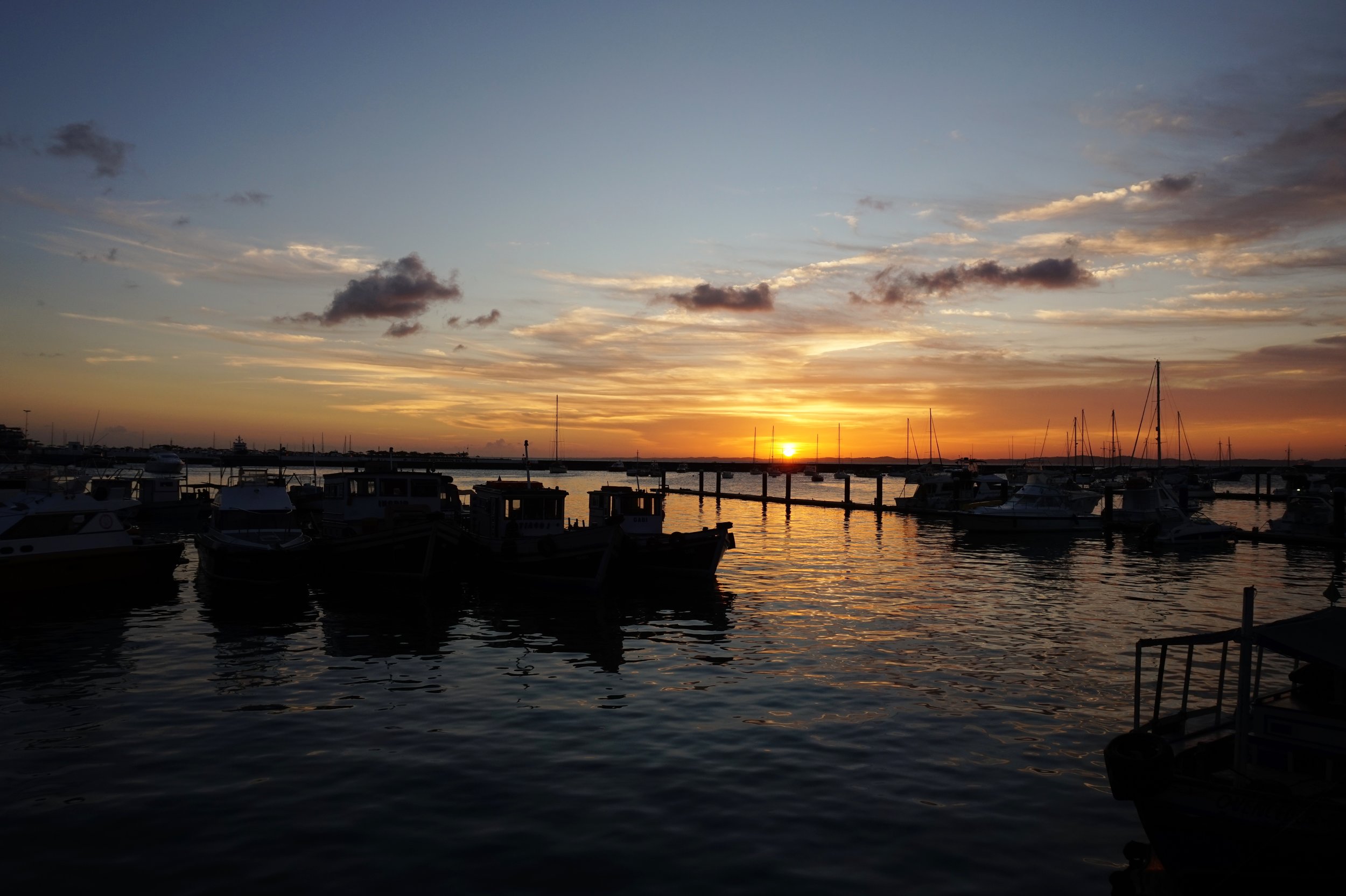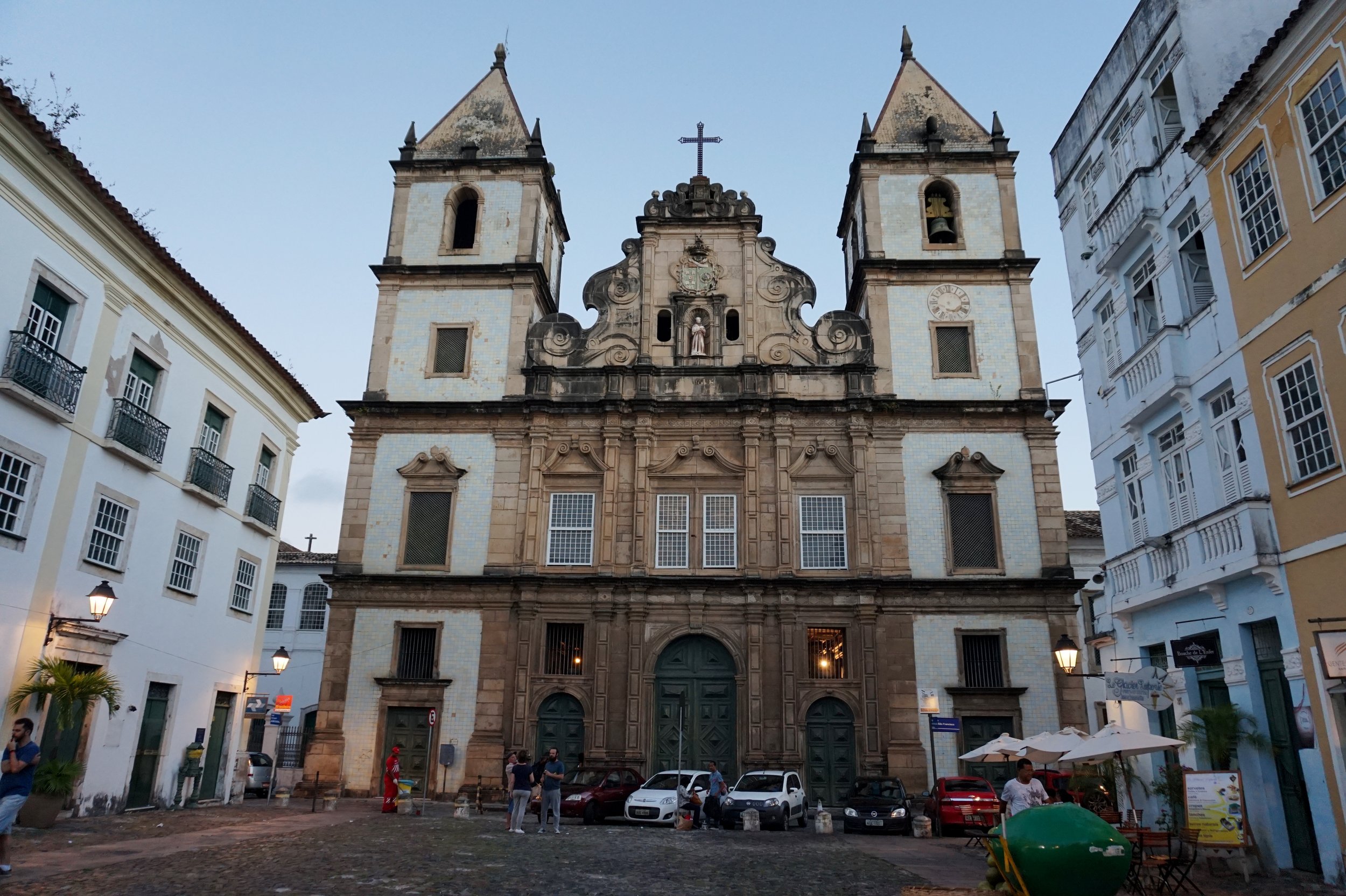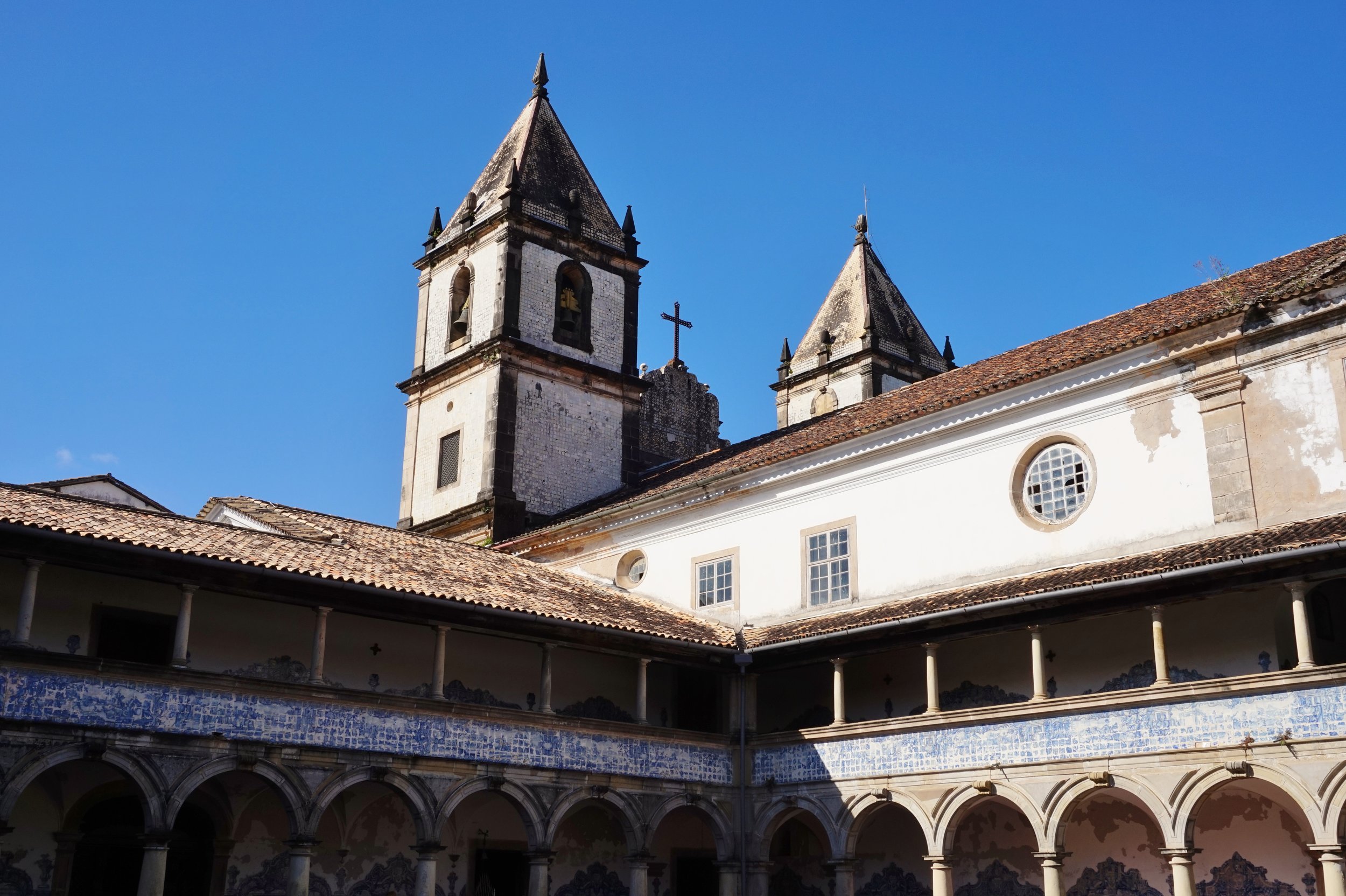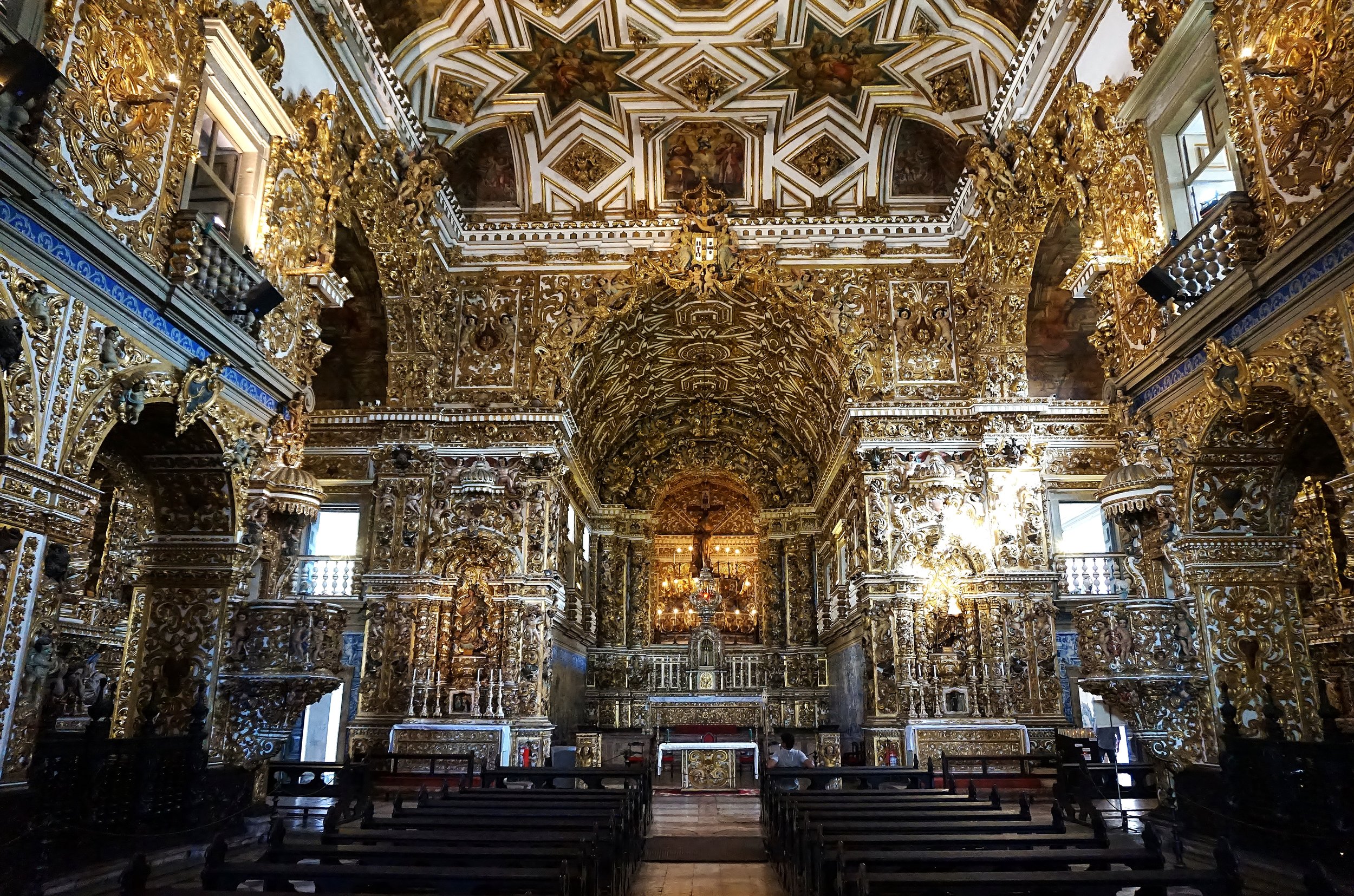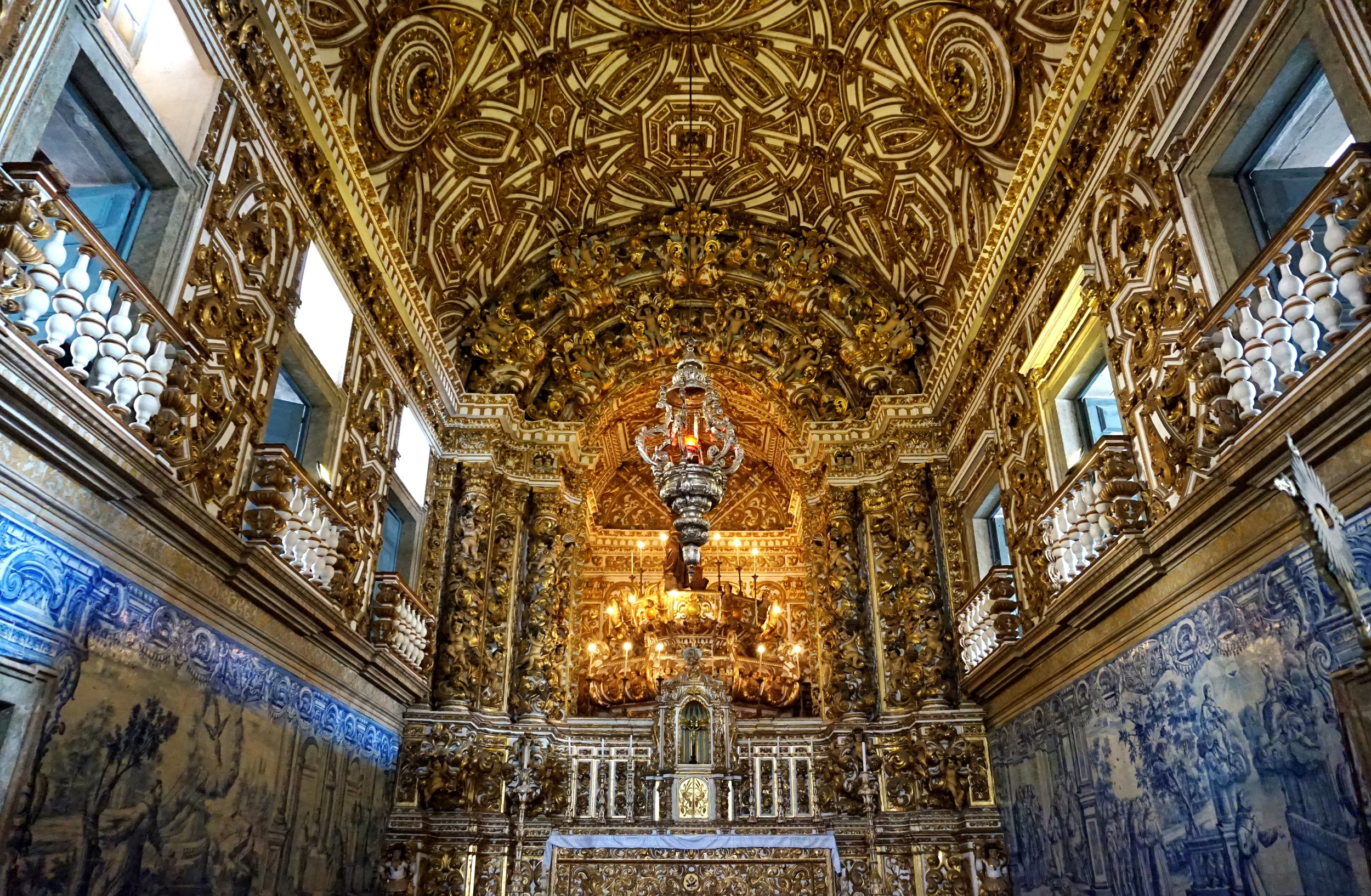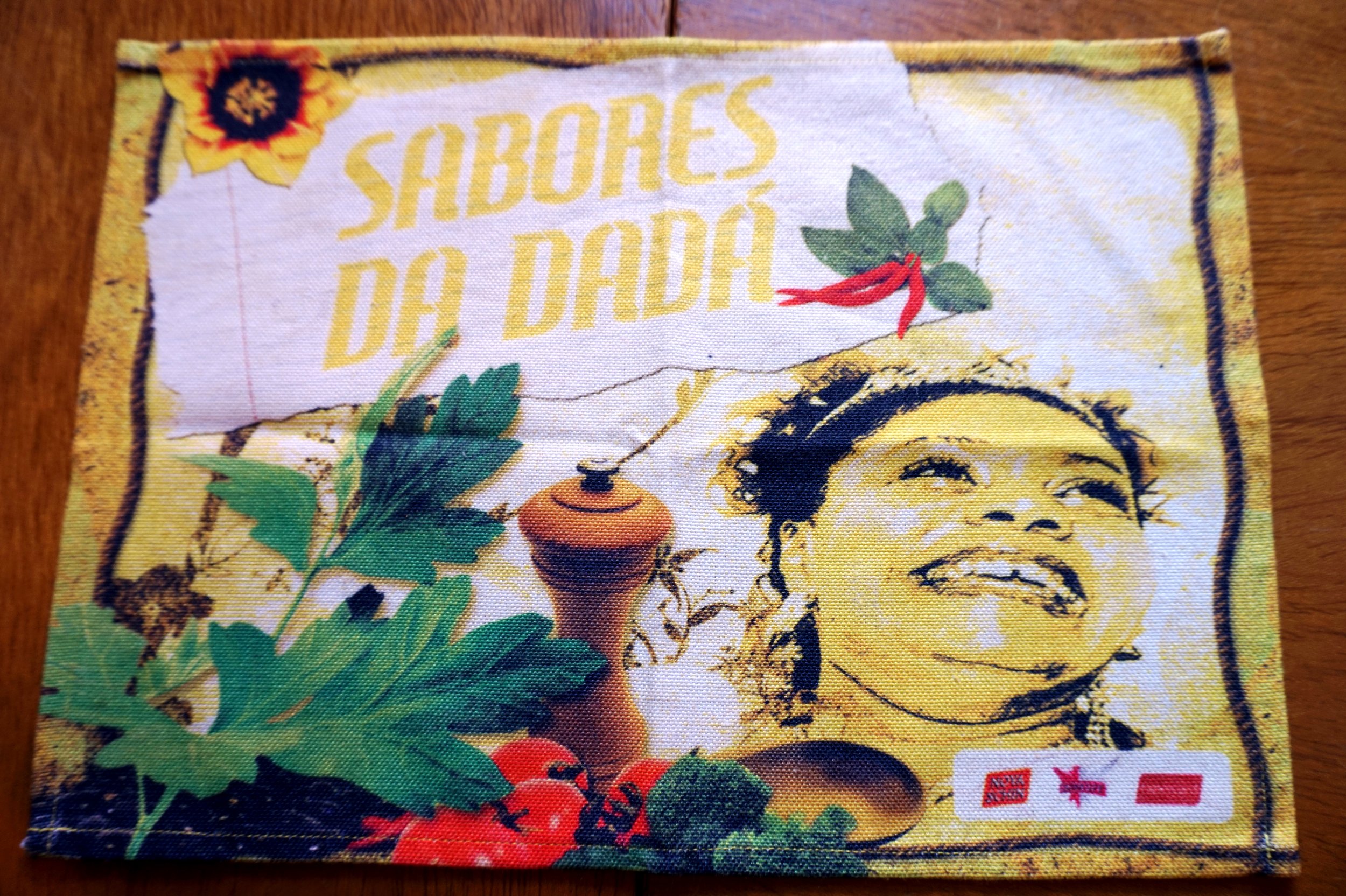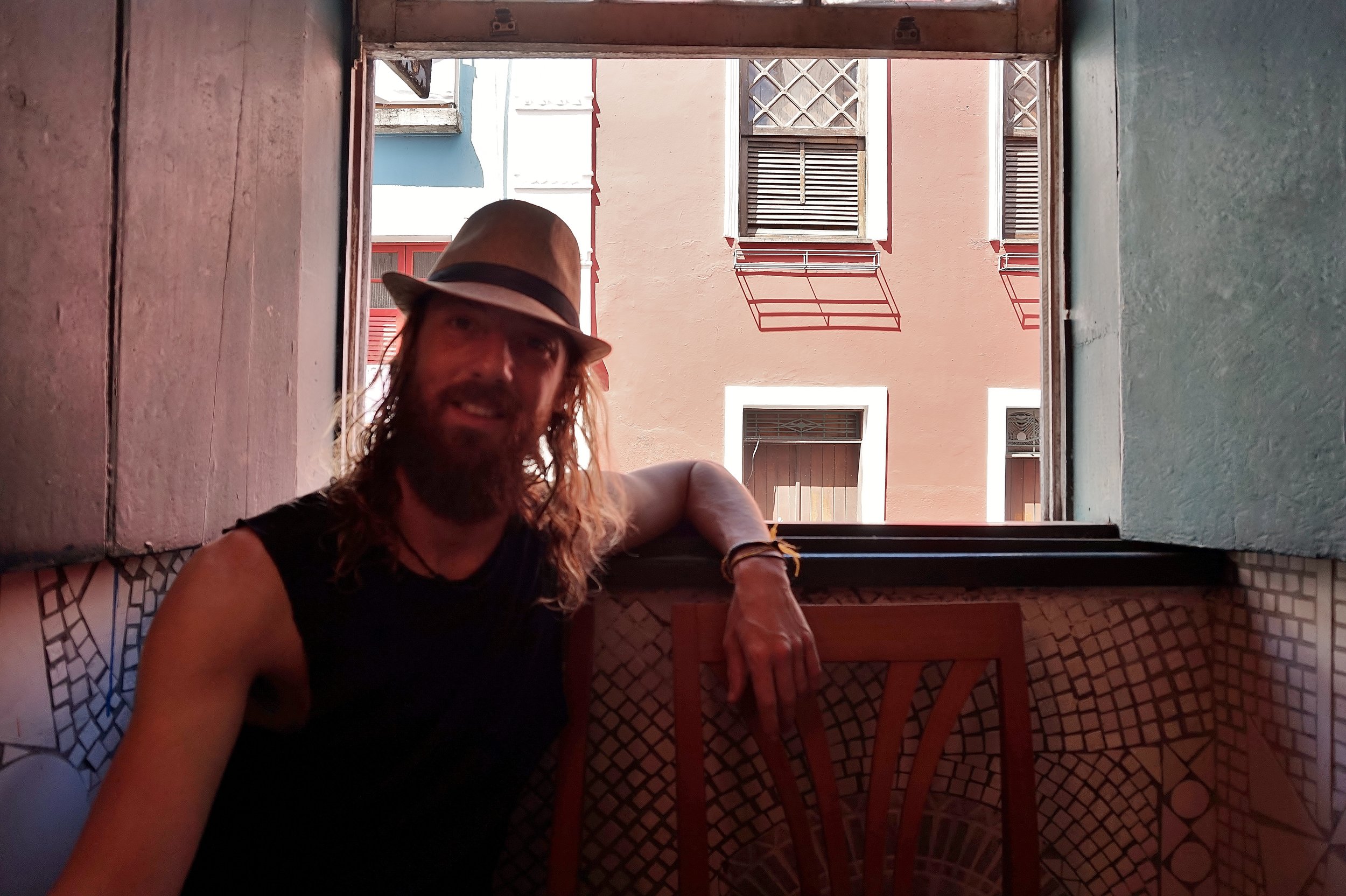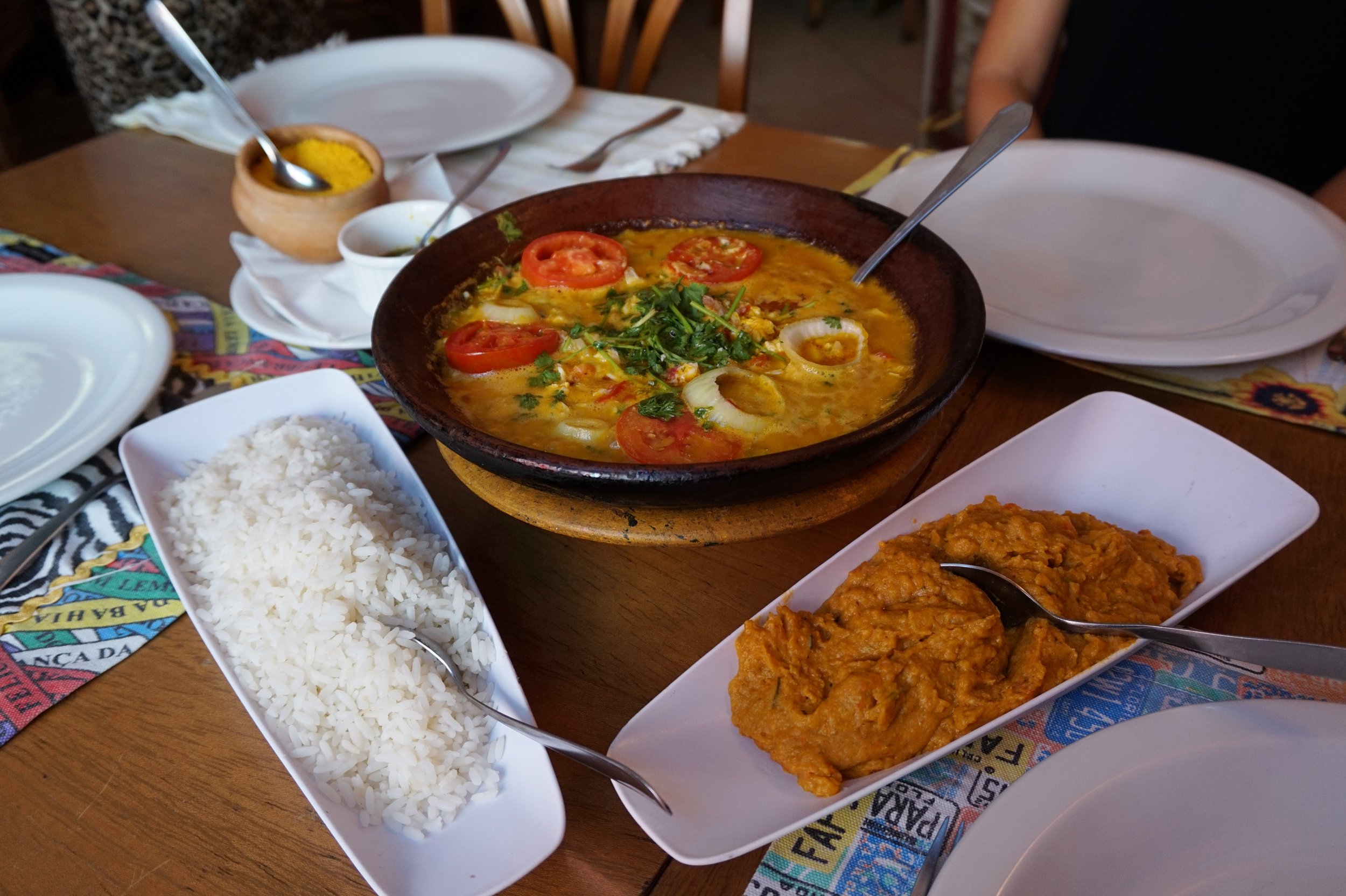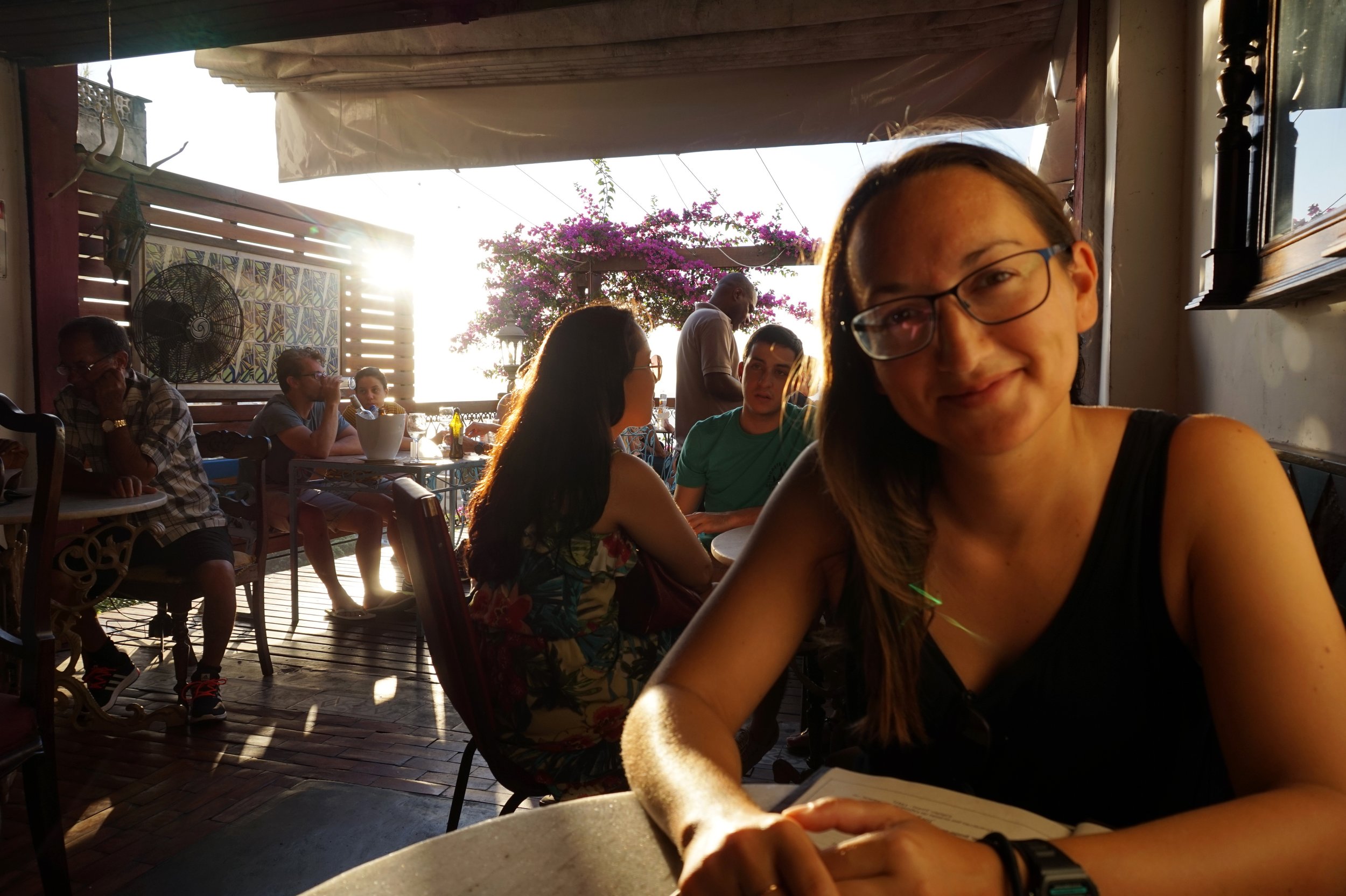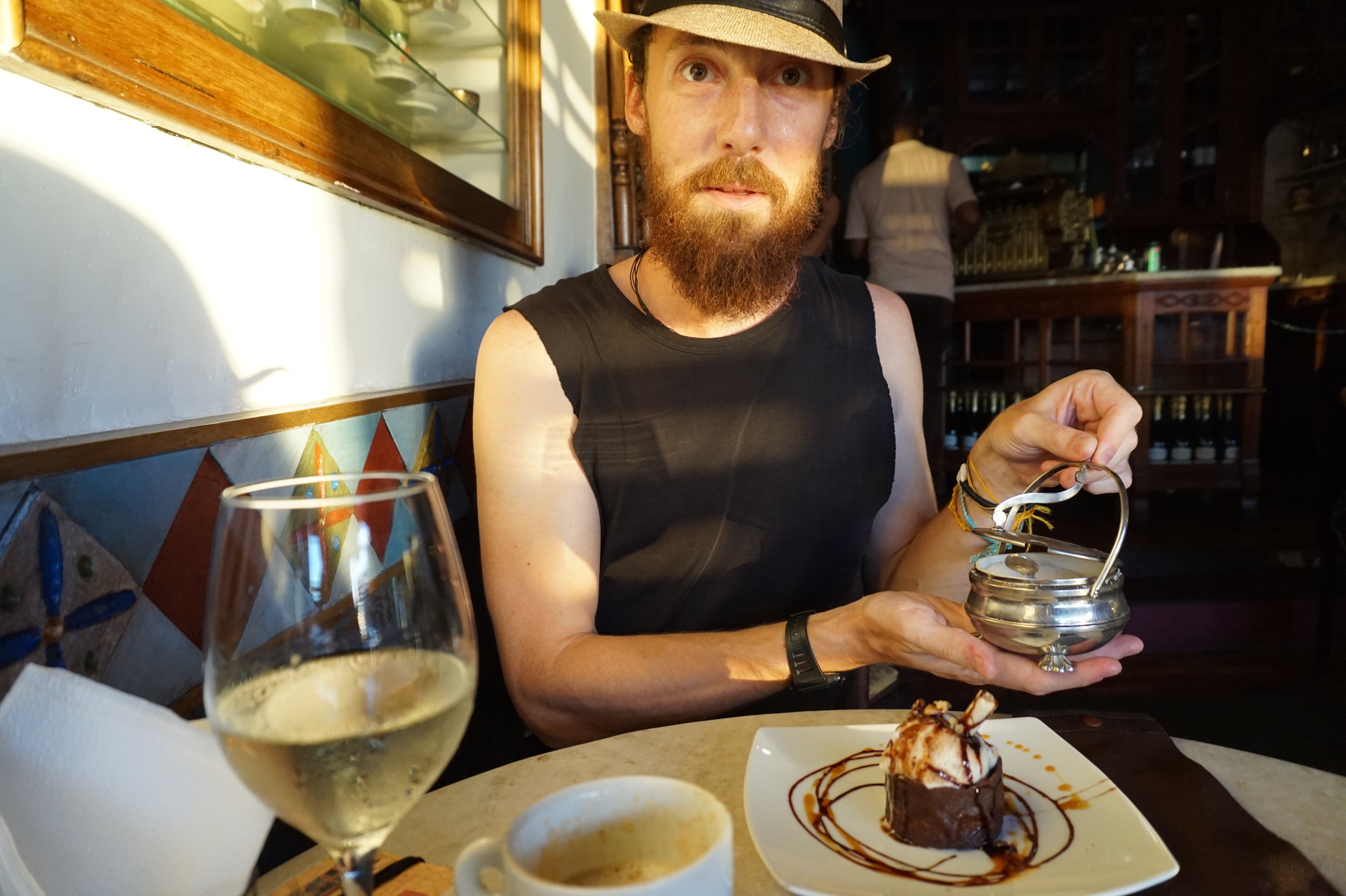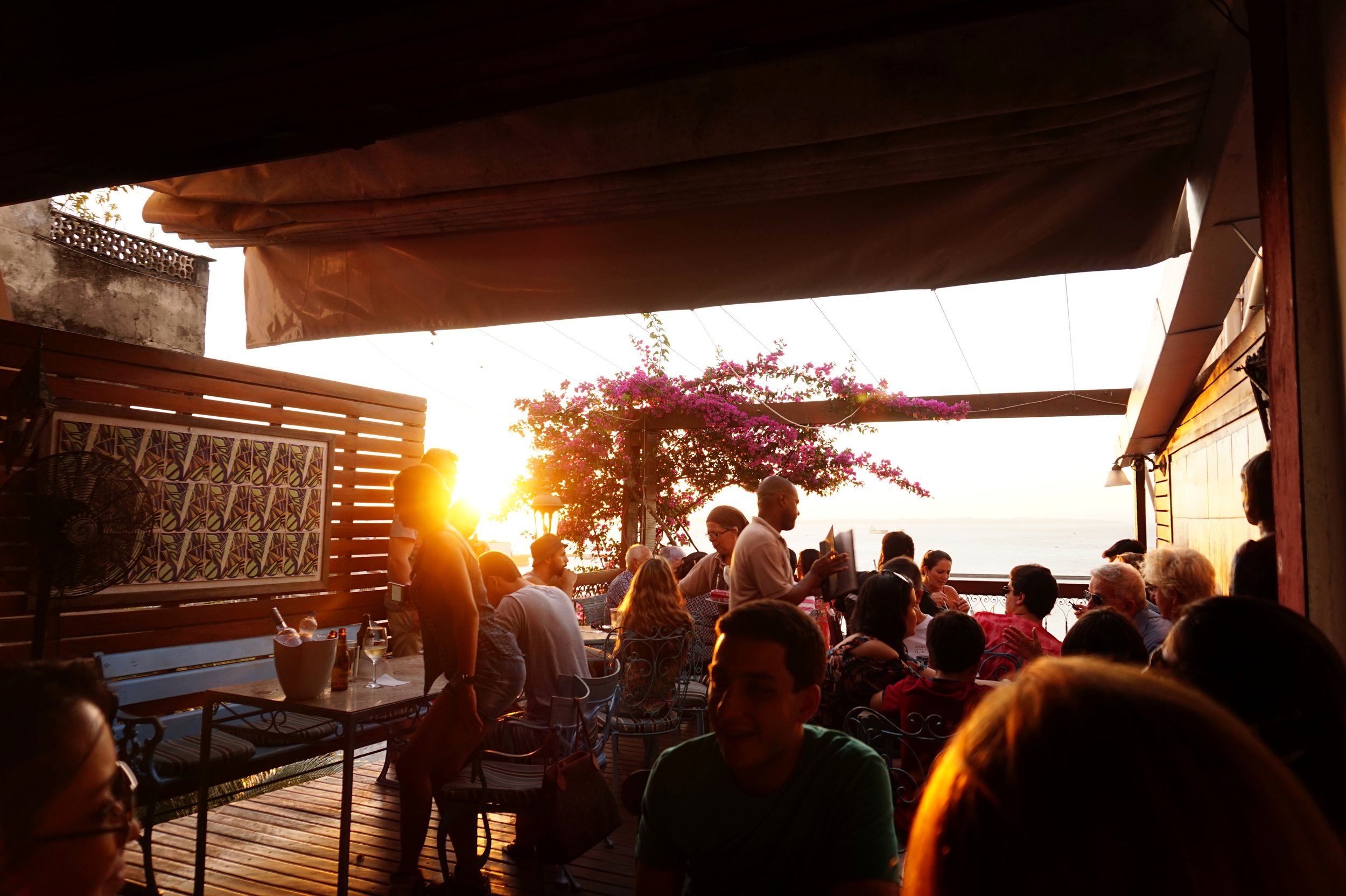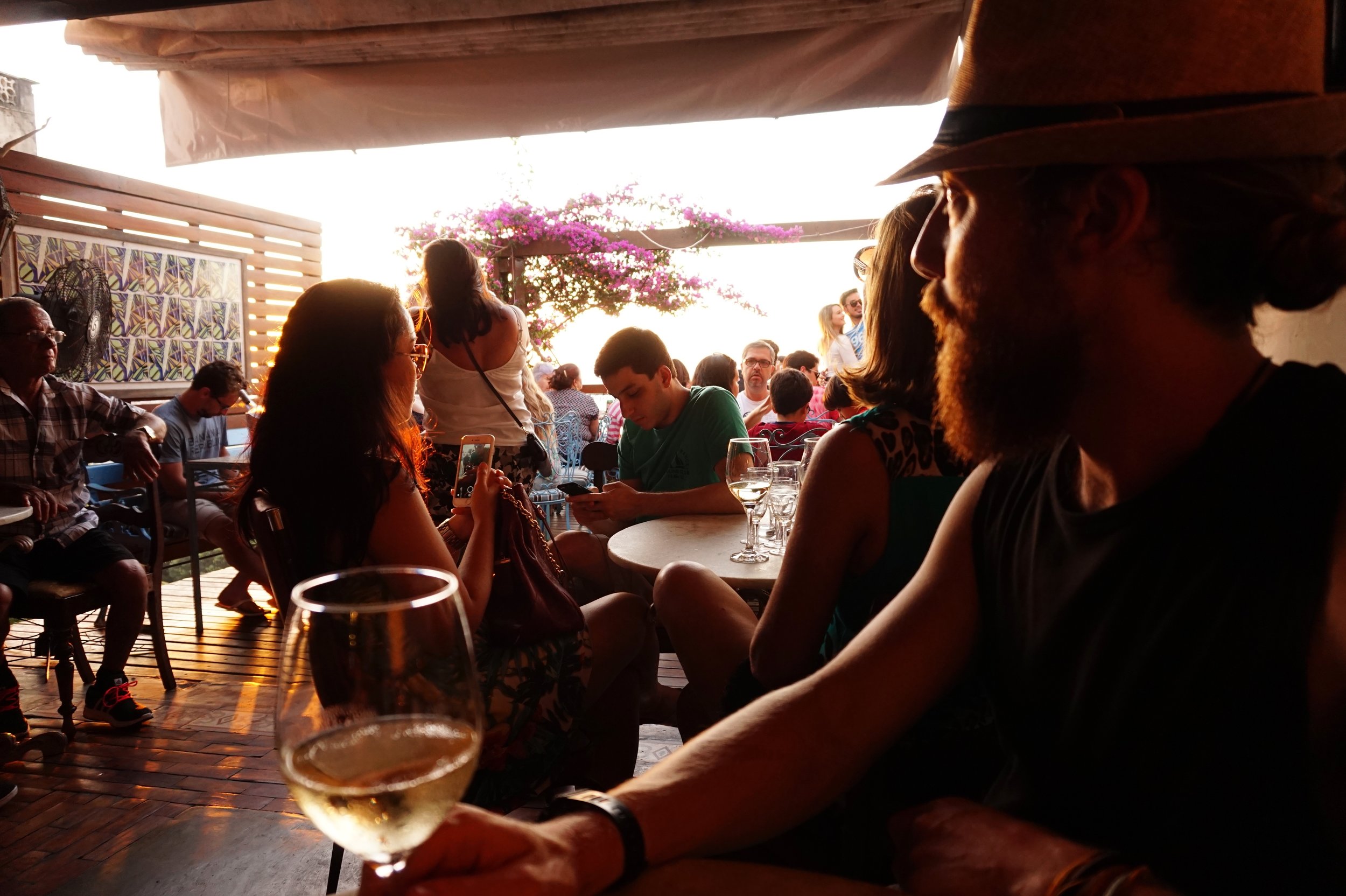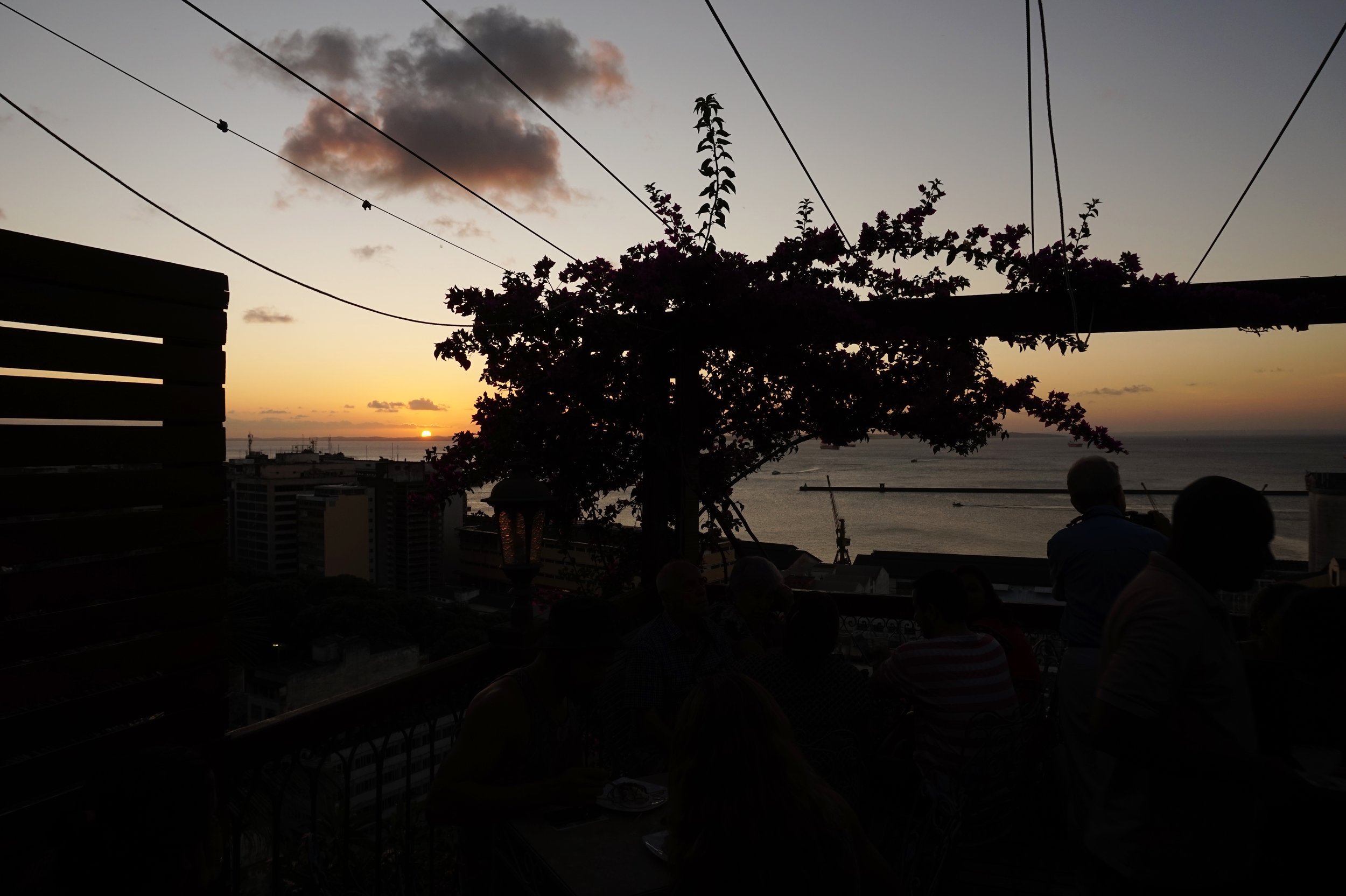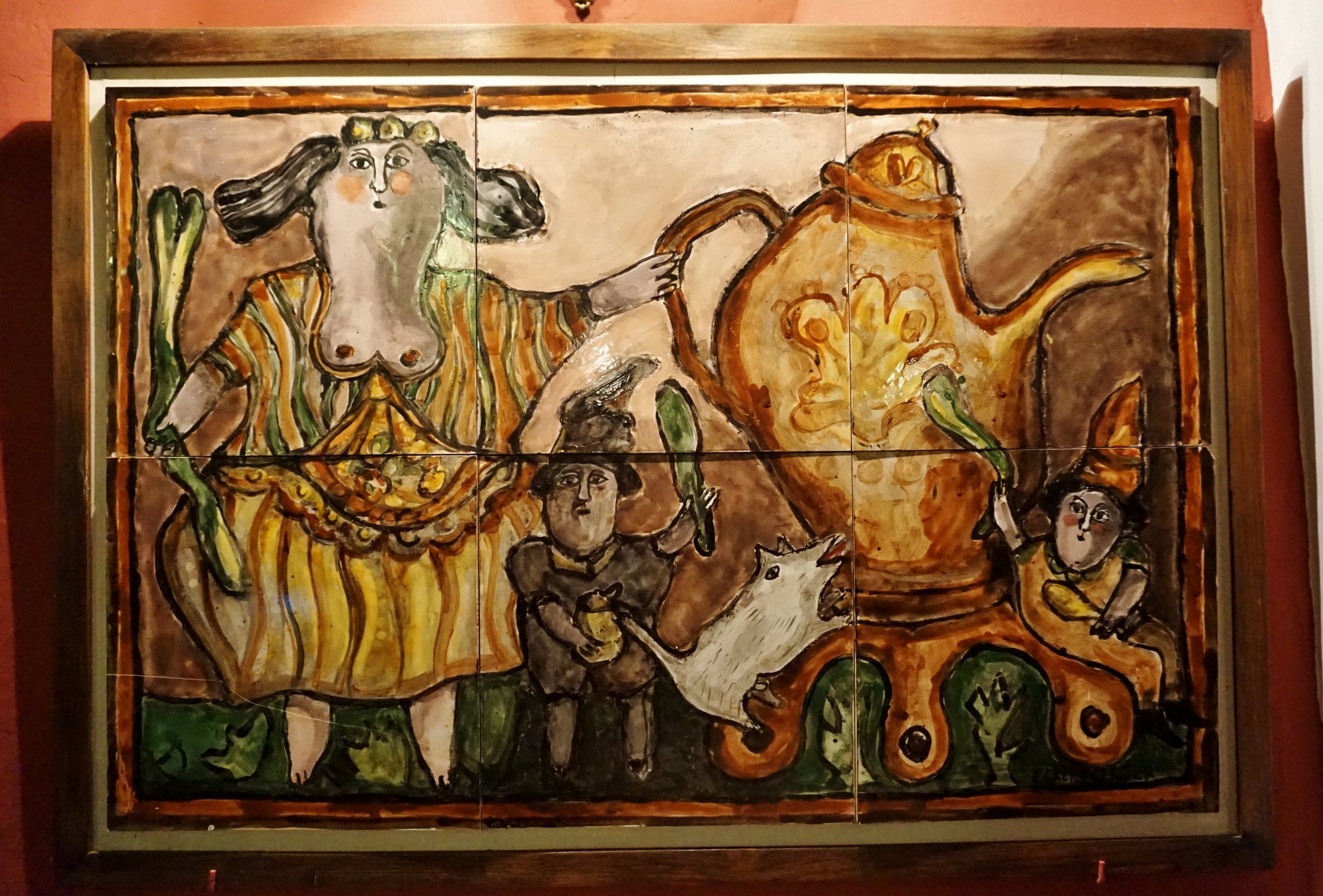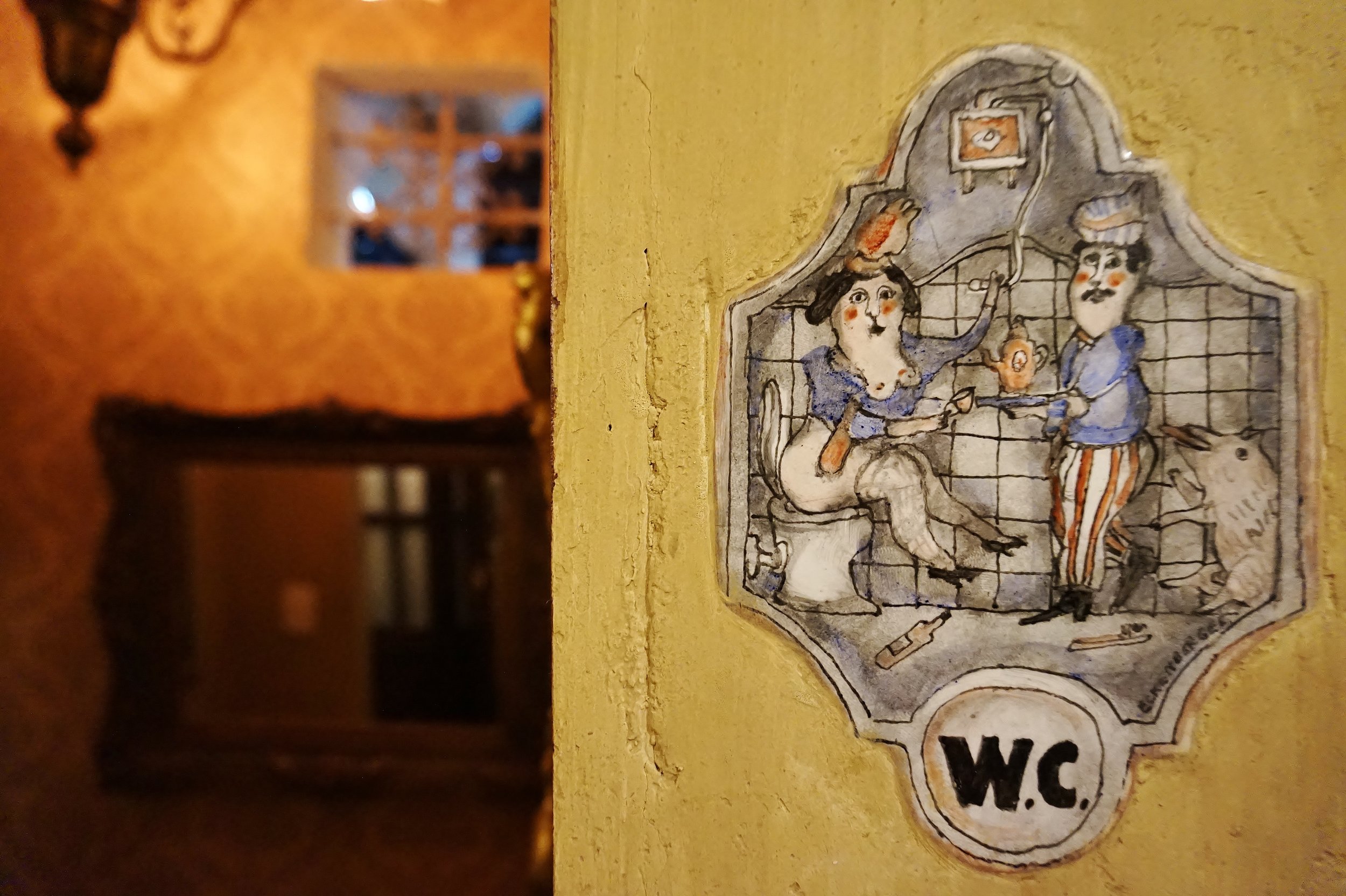SALVADOR - BAHIA

"If you're going to be pickpocketed or mugged in Brazil, Salvador is likely to be the place."
A quote from our lonely planet guide...!
Arriving in Salvador
After a five hour bus from Itacré to Bom Dispacho (R$45) and then an hour ferry (R$5) across Todos os Santos bay, we floated into Salvador harbour at 11pm. We jumped in an uber and arrived at the guest house around 11.15. It was dark, the place was deserted and we drove through some really dodgy looking neighbourhoods to get there, but the two lovely owners were incredibly welcoming and made us feel at home straight away. The hostel was in an old higgledy piggledy building and was a bit rough and ready, but we wouldn't have had it any other way. It was just down from the steep Largo do Pelourinho, the area where slaves were bought and sold. Now it's where you guy to buy a Michael Jackson t-shirt. Upon arriving our hosts immediately told us which streets were safe and which we should not go down. We felt a little trapped in the tourist bubble, having a 'zone' in which we could walk around freely but not venture outside of. A strong armed police presence reinforced this warning.
Salvador embodies the African soul of Brazil. It was founded by the Portuguese in 1549 and became the first drop of point for the thousands of African slaves brought to Brazil by ships. Here the descendants of the African slaves have kept traditions alive, from religion, food and music, building a new Afro-Brazilian identity. African drumming plays a big part here, with many drumming schools in the old town. Unfortunately Olodum weren't playing while we were in town, the band featured in Michael Jacksons 'They don't really care about us' video (see our Rio post for link) but we managed to catch another drumming school waking up the Pelourinho with their Saturday morning show.
Pelourinho and San Antonio
The city is divided by a steep cliff into the upper and lower city, the lower housing the port, industry and markets whilst the upper was more residential, with plenty of churches and colonial architecture. Tourists tend to stay in the heart of the old town in an area known as the Pelorinho. It was a maze of steep cobbled streets, filled with brightly painted and peeling colonial buildings. Some had seen better days, with doors and windows boarded up, roofs caving in and plants growing from within, but most had been preserved and looked bloody marvellous.
Walking around these streets and up into the San Antonio neighbourhood was a photographers dream, amazing colour, decay and details could be seen wherever you looked. Men played dominos in groups of 5 or 6 and the women wore traditional dress for the tourists benefit.
São Joaquim Market
One morning we teamed up with Florent, a French guy from our hostel who'd been living in Rio for a year and who spoke excellent Portuguese. We went to the São Joaquim Market. To get here you take a 1930's Art Deco elevator named Elevador Lacerda which costs 3p a ride from the cobbled rustic higher city to the industrial lower, with its towers of shipping containers, gigantic cranes and lots of graffiti.
Once inside the market, you really did have to be aware of everyone around you, as men with huge rusty metal wheelbarrows and carts hurtled down the narrow, crooked lanes, and definitely wouldn't have stopped or slowed down for something as insignificant as say a foot. Market stall owners were in much less of a hurry. Carefully preparing a pigs trotter by removing the skin with skill and a sharp knife.
We learnt how peanut butter is made by stumbling upon the peanut guy. We watched in awe as a massive bucket of roasted and de-skinned peanuts went in the top and peanut butter came oozing out the bottom, thick and shining with a thud into the container below. We were given a pot to try and it was delicious, 100% peanuts and nothing else. Florent swapped half of his with a guy unloading passion fruit from a truck to take his picture.
Other things for sale included live peacocks, goats and rabbits, woven baskets of any size, stacks of weird and wonderful fruits and veg, sling shots, every part of an animal including pigs heads and parts which we could not identify, tiny ceramics pigs (of which we bought two), giant wooden spoons, musical instruments, as well as many types of feijão beans of all colours and manioc flour. Three colourful birds perched high in a cage, sat and tweeted about the hustle and bustle below.
It was so interesting to walk around but by the end we needed a beer. We saw a guy asleep in his wheelbarrow and admired his ability to sleep through this chaos.
Barra
The lighthouse at Barra was the first to be built in South America. It was surrounded by an impressive fort and we had a good yet windy view from the top of the beaches and beyond. As Salvador is a port town, and we could see many boats queuing out to sea to drop off their cargo. Further round the bay was a very popular beach, you couldn't move for sun umbrellas!
Sunsets are always special occasions in Brazil and this one was no different. We sat with a beer on the grass behind the lighthouse and waited in anticipation. When the large glowing disc slipped behind the horizon, those gathered burst into applause. I like that.
The area behind the lighthouse quickly cleared, but the people only moved a short distance to the square nearby, with groups of family and friends sat around eating and drinking. Shouts of "cerveja cerveja" and "quijo" could be heard as street sellers went around selling beers and cheese. The cheese was heated on a makeshift 'BBQ' basically a small metal cooking pot with hot coals inside and fanned with a cd case. There were people old and young on roller blades and skate boards, the coolest skater had to be a girl of about 6 or 7 on an enormous longboard, with a broken arm.
Capoeira
As it neared 7pm, people all dressed in white began to gather in the square. They all had rope belts and had the name of a capoeira school on the back of their vests. Capoeira is a martial art developed in Brazil mainly by West Africans. It combines dance, acrobatics, high kicks, spins and balances, accompanied by an almost tribal sounding music played on a 'berimbau' that looks like a bow and is played with thin stick rubbed across the wire.
About 20 people formed a circle, with the band standing together, playing repetitive, trance like music whilst everyone else chanted along. "Ohhhhh Capoeira" the mestre invited different pairs to fight, queuing them up, down on one knee in front of the band. Kids of 5 were paired with adults of 40 to give the kids a go against experienced capoeira fighters, others would step in to take over when the kids got tired. The aim is to get as close to your opponent with a move whilst not ever touching them. Cartwheels, handstands, headstands, breakdance style moves on the floor, combined with anticipating what the other person will do next makes for some really interesting and intense manoeuvres. It seems there are some 'choreographed' moves, e.g. If your opponent goes down to the floor, you do a high kick over them, but we saw some really interesting sparing, like the time the mestre went into a hand stand and started moving round the circle on his hands, so the opponent did the same, and for 30 seconds they were walking round on their hands, close to one another, never taking their eyes off each other in case one came down and they needed to quickly respond. It was a really great insight into the sport and after each short match, they were all smiles, happy to have shared that experience. It seemed like no two dances were the same as there was such a variety of moves to chose from.
Amongst all the excitement in the square, a lone leathery old man in his late sixties wearing stripy shirt and hat, kicked off an imaginary football match with an imaginary ball. We were not sure who was winning, but it looked like a close game.
Pelourinho nights
Friday night was a big night in the Pelorinho. Huge numbers of people had descended on a hidden square to watch two live bands and dance along to the music. We arrived as the band was still setting up, but as soon as they got into full swing (actually, as they were doing their warm up) people begun to dance. And boy could they dance! Their moves defied the laws of physics with top halves of bodies mostly staying still, while hips and bums wiggled, gyrated and bounced in time to the beat. The 4 singers in the band had some top moves, bringing out routine after routine. There were several songs that the whole crowd knew, including the dance, but believe me it was much cooler than everyone doing the Macarena at a wedding. People really felt the music and the beat and even those who weren't really dancing still looked effortlessly cool, swaying or tapping along. We could just stand there in awe, awkwardly shuffling and having a go!
On a quieter night we went for a few beers in one of Pelorinho's cobbled side streets. Our evenings entertainment was a lady in the top window of the house who made a 'psssyuuuuu' noise to catch the attention of the waiter below. She would quickly lower down a basket (quite carelessly I must add, the basket was swinging all over the place, perilously close to whacking a passing couple on the head) with what looked like a huge bowl of mashed potato inside. She then pulled it up and sent down the main meal to accompany the potato. This continued throughout the night and became a sort of spectators sport to us, trying to guess what was inside, if anything would fall out and how many times she had to angrily whistle to catch his attention. She looked so pissed off up there in her window, kind of like Repunzal stuck in her tower, sending mashed potato down to her Prince Charming in the hope of being rescued. But old Prince Charming was equally sour faced (maybe he was the one who needed rescuing), until near the end of the night when both of us gave him a big smile and he finally returned the gesture.
The Church of Bonfim
North west of the city lies the unusual church of Bonfim.
In a room off the main church sat a priest, giving blessings to anyone who wanted one. He blessed families, babies, and also objects that people brung to him. He used a small magic wand like device, that when shook in the direction of the blessee, some holy water shot out the end and showered them. At one point, the holy water ran out, so his assistant unscrewed the lid, and filled it up from what looked like a ceramic drinking water fountain in the corner of the room. Nuns took photos of Christ on their smart phones and in a side room, a wax work penis hung from the ceiling. I should probably explain that last bit... people believed praying to Bonfim can heal bits that need healing, and there was an assortment of limbs hanging, from legs, hands, feet and arms, to bellies and penisis.
Outside on the church gates are thousands of brightly coloured ribbons. You tie them around your wrist or on the church gates using three knots and make three wishes. Once it falls off, people believe your wishes will come true. We had seen them being thrust upon unsuspecting tourists in the main square, hustlers tying them on before you know what's happening and then demanding R$20 or even R$50 for one! We bought 2 lots of 6 for R$5 here, and the seller than gave us one each to tie there and then onto the gate.
A plus of visiting this church is that it's a stone throw away from a much quieter beach than the one in Barra, with not a gringo in sight. We grabbed some chairs, a sun umbrella (essential in the scorching midday sun) and 4 cans of beer (complete with cool box) for R$15 and whiled away the afternoon. We were briefly interrupted by a gang of local girls aged 11-14 selling quails eggs who took quite an interest in us and laughed good naturedly at my attempt at conversing with them.
When traveling good sunsets are never hard to find. The sky was having a great time as we arrived back at the Elevator.
Ingreja São Francisco
The most impressive of the many churches in old Salvador was the Ingreja São Francisco, big and imposing from the outside and shining with gold on the inside
Bahian food
One day for lunch we visited Dada's restaurant, as recommended to us by Michael Palin in his book about his Brazil trip a few years ago. We loved his Himalaya book and reading it in Nepal and India so when we found the Brazil one, we jumped at the chance to read his fabulous descriptions and observations of life in Brazil. He recommended the Moqueca, a dish we fell in love with in Itacaré, only this time it was filled with mud crab, another Bahian delicacy.
Our last evening was spent in Cafélier in San Antonio, a gorgeous little place that didn't look like much from the front, but out back was a courtyard that looked out across the bay. A creeping plant was climbing its way up the trellis with beautiful purple flowers complimenting the bright blue sky. We had a couple of delicious cakes and a couple of delicious glasses of crisp Chilean Sauvignon blank. Now we can't wait to get to Chile!
However the highlight of this cafe was not the wine, or the cakes, or the view... It was a painting of a lady with boobs for a chin !
After a quick power nap, we headed out into the evening in search of music and good times. We found both up some stairs off one of the smaller streets in the Pelorinho. Men and women were sambaring, the band nearly didn't fit in the stage and the African drums made your bones shake. Again we tried our best to shake our gringo asses like the locals but to no avail. If the rest of South America has this much rhythm we must book some dance lessons soon!!
Next stop - Foz do Iguacu.

